inbox and environment news: Issue 523
January 23-29, 2022: Issue 523
Summer Babies 1: Butcher Bird + A 1953 Insight On These By Bill Grayden
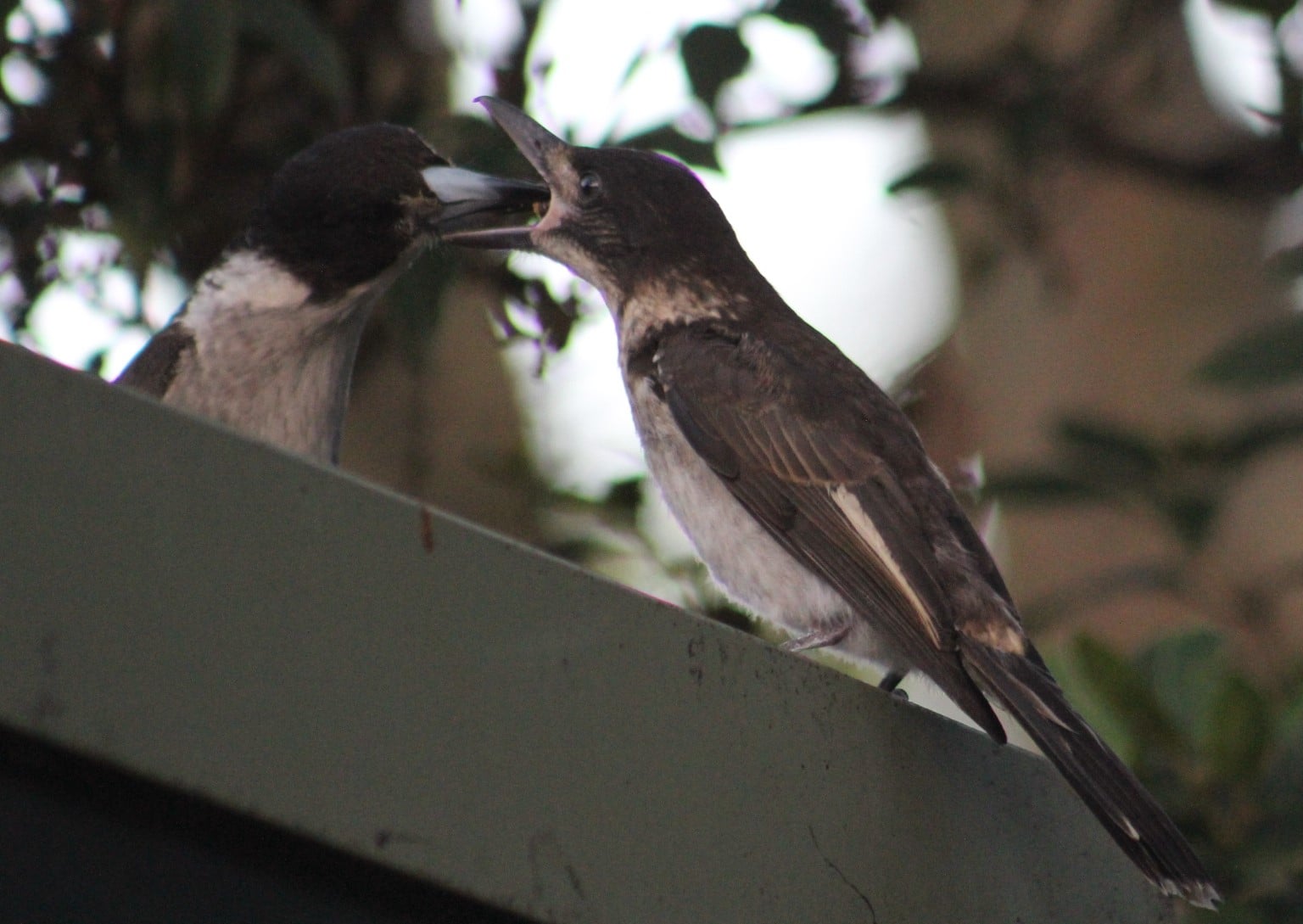
"Do Try This Scorpion," Said The Butcher Bird

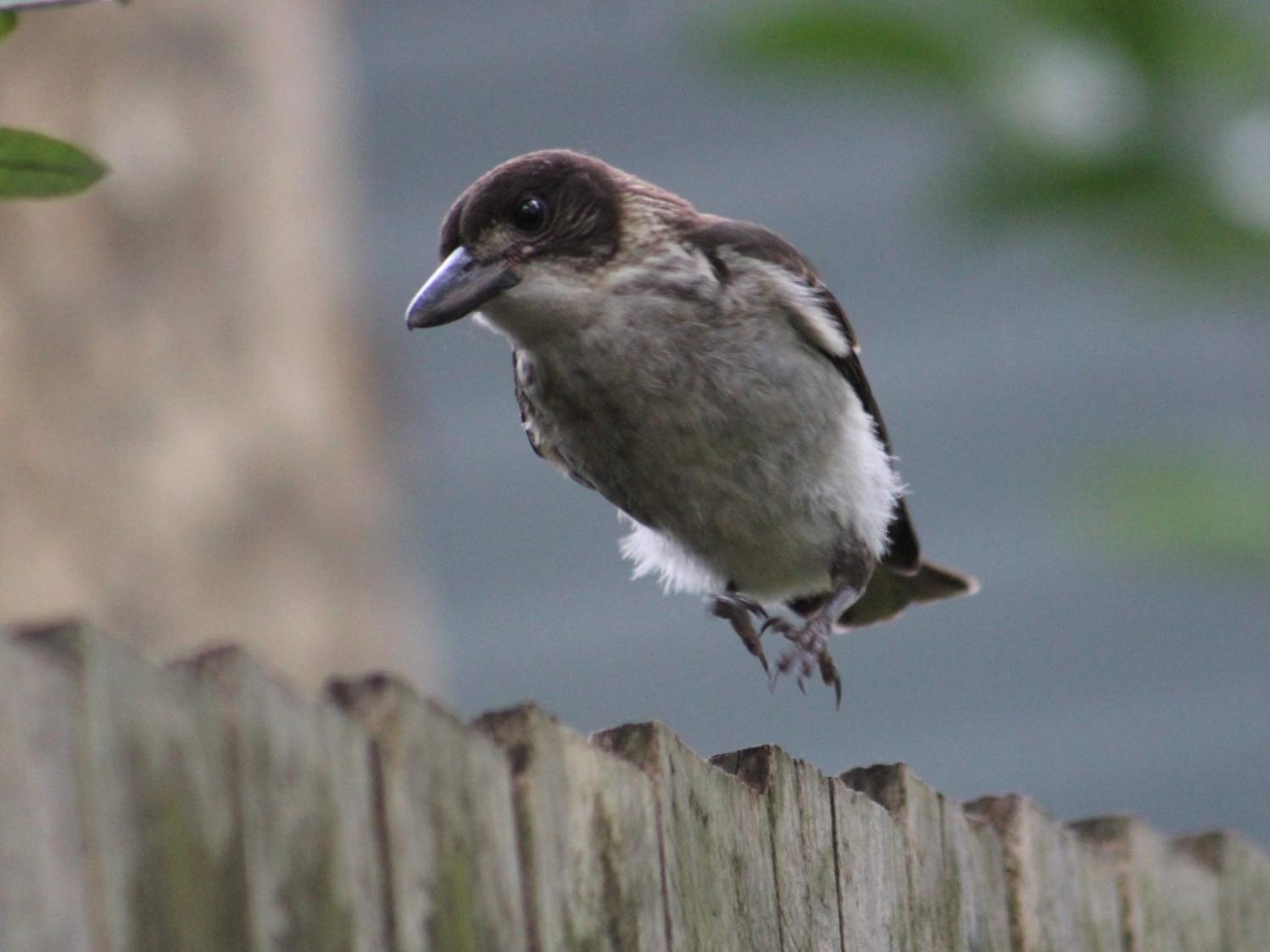
Summer Babies 2: Bluetongue Lizard
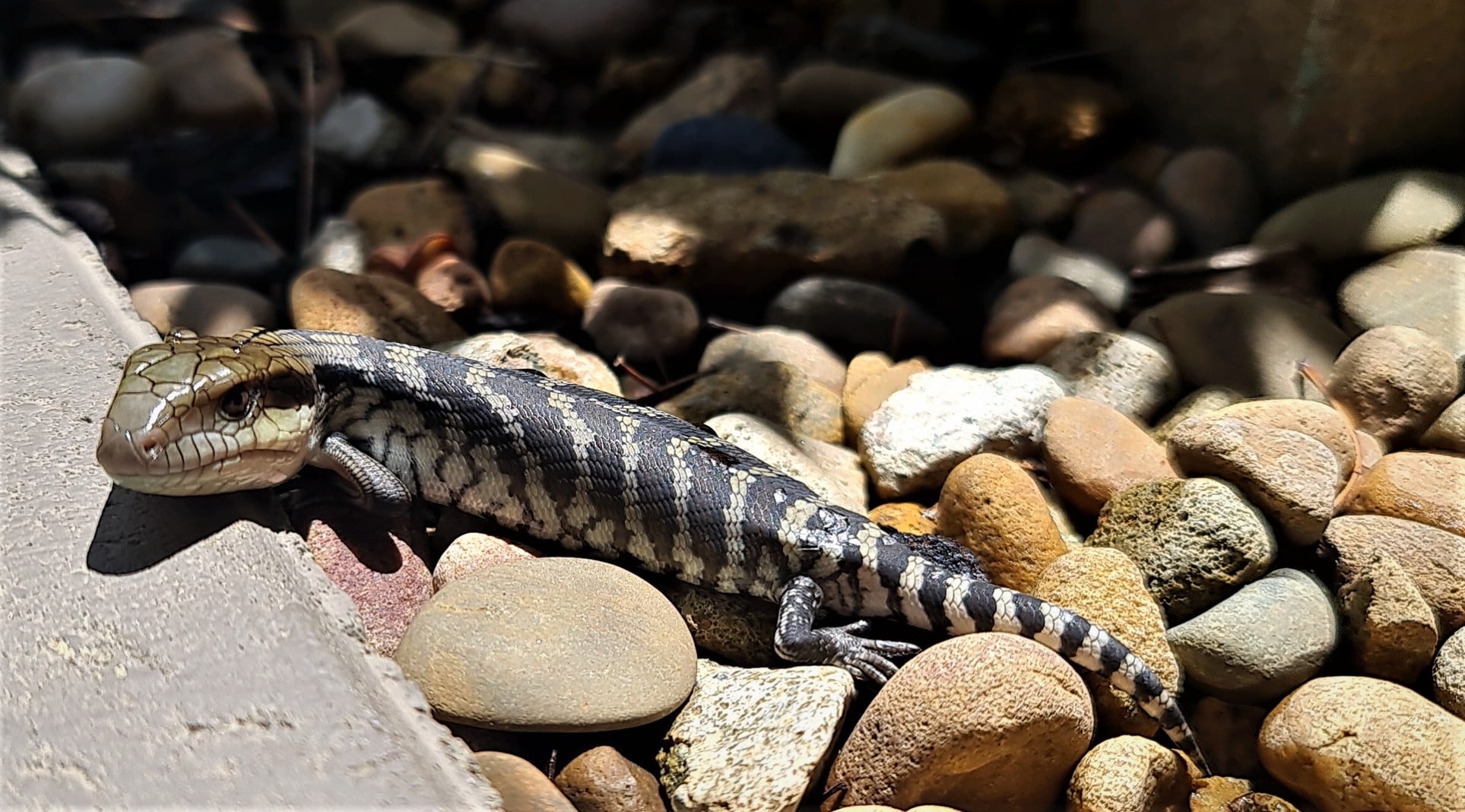
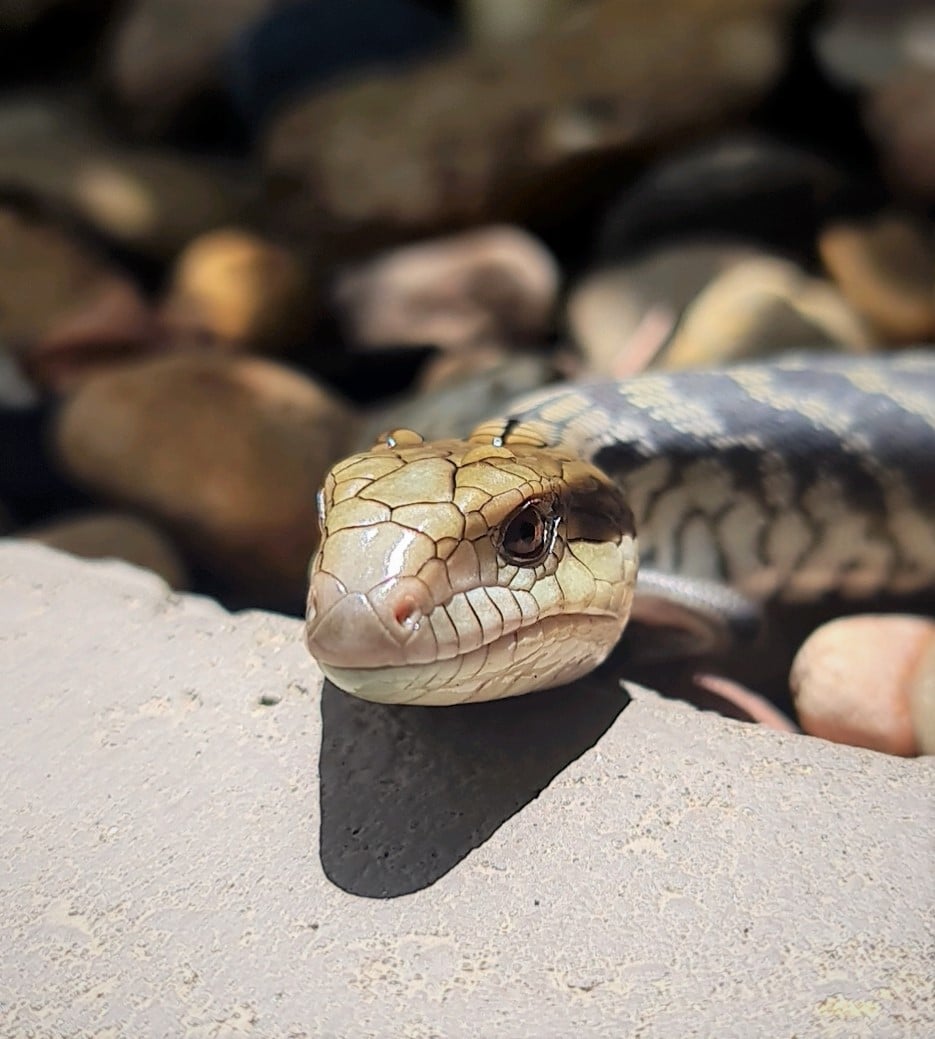
Avalon Dunes Bushcare
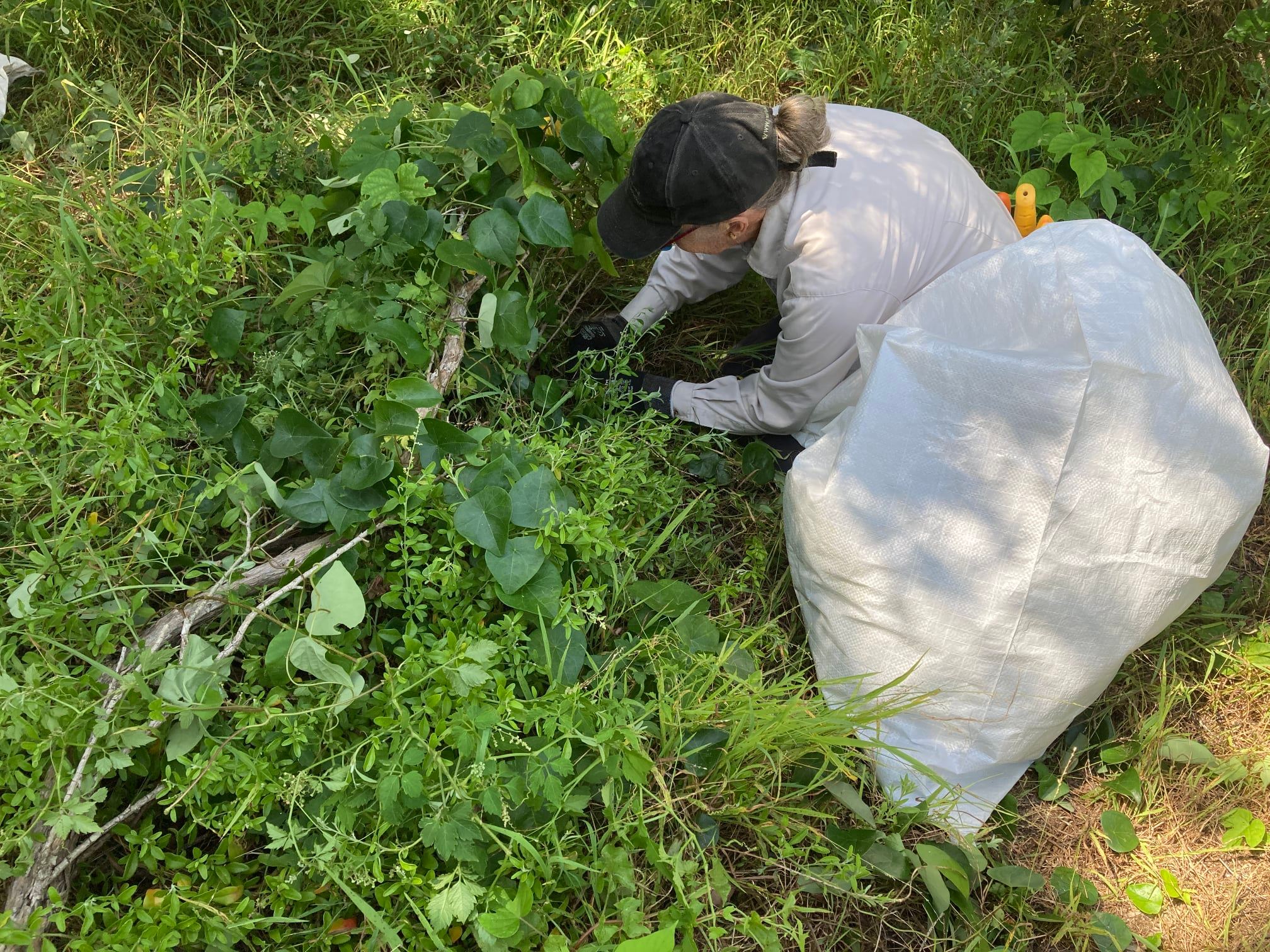
World Wetlands Day 2022
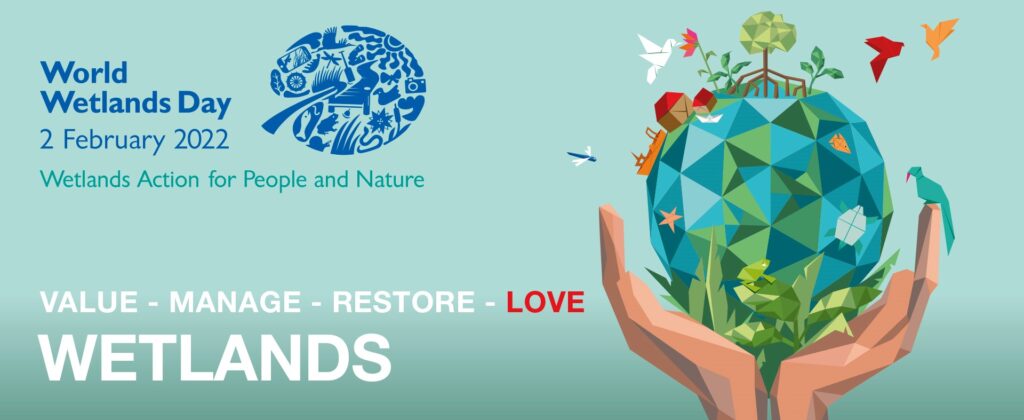
Birds Flock To Breed In North-West NSW Wetlands

Bushcare In Pittwater
Where we work Which day What time
Avalon
Angophora Reserve 3rd Sunday 8:30 - 11:30am
Avalon Dunes 1st Sunday 8:30 - 11:30am
Avalon Golf Course 2nd Wednesday 3 - 5:30pm
Careel Creek 4th Saturday 8:30 - 11:30am
Toongari Reserve 3rd Saturday 9 - 12noon (8 - 11am in summer)
Bangalley Headland 2nd Sunday 9 to 12noon
Bayview
Winnererremy Bay 4th Sunday 9 to 12noon
Bilgola
North Bilgola Beach 3rd Monday 9 - 12noon
Algona Reserve 1st Saturday 9 - 12noon
Plateau Park 1st Friday 8:30 - 11:30am
Church Point
Browns Bay Reserve 1st Tuesday 9 - 12noon
McCarrs Creek Reserve Contact Bushcare Officer To be confirmed
Clareville
Old Wharf Reserve 3rd Saturday 8 - 11am
Elanora
Kundibah Reserve 4th Sunday 8:30 - 11:30am
 Mona Vale
Mona Vale Mona Vale Beach Basin 1st Saturday 8 - 11am
Mona Vale Dunes 2nd Saturday +3rd Thursday 8:30 - 11:30am
Newport
Bungan Beach 4th Sunday 9 - 12noon
Crescent Reserve 3rd Sunday 9 - 12noon
North Newport Beach 4th Saturday 8:30 - 11:30am
Porter Reserve 2nd Saturday 8 - 11am
North Narrabeen
Irrawong Reserve 2nd Saturday 2 - 5pm
Palm Beach
North Palm Beach Dunes 3rd Saturday 9 - 12noon
Scotland Island
Catherine Park 2nd Sunday 10 - 12:30pm
Elizabeth Park 1st Saturday 9 - 12noon
Pathilda Reserve 3rd Saturday 9 - 12noon
Warriewood
Warriewood Wetlands 1st Sunday 8:30 - 11:30am
Whale Beach
Norma Park 1st Friday 9 - 12noon
Western Foreshores
Coopers Point, Elvina Bay 2nd Sunday 10 - 1pm
Rocky Point, Elvina Bay 1st Monday 9 - 12noon
Gardens And Environment Groups And Organisations In Pittwater
Sydney Wildlife Rescue: Helpers Needed
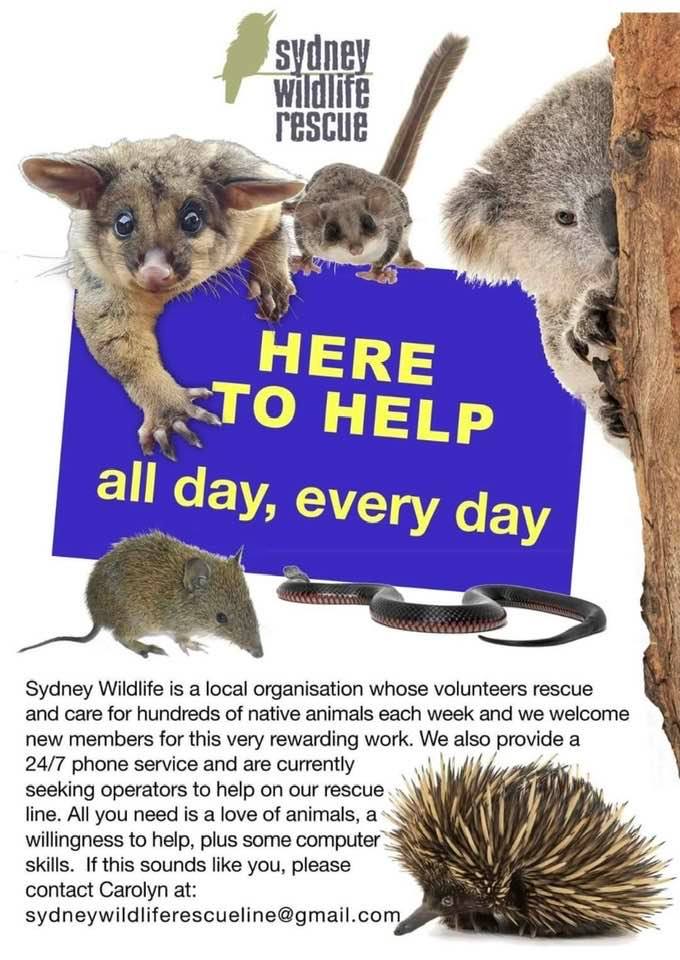
Citizen Scientists Needed To Help Record Impact Of Fires On Biodiversity
January 18, 2022
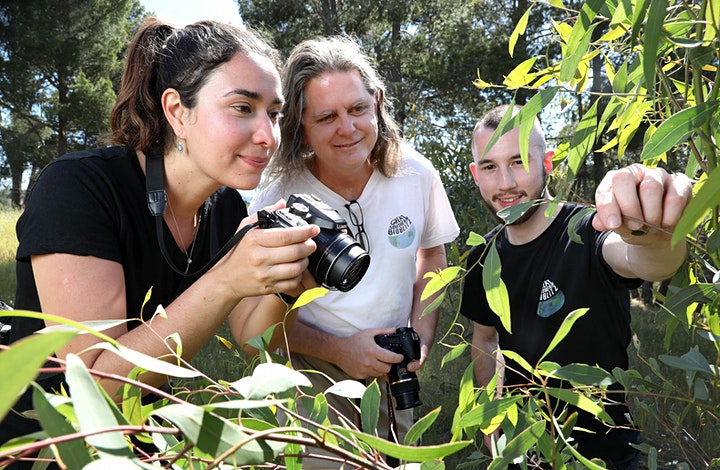 UNSW Sydney scientists are behind a citizen science event that will document the bushfire recovery of plants, animals and fungi across three bushfire affected regions in New South Wales.
UNSW Sydney scientists are behind a citizen science event that will document the bushfire recovery of plants, animals and fungi across three bushfire affected regions in New South Wales.
The Big Bushfire BioBlitz starting on February 25 is a series of weekend-long events which will generate new evidence on the impacts of large-scale fire on biodiversity.
The BioBlitzes will take place in the Gondwana Rainforests of Washpool National Park, the Blue Mountains World Heritage Area, and Murramarang National Park on the south coast.
Thomas Mesaglio, iNaturalist curator and PhD candidate at the UNSW Evolution & Ecology Research Centre, said that the BioBlitzes will give people the opportunity to contribute meaningful biodiversity data that inform our understanding of how the environment recovers after large scale bushfires, and in turn contribute to research and conservation.
“A ‘bioblitz’ is a focused effort to record as many species as possible in a defined location within a limited period of time,” Mr Mesaglio said.
“Citizen science events such as bioblitzes provide an invaluable opportunity to maximise the amount of data collection, intensely focusing on particular areas, as well allowing people of all skill levels to be involved.
“Participants get to interact with and learn from experts, and also offer their own local expertise and insights to the experts, so it’s a fantastic two-way transfer of knowledge.
“These events are also great for motivating participants to become long-term contributors to citizen science platforms such as iNaturalist.”
Experts – including from one of the partner scientific organisations, the Australian Museum – will lead biodiversity events over the weekends.
Casey Kirchhoff, PhD candidate at the UNSW Centre for Ecosystem Science, founded the Environment Recovery Project on the iNaturalist website after the devastating Southern Highlands’ Morton bushfire destroyed her Wingello home in January 2020.
“Citizen scientists have been really motivated since the 2019-2020 bushfires,” Mrs Kircchoff said.
“We’ve already had over 17,500 observations of bushfire recovery submitted to the Environment Recovery Project.
“We’ve been delayed by COVID-19, but it’s great to finally have the opportunity to engage more directly with some of the bushfire impacted communities through citizen science at the bioblitzes.
“The more observations we can collect, the more we will know about the impact of the fires on our environment.”
While not everyone will be able to make it to an in-person bioblitz, everyone who can access a bushfire-impacted area right across Australia is encouraged to participate.
“The Big Bushfire BioBlitz iNaturalist project will be open to every citizen scientist keen to ‘bioblitz’ their own area, no matter if they’re in Western Australia or Kangaroo Island,” Mrs Kirchhoff said.
The iNaturalist community has more than 88 million biodiversity records and links to Australia’s leading open-access biodiversity data platform, the Atlas of Living Australia, where everybody from scientists and policymakers to the general public can access a wealth of biodiversity information.
The bioblitzes are supported through the Australian government’s Regional Bushfire Recovery Fund and UNSW’s Centre for Ecosystem Science, in partnership with the Atlas of Living Australia, Minderoo’s Fire and Flood Resilience Initiative and the Australian Citizen Science Association.
- BioBlitz 1: Blue Mountains, Friday 25 February – Sunday 27 February 2022
- BioBlitz 2: Washpool National Park, Friday 4 March – Sunday 6 March 2022
- BioBlitz 3: Murramarang National Park, Friday 11 March – Sunday 13 March 2022
Register for the Big Bushfire BioBlitz.
The Atlas of Living Australia is Australia’s national biodiversity data infrastructure funded by the National Collaborative Research Infrastructure Strategy (NCRIS) and hosted by Australia’s national science agency, CSIRO. image; Scientists are hoping that people of all skill levels will get involved in the forthcoming 'bioblitzes' which will see citizen scientists record as many species as possible over three weekends. Photo: Dean Martin 2021 (CC-BY-NC).
Aboriginal Land Claim Granted On Reserve At Naremburn
January 17, 2022
 A total of 1.51 hectares of Crown land will be transferred to the ownership of the Metropolitan Local Aboriginal Land Council after an Aboriginal land claim was approved over the Talus Street Reserve at Naremburn, on Sydney’s north shore.
A total of 1.51 hectares of Crown land will be transferred to the ownership of the Metropolitan Local Aboriginal Land Council after an Aboriginal land claim was approved over the Talus Street Reserve at Naremburn, on Sydney’s north shore.
Talus Street Reserve, at the headwater of Flat Rock Creek, features bushland, walking tracks, picnic tables, eight tennis courts, a clubhouse and parking area.
The land claim by the NSW Aboriginal Land Council was granted after the land was found to be claimable on the date of the claim, after Willoughby City Council leases on the site had been ruled invalid by the Supreme Court.
Agreement will be sought from the land council to create easements to ensure continued public access on walking trails, and for site maintenance access when needed.
Sections of land will be retained for the essential public purposes of a public road, public access, maintenance, and stormwater.
Metropolitan Local Aboriginal Land Council chair Allan Murray said the land will support social, cultural and economic benefits for the Aboriginal community, which in turn benefits the broader community.
“As the new owners, we look forward to moving ahead and undertaking the necessary due diligence of working with the community to understand who the stakeholders, users of the site and surrounding communities are,” Mr Murray said.
“Once we know this, and with our members’ support, Metropolitan LALC will be able to make an informed decision and plan for the site’s future. This is an exciting time for Metropolitan LALC and our membership.”
Willoughby City Council, which previously managed the reserve, welcomed the ‘momentous’ decision to transfer the land under the Aboriginal Lands Rights Act 2016.
“We respect and support the NSW Government’s decision to grant the claim made by the Land Council as the owners and custodians of this beautiful land. Willoughby Council is committed to working collaboratively and positively with the Land Council to ensure a smooth transition,” Willoughby Mayor Cr Tanya Taylor said.
“On behalf of the community, Council acknowledges the rich indigenous history of the Gammeraygal people in the area. The transfer will embed this significant indigenous heritage, drive cultural and social outcomes as it affirms Aboriginal Land Rights and supports reconciliation.”
Image: Talus Street Reserve
NSW Campaigns Clean-Up And Reduce Litter
January 19, 2022
An independent evaluation of the state’s Litter Prevention Program has shown litter has reduced by 43 per cent as part of the NSW Environment Protection Authority’s (EPA) successful Waste Less, Recycle More campaigns since 2012.
The EPA has received a positive evaluation of its nine-year Litter Prevention Program that shows the reductions in litter surpassed the former Premier’s Priority 2020 40 per cent target and has allowed us to set ambitious future litter reduction targets.
EPA Executive Director, Engagement, Education and Programs, Liesbet Spanjaard said this encouraging result has enabled the setting of a new target of reducing litter by a further 60 per cent by 2030, outlined in the Waste and Sustainable Materials Strategy 2041.
“Over-achieving on the former Premier’s Priority target and reducing litter by 43 per cent enables us to continue to expand on the successful path that the Waste Less Recycle More campaigns have laid out," Ms Spanjaard said.
“The independent evaluation demonstrates that the Litter Prevention Program is providing value for money. Evidence in the report indicates that the program provides a net economic benefit to the people of NSW both through direct savings on litter clean-up and through indirect effects of improved amenity in communities and reduced environmental harm.”
Highlights of the nine-year $50 million Litter Prevention Program include:
The introduction and success of Return and Earn, the NSW Container Deposit Scheme
Introduced in 2017 as an initiative to reduce beverage container litter, already over 6.5 billion containers have been returned through the scheme’s network of over 620 return points. Return and Earn has contributed to an overall 52 per cent reduction in the volume of drink container litter in NSW in the last four years and has provided over $28 million in fundraising revenue for charities and community groups.
An innovative marine litter campaign
To reduce the growth of litter in our waterways and oceans and its detrimental effect on marine life, we launched an exciting marine litter campaign in March 2021. The campaign features Rocky the Lobster and his band, Rage against the Polystyrene with the new smash hit Don’t be a Tosser song. The initiative builds on the successful Don’t be A Tosser Campaign.
Stand-out results from the world-leading Cigarette Butt Litter Prevention Trial
In 2018, the EPA led a collaborative behaviour change trial in partnership with 16 local councils to understand what strategies are effective in reducing cigarette butt littering behaviour. Outcomes show binning rates increased from 38 per cent to 58 per cent (a 53 per cent increase in binning behaviour). For some strategies a peak binning rate of 76 per cent was achieved (a 144 per cent increase in binning behaviour). For more information, see the report and supporting video.
The EPA will build on these achievements to meet the new 60 per cent reduction target outlined in the Waste and Sustainable Materials Strategy 2041. For details of the evaluation report, visit the EPA website.
Promise Delivered On Protecting Liverpool Plains Land
- certainty for local landholders and communities
- prime agricultural farmland to be preserved through the relinquishment of the Shenhua Watermark development consent and exploration licence, and the prohibition of future coal mining projects on this site
- the acquisition of more than 6000 hectares of high biodiversity land to be managed by Local Land Services including the protection of habitat for koalas and other endangered species
- protecting significant Indigenous cultural sites and artefacts
- ensuring that water that would have been taken by the mine can continue to be used for agriculture and other productive uses.
Past Eight Years Warmest Since Modern Recordkeeping Began
January 13, 2022
Earth's global average surface temperature in 2021 tied with 2018 as the sixth warmest on record, according to independent analyses done by NASA and the National Oceanic and Atmospheric Administration (NOAA).
Continuing the planet's long-term warming trend, global temperatures in 2021 were 1.5 degrees Fahrenheit (0.85 degrees Celsius) above the average for NASA's baseline period, according to scientists at NASA's Goddard Institute for Space Studies (GISS) in New York. NASA uses the period from 1951-1980 as a baseline to see how global temperature changes over time.
Collectively, the past eight years are the warmest years since modern recordkeeping began in 1880. This annual temperature data makes up the global temperature record -- which tells scientists the planet is warming.
According to NASA's temperature record, Earth in 2021 was about 1.9 degrees Fahrenheit (or about 1.1 degrees Celsius) warmer than the late 19th century average, the start of the industrial revolution.
"Science leaves no room for doubt: Climate change is the existential threat of our time," said NASA Administrator Bill Nelson. "Eight of the top 10 warmest years on our planet occurred in the last decade, an indisputable fact that underscores the need for bold action to safeguard the future of our country -- and all of humanity. NASA's scientific research about how Earth is changing and getting warmer will guide communities throughout the world, helping humanity confront climate and mitigate its devastating effects."
This warming trend around the globe is due to human activities that have increased emissions of carbon dioxide and other greenhouse gases into the atmosphere. The planet is already seeing the effects of global warming: Arctic sea ice is declining, sea levels are rising, wildfires are becoming more severe and animal migration patterns are shifting. Understanding how the planet is changing -- and how rapidly that change occurs -- is crucial for humanity to prepare for and adapt to a warmer world.
Weather stations, ships, and ocean buoys around the globe record the temperature at Earth's surface throughout the year. These ground-based measurements of surface temperature are validated with satellite data from the Atmospheric Infrared Sounder (AIRS) on NASA's Aqua satellite. Scientists analyse these measurements using computer algorithms to deal with uncertainties in the data and quality control to calculate the global average surface temperature difference for every year. NASA compares that global mean temperature to its baseline period of 1951-1980. That baseline includes climate patterns and unusually hot or cold years due to other factors, ensuring that it encompasses natural variations in Earth's temperature.
Many factors affect the average temperature any given year, such as La Nina and El Nino climate patterns in the tropical Pacific. For example, 2021 was a La Nina year and NASA scientists estimate that it may have cooled global temperatures by about 0.06 degrees Fahrenheit (0.03 degrees Celsius) from what the average would have been.
A separate, independent analysis by NOAA also concluded that the global surface temperature for 2021 was the sixth highest since record keeping began in 1880. NOAA scientists use much of the same raw temperature data in their analysis and have a different baseline period (1901-2000) and methodology.
"The complexity of the various analyses doesn't matter because the signals are so strong," said Gavin Schmidt, director of GISS, NASA's leading center for climate modelling and climate change research. "The trends are all the same because the trends are so large."
NASA's full dataset of global surface temperatures for 2021, as well as details of how NASA scientists conducted the analysis, are publicly available from GISS (https://data.giss.nasa.gov/gistemp).
GISS is a NASA laboratory managed by the Earth Sciences Division of the agency's Goddard Space Flight Center in Greenbelt, Maryland. The laboratory is affiliated with Columbia University's Earth Institute and School of Engineering and Applied Science in New York.
For more information about NASA's Earth science missions, visit: https://www.nasa.gov/earth
Kurri Gas Plant Approval Gives Fresh Cabinet The Same Old Stink: Lock The Gate Alliance NSW - Climate Council
December 21, 2021
The state approval of the Kurri Kurri gas fired power station is a disappointing decision at a time when the world needs to embrace more renewable energy and zero carbon technology, not more polluting fossil fuel projects, states the Lock the Gate Alliance NSW .
On December 20th, 2021 the NSW Government’s Planning Portal issued a notification advising stakeholders the plant had been approved. The Planning Department then retracted that approval, before the approval was later uploaded to its website. The announcement came the same day new NSW Premier Dominic Perrottet announced his Cabinet, and just days after, on 12 December 2020, the Hunter Power Project (Kurri Kurri Gas-Fired Power Station) was declared as a critical State significant infrastructure project by order under Clause 12 of Schedule 5 of State Environmental Planning Policy (State and Regional Development) 2011.
The change to becoming a State significant infrastructure project was unannounced, unlike that change to a State significant infrastructure project for the Dendrobium Coal Mine Extension Project.
The Independent Planning Commissions of NSW refused consent for the development application Dendrobium Coal Mine Extension Project (SSD8294) in accordance with Part 4 of the Environmental Planning and Assessment Act 1979 (the Act) on February 5th, 2021.
The state's planning authority found the impacts of the project outweighed the benefits.
In its reasons it said "the level of risk posed by the project has not been properly quantified and based on the potential for long-term and irreversible impacts — particularly on the integrity of a vital drinking water source for the Macarthur and Illawarra regions, the Wollondilly Shire and Metropolitan Sydney drinking water — it is not in the public interest".
The IPC also raised concerns about the longwall design, the degradation of watercourses and loss of swampland.
On Saturday December 4, 2021 Deputy Premier and Minister responsible for Resources Paul Toole said a proposal to extend Dendrobium coal mine had been declared State Significant Infrastructure (SSI) due to its importance to Port Kembla steelworks and its thousands of employees, signifying the current state government incumbents have no plans or no ideas how to shift this workforce to employment taht will not pollute the water they too will drink or save the significant environmental areas this project will impact, irreversibly.
The Kurri Kurri gas fired power station approval was signed by the then Minister for Environment and Planning, Pittwater MP Rob Stokes.
Lock the Gate Alliance NSW spokesperson Nic Clyde said it was the worst kind of Christmas present.
“The NSW Government has gifted the people of NSW not coal, but gas under the Christmas tree this year. We think most people would have preferred renewable energy, not more of the same old polluting fossil fuels," he said.
“This is a $610m white elephant that Australia doesn’t need, it will waste scarce public funding that is desperately needed elsewhere, and it will drive up energy prices, not bring them down.
“It’s anticipated it will only operate two percent of the time, but will be creating local and greenhouse pollution when it does.
“Worse still, the plant could incentivise Santos to proceed with its destructive Narrabri coal seam gasfield - so people in NSW can expect more damage to land and water and higher energy costs to boot.”
Australia's Climate Council states the May 2021 announcement by the Morrison Government it will commit up to $600 million of public funds to the new gas-fired power station at Kurri Kurri, in the New South Wales Hunter Valley, is utilising ‘sneaky,’ unallocated funding from the Federal Budget to put public money towards the 660 megawatt open cycle gas turbine, which will be built by the government-owned company Snowy Hydro Limited.
''Building a government-owned fossil fuel gas power station in the middle of a climate crisis is the equivalent of asking the Australian public to jump onto a sinking ship without a safety raft.'' the Climate Council stated
Victory For NT Community As Pitt’s Methodology Renders Empire Fracking Grants Void
December 23, 2021
Protect Country Alliance wholeheartedly congratulates the Environment Centre NT on its hard fought victory against Resource Minister Keith Pitt’s foolish decision to grant millions in public funds to fracking company Empire Energy’s subsidiary Imperial Energy.
With the Environmental Defenders Office, the ECNT took Mr Pitt to the Federal Court and argued that he had failed to make proper inquiries into a range of matters before granting Imperial Energy $21 million for its NT fracking program.
Today, the Court ruled in the ECNT’s favour, finding the government’s decision to enter into the contract with Empire Energy was legally unreasonable, because it occurred while legal proceedings were underway. The contracts are now considered void.
“This decision exposes the appalling and reckless behaviour of Mr Pitt, who arrogantly approved the grants despite an active legal case and thus breached common law model litigant obligations,” said Protect Country Alliance spokesperson Dan Robins.
“This reveals yet again that the Morrison Government’s rush to throw billions in public money at gas giants is blatant corporate welfare that undermines our democracy.
“This case also opens the door to a range of future legal challenges against government ministers who fail to act in accordance with the law when making decisions about fracking projects.
“Thanks to the tremendous hard work of the ECNT and Environmental Defenders Office, a line has been drawn in the sand.
“Keith Pitt’s decision to spend taxpayer money on the fracking industry was always questionable, and now, thanks to today’s ruling, we know he made a grave error in the eyes of the law.
“Territorians don’t want to see public money wasted on fracking projects that will threaten groundwater, that are opposed by Traditional Owners, and that will drive the climate crisis and ever more terrifying extreme weather events.”
Territory Frack Fest Free For All: Origin Exploration Plan A Terrifying Indicator Of What’s To Come
January 14, 2022
Origin Energy’s newly released Environment Management Plan for four exploratory frack wells in the Northern Territory provides a terrifying glimpse into the future and the water that will be required if full scale production goes ahead, according to Protect Country Alliance.
The EMP, which was published yesterday, concerns Origin’s Amungee and Velkerri projects, which will host two new wells each and are located southeast of Daly Waters. It brings the number of exploratory fracking wells owned by Origin in the area to six in total.
The plan reveals the company expects to use 525 million litres of water during the three year project, which it will access from the Gum Ridge formation - the equivalent of about 210 Olympic sized swimming pools.
The sheer volume of water required for the exploratory project prompted concern from local pastoralists and Traditional Owners, however these concerns were brushed aside by Origin in its EMP. Several pastoralist water bores surround Origin’s project which rely on the Gum Ridge formation.
The documents also reveal fracking the four wells will lead to the creation of about 56 million litres of salt-heavy wastewater.
PCA also has concerns about the use of phytotoxins in Origin’s fracking fluid concoction, owing to the presence of stygofauna (aquatic animals that live in groundwater) in aquifers beneath the drilling site that may be impacted.
As well, Origin plans to use chemicals described as “possible carcinogens” in its fracking fluid slurry.
PCA spokesperson Graeme Sawyer said the sheer amount of water required for just four wells offered a deeply concerning window into how much water would be lost if the fracking industry reached production phase in the Territory.
“The impact of Origin’s exploratory fracking wells on Territory groundwater aquifers is worrying enough, but this is really just the tip of the iceberg if the company decides to ramp up to full throttle production,” he said.
“Origin will be using vast quantities of groundwater to drill and frack and that will come at a huge cost to cultural values, other water users, and the environment.
"What's also worrying is the NT Gunner Government is still yet to implement a water allocation plan for the Beetaloo. It's paved the way for the thirsty frackers, but with no way to know how water will be safeguarded for communities.
“The experience in Queensland and the USA shows us that once commercial production begins, fracking wells multiply like pockmarks across the landscape, polluting waterways, and industrialising rural landscapes with a network of well pads, pipelines, and access roads.
“We can’t allow this destruction in the Territory and we certainly can’t afford the climate risks of these projects - Territory weather extremes are already severe and rapidly worsening.
“The use of toxins in fracking fluid that are harmful to stygofauna demonstrates the importance of Strategic Regional Environmental and Baseline Assessment (SREBA).
“Unfortunately this unfinished process has already been mired in controversy and accusations of government bias in favour of the fracking industry.”
Fracking Queensland’s Lake Eyre Basin Could Unleash 300 Million Tonnes Of GHG Each Year: New Report Findings
January 13, 2022
New expert analysis undertaken by Professor Ian Lowe reveals the shocking amount of greenhouse gas emissions that would be released if the fracking industry is allowed to develop gasfields in the Queensland Channel Country floodplains of the Lake Eyre Basin.
Professor Lowe’s report reveals that even under a “low development” scenario, fracking in the basin would make it nearly impossible for the Queensland Palaszczuk Government to meet its stated 2030 GHG emissions reduction targets.
Under a “high development” scenario, the fracking industry in the basin would be responsible for about 190 million tonnes per annum of fugitive and domestic emissions, and 300 million tonnes of emissions if the burning of the gas was taken into account. Australia’s annual domestic GHG emissions are roughly 500 million tonnes.
Professor Lowe’s report reveals the high emissions figures are because:
- The petroleum resources in the Lake Eyre Basin contain extremely high levels of carbon dioxide (around 30%), which would have to be vented or otherwise disposed of, making them some of the most polluting gasfields in Australia.
- Production of gas inevitably also results in direct methane leakage (known as fugitive emissions) and methane is a very potent greenhouse gas.
Professor Lowe said, “If we are serious about net zero emissions by 2050, then it is criminally irresponsible for governments to be approving new fossil fuel projects.
“Approving fracking in the Channel Country would ensure the Queensland Government fails to meet its stated emissions reduction target.”
The release of the report comes after the Palaszczuk Government was accused of conducting “sham consultation” with Traditional Owners and the wider community in the Channel Country, after it approved Origin Energy petroleum leases across more than 250,000 hectares near Windorah.
Lock the Gate Alliance Queensland spokesperson Ellie Smith urged the Palaszczuk Government to honour its past election promises and protect the floodplains of the Lake Eyre Basin from fracking.
She said Professor Lowe’s report showed sacrificing the floodplains to fracking would make the job of emissions reductions in every other sector of the state’s economy that much harder.
“This report confirms what we have long suspected - fracking this unique and spectacular part of Queensland will release a carbon bomb at a time when the world desperately needs to reduce greenhouse gas emissions,” she said.
“If the Lake Eyre Basin is opened up to fracking the Queensland Palaszczuk Government will need to find its planned emissions reductions elsewhere.
“That means manufacturing businesses, agriculture, the transport sector, and Queensland households will all have to make up for the extra emissions of between 16 and 40 million tonnes of CO2 equivalent every year on top of existing reduction commitments just so companies like Origin can rip through another precious part of our state for profit.
“Sacrificing Queensland’s Lake Eyre Basin rivers and floodplains to fracking will harm the communities and the world class organic beef industry of Far Western Queensland.
“It will threaten the Channel Country’s free flowing desert rivers, which are among the last desert rivers not seriously compromised by human activity on the planet.
“It would be a travesty to allow thousands of fracking gas wells, roads and pipelines to destroy these floodplains in order to build the dirtiest, most polluting gasfields in Australia.”
previously:
In 2020, a leaked document revealed the Queensland Government's own scientists deemed fracking the sensitive Channel Country floodplains of the Lake Eyre Basin too risky.
New Fracking Plan For The Kimberley
January 18, 2021
A new fracking project in the Great Sandy Desert area of WA’s Kimberley region that will require nearly 18 million litres of water is the thin edge of the wedge as the McGowan Government continues to roll out the red carpet to the oil and gas industry, states the WA Lock the Gate Alliance.
The WA Environmental Protection Authority today published Theia Energy’s proposal to drill two “exploration” wells on the company’s tenement south east of Broome, giving the public just six days to respond.
While the application is for one vertical and one horizontal well, with plans by Theia to frack the horizontal well, the company has previously flagged intentions to build thousands of wells across its tenements, by comparing the Kimberley’s resources to that of the Eagle Ford Shale in the USA, where 24,000 wells have been drilled since 2008.
Media has also reported previously that the company is targeting “as much as 57 billion barrels of oil in the desert location”. If such a plan was realised, it would make Theia Australia’s largest oil producer.
The company’s new plan also reveals the exploratory drilling project would result in the creation of nearly eight million litres of “flowback” or waste water from only two wells.
“This is typically what we expect from fracking companies - they start off with a handful of exploratory wells, and once production approval is granted, they build frack fields that spread like spider webs across the landscape,” said Lock the Gate Alliance WA spokesperson Claire McKinnon.
“It’s extremely concerning that for just one exploratory well, Theia plans to use 18 million litres of water from a local aquifer beneath a desert. The amount of water that would be required for a fully fledged fracking industry in the Kimberley is truly terrifying.
“Fracking projects leak massive plumes of climate-heating methane into the atmosphere. The fugitive emissions from Theia’s frack field will fuel the climate crisis even before the gas or oil is burnt.
“Australia is the driest inhabited continent on earth, and the place where Theia wants to frack is among the driest places in Australia. Water is so very precious here - it should not be sacrificed to dirty, polluting fracking companies.
“It is madness the McGowan Government is even considering these fracking projects. They must be rejected.”
Draft Cycling Strategy For NSW's National Parks
The Draft Cycling Policy, Draft Cycling Strategy and Draft Cycling Strategy: Guidelines for Implementation is on public exhibition until 30 January 2022.
The scope of this new strategy is broad. It includes all types of cycling experiences in our parks. It is complemented with a more detailed set of guidelines for implementation and updates to our Cycling policy.
- The Draft Cycling policy builds upon our experience from previous versions and has been updated in parallel to the draft strategy. It identifies in a legislative framework where cycling is permissible in parks.
- The Draft Cycling Strategy outlines our vision, objectives and priorities for the provision of cycling experiences.
- The Draft Cycling Strategy: Guidelines for Implementation provides further details on the processes and procedures that National Parks and Wildlife Service (NPWS) will apply to assess, approve, manage and monitor cycling opportunities within NPWS estate as detailed in the Cycling Strategy.
- The draft Cycling Strategy sets a precedent for managing the conservation of natural and cultural heritage values in our parks as a priority and then allows for the development of compatible cycling opportunities. Not all cycling activities will be suitable in all parts of parks.
- The draft Cycling Strategy details a clear framework for how we seek to provide for, and manage, cycling opportunities within parks. The processes for cyclists to work with National Parks and Wildlife Service are made clear. We intend to work collaboratively with stakeholders and other land managers to tackle key challenges including, unauthorised tracks, the safety and enjoyment of visitors on multi-use trails and the provision of park visitor facilities.
- The draft Guidelines for Implementation address the way we will deliver the Cycling Strategy, including the approval process for new tracks and networks, the rehabilitation of unauthorised tracks, how we will work with external parties (including volunteer groups) and our management of cycling experiences. These documents will replace the Sustainable Mountain Biking Strategy 2011.
Public online presentation
You are invited to an online public presentation on Wednesday, 1 December, 12:00 – 1:00pm. Please register to attend this presentation.
Your feedback on the draft Cycling Policy, strategy and implementation guideline documents is valued. Our response to your submission will be based on the merits of the ideas and issues you raise rather than just the quantity of submissions making similar points. For this reason, a submission that clearly explains the matters it raises will be the most effective way to influence the finalisation of the plan.
Submissions are most effective when we understand your ideas and the outcomes you want for park management. Some suggestions to help you write your submissions are:
- write clearly and be specific about the issues that are of concern to you
- note which part or section of the document your comments relate to
- give reasoning in support of your points - this makes it easier for us to consider your ideas and will help avoid misinterpretation
- tell us precisely what you agree/disagree with and why you agree or disagree
- suggest solutions or alternatives to managing the issue if you can.
Have your say by Thursday 30 January 2022.
There are three ways to provide feedback:
Formal submission: Address: Manager, NPWS Planning Evaluation and Assessment Locked Bag 5022 Parramatta NSW 2124
Home Design To Drive Energy Bills Down
November 22, 2021
New sustainability standards for homes will save residents up to $980 a year on energy bills and reduce the State’s carbon footprint as we move to net-zero emissions by 2050.
The Building Sustainability Index (BASIX) is a key assessment tool that ensures new homes are comfortable to live in regardless of the temperature, are more energy efficient and save water.
Minister for Planning and Public Spaces Rob Stokes said BASIX had prevented 12.3 million tonnes of greenhouse gas over the past 17 years – equivalent to taking 2.5 million cars off the road.
“These proposed increases in standards will see more energy-efficient homes from Double Bay to Dubbo and beyond, with better design, better insulation, more sunlight and more solar panels,” Mr Stokes said.
“We want to lift BASIX standards even higher to drive down emissions further, saving another 150,000 tonnes a year and helping to achieve net-zero emissions by 2050.
“Better design will keep your home naturally cooler in summer and warmer in winter, so you won’t be turning the heater or air conditioner on as often.
Energy bills are expected to reduce significantly as a result of the new BASIX standards:
- Savings of up to $190 each year for people living in high-rise apartments;
- Savings of up to $850 each year for people living in new Western Sydney houses; and
- Savings of up to $980 a year for people living in new houses in the regions.
“To showcase the benefits of these new measures, we’re inviting up to 10 builders to test the proposed BASIX requirements ahead of its official roll out next year,” Mr Stokes said.
These new targets complement work underway, such as planting one million trees and investing $4.8 million to make building materials more environmentally friendly.
The community is encouraged to provide feedback on the proposed BASIX changes by Monday 31 January, 2022 at planningportal.nsw.gov.au/BAS IX- standards
New University Of QLD Conservation Tool Calculates The Optimal Time To Spend Researching A Habitat Before Protecting It
January 13, 2022
Deciding when to stop learning and take action is a common, but difficult decision in conservation. Using a new method, developed by researchers at The University of Queensland, The University of British Columbia and CSIRO (Australia's national science agency), this trade-off can be managed by determining the amount of time to spend on research at the outset. The findings are published in the British Ecological Society journal Methods in Ecology and Evolution.
The work provides guidelines on the effective allocation of resources between habitat identification and habitat protection, predicting the optimal time to spend learning even when relatively little is known about a species and its habitat. Determining the optimal timing for habitat protection is vital if we are to ensure effective, long-term protection.
Dr Abbey Camaclang, The University of Queensland and lead author of the study, said: "Habitat protection can be more effective when we know more about species and their habitat needs, but delaying protection to improve our knowledge can result in continued habitat loss and population declines."
Using a simple model, the new method calculates how long we should spend improving our knowledge of a species' habitat before deciding which areas to protect, based upon an estimated rate of habitat loss and speed of acquiring knowledge. The researchers tested the method on two threatened species, the koala and northern abalone (a sea snail). They found that optimal time to spend learning is short when the threats are high. When habitat loss is low, the species benefit from greater knowledge, leading to an increased proportion of the species' habitat being protected.
Dr Camaclang explained: "Delaying habitat protection to improve our knowledge may sometimes be beneficial, but it is often better to protect habitats immediately rather than wait for more information when rates of habitat loss are high."
Professor Possingham, one of the co-authors at The University of Queensland, added "All too often ecologists will delay action on the ground to seek more and more data, ignoring the fact that time and money are limited resources in conservation."
Protecting habitat is the most valuable action for conservation, but it requires understanding the habitat requirements for the species of interest. Timely decisions can save species from extinction, but acting too soon might lead to protecting the wrong habitat -- a costly decision that is often irreversible.
The optimal timing for habitat protection also depends on the amount of non-habitat we can afford to protect. Any land that is incorrectly identified as habitat and protected unnecessarily can lead to conflict with other land uses.
The new method developed in this study has potential to be used in other areas of conservation decision-making. For example, to minimize the impact of harvesting wild plants and animals or manage the detrimental effects of invasive species. The approach can also be built on further, to provide guidance on optimising on-the-ground surveys, thus enabling conservationists to use time and funds most efficiently.
Abbey E. Camaclang, Iadine Chadès, Tara G. Martin, Hugh P. Possingham. Predicting the optimal amount of time to spend learning before designating protected habitat for threatened species. Methods in Ecology and Evolution, 2022; DOI: 10.1111/2041-210X.13770

The study investigates how long we should spend improving our knowledge of a species’ habitat before deciding which areas to protect, using the koala and northern abalone as examples
‘Disappointment and disbelief’ after Morrison government vetoes research into student climate activism’

Between 2019 and early 2021, we developed a research proposal asking for funding from the Australian Research Council (ARC). The project was to investigate the mass student climate action movement and its relationship to democracy.
A few weeks ago, on Christmas Eve, we learnt via Twitter that the ARC had recommended our research proposal for funding, but acting Education Minister Stuart Robert vetoed the recommendation.
Robert also vetoed five other humanities projects. He did so on the grounds they “do not demonstrate value for taxpayers’ money nor contribute to the national interest”.
This political intervention is a problem for many reasons. Chief among them, it breaches key principles of academic autonomy and – in our case, also silences research working with young people on a crucial policy issue.
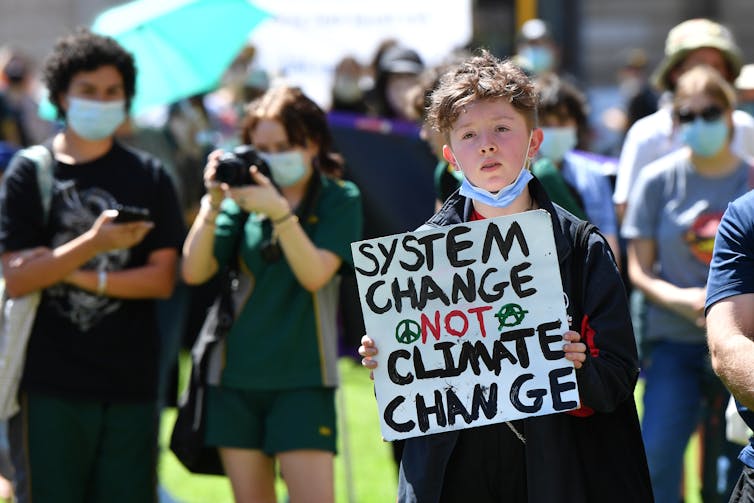
‘Freedom In Research And Training’
Since 1988, almost 1,000 universities in 94 countries have signed the Magna Charta Universitatum, including ten from Australia. The charter affirms the deepest values of university traditions.
In practice, it means a university “must serve society as a whole” and that “to meet the needs of the world around it, its research and teaching must be intellectually independent of all political authority and economic power”.
Central to the charter is that “freedom in research and training is the fundamental principle of university life”.
The ARC administers the National Competitive Grants Program, which delivers around $800 million to Australian researchers each year.
The ARC grants process involves several rounds of rigorous review and assessment, by internationally leading scholars. The ARC then recommends to the education minister which proposals should be funded, and the budget. The minister makes the final funding decisions.
The Morrison government claims it wants to protect academic freedoms. And it commissioned a 2019 review of freedom of expression and intellectual inquiry in higher education.
However, Robert’s veto of the ARC’s decision to fund six projects is a clear breach of the core principle of academic freedom.
What’s more, it’s not the first time Morrison government education ministers have ridden roughshod over the funding processes of the ARC and university research.
In 2018-19, Simon Birmingham vetoed 11 research grants recommended by the ARC. In 2020, Dan Tehan vetoed five.

An Important New Phenomenon
The project we proposed for ARC funding was titled “New possibilities: student climate action and democratic renewal”. It involved working directly with young people to investigate a significant new phenomenon.
Since 2018, millions of students across the globe have worked hard as leaders, organisers and advocates for action on climate change. Their actions include the school strikes for climate and various legal actions. In Australia since 2018, we estimate at least 500,000 school students have participated in the movement, including coordinated school strike actions online and in the streets.
Our project was designed to document such actions and to establish:
why young people participate
what activities they undertake
what we can learn from the movement to address climate change and strengthen our democracy.
Our project would have led to vital new knowledge on a global phenomenon. It had the potential to help address falling trust in governments and dissatisfaction with democracy, and to give new insights on engaging with young people in learning about and responding to climate change.
It also provided jobs for early-career researchers already facing cripplingly precarious employment in the university sector.
Our proposal relied on a vast body of academic work and expertise, and previous scholarship by the research team. It was connected to a global research network exploring young people’s climate politics and broader possibilities for democracy.
Developing the proposal involved hundreds of hours of additional research, writing, editing and consultation with professional staff across five universities.
For the ARC to judge the project worthy of funding, it must have determined it passed the national interest test and that it was value for money.
Significantly, we have no formal right to appeal the decision.

‘Disappointment And Disbelief’
The minister’s intervention is a serious blow to Australia’s reputation for research excellence and its commitment to academic freedom.
The Morrison government has also sent a negative message to Australia’s young people – essentially saying research into their views on climate change is irrelevant.
We asked students who we work with to respond to the government’s veto, and they stand with us in disappointment and disbelief. Audrey, aged 10, who has participated in climate action, said:
“I personally think that the vetoing was to stop the research from public view to make the government look better, as they aren’t doing enough on climate change. Another main reason why the vetoing is so bad and unfair is that the government is sending the message that young people’s views aren’t important to both young people and the community.”
Urgent change is needed to ensure academic autonomy, freedom, and independence of process are not subject to political interference in future.
Addressing urgent and complex problems such as climate change involves research across the full spectrum of society – and that includes Australia’s young people. ![]()
Philippa Collin, Associate Professor, Institute for Culture and Society, Western Sydney University; Brendan Churchill, ARC Research Fellow and Lecturer in Sociology, The University of Melbourne; Faith Gordon, Associate Professor in Law, Australian National University; Judith Bessant, Professor in School of Global, Urban and Social Studies, RMIT University; Michelle Catanzaro, Senior Lecturer in Design / Senior Research Fellow (YRRC), Western Sydney University; Rob Watts, Professor of Social Policy, RMIT University, and Stewart Jackson, Senior Lecturer, Department of Government and International Relations, University of Sydney
This article is republished from The Conversation under a Creative Commons license. Read the original article.
(The most social) bird of the year: why superb fairy-wren societies may be as complex as our own
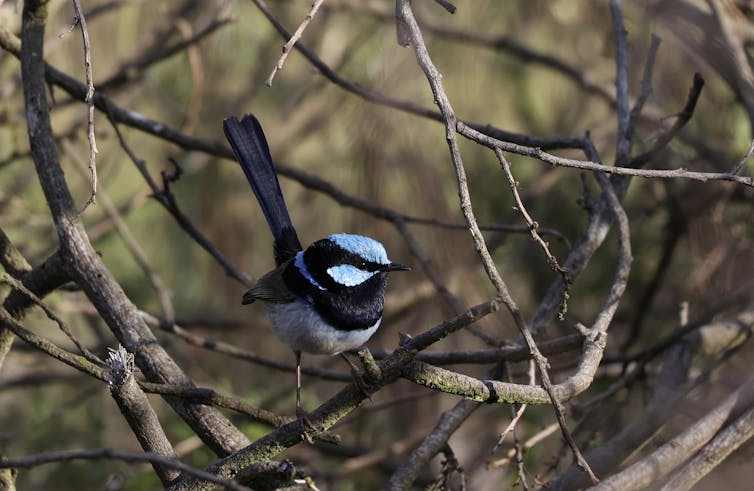
One mystery many biologists want to solve is how complexity develops in nature. And among the many social systems in the natural world, multilevel societies stand out for their complexity. Individuals first organise into families, which are members of bands, which are organised into clans.
At each level, associations between components (individuals, families and clans) are structured and stable. In other words, individuals within families usually stay together, and families usually interact with other specific families in a predictable way, to form stable clans.
Such social organisation has probably characterised much of human evolution (and is still common among many hunter-gatherer societies around the world).
In fact, multilevel societies likely played a fundamental role in human history, by accelerating our cultural evolution. Organising into distinct social groups would have reduced the transmission of cultures and allowed for multiple traditions to coexist.
In our research, published today in Ecology Letters, we studied social behaviours in a wild population of superb fairy-wrens. We found these birds also organise into multilevel societies – a level of complexity once thought to be exclusive to big-brained mammals.
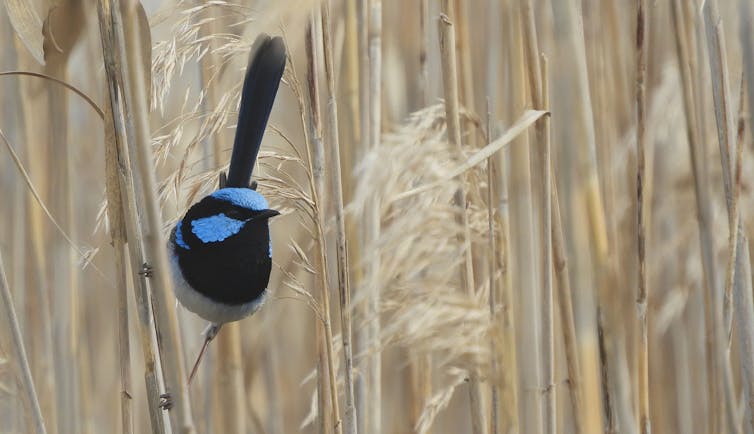
Cooperatively Breeding Birds
Although we have ideas about the advantages of multilevel societies, we know relatively little about how and why they form in the first place.
Of the few species known to live in multilevel societies, there is one characteristic shared among all. That is, they live in stable groups, in environments where food availability is inconsistent and difficult to predict.
This is also true for many cooperatively breeding birds, including the superb fairy-wren – familiar across southeastern Australia’s parks and gardens. They breed in small family groups, with non-breeding helpers assisting a dominant breeding pair. And this social system is common among Australian bird species.
The superb fairy-wren is a well-studied species and is beloved by Australians, even being crowned bird of the year in this year’s Guardian/BirdLife Australia poll.
These birds are notorious for their polyamorous approach to sex, despite being socially monogamous. Breeding pairs form exclusive social bonds, yet each partner will still mate with other individuals.
Our work now reveals this complex arrangement during the breeding season is just the tip of the iceberg.
Associating By Choice
We tracked almost 200 birds over two years, by attaching different-coloured leg bands to each individual. We recorded the birds’ social associations and, from our observations, built a complex social network that let us determine the strength of each relationship.
We found that during the autumn and winter months, some breeding groups – (which include the breeding pair, one or more helpers and last summer’s offspring), stably associated with other breeding groups to form supergroups. And this was usually done with individuals they were genetically related with.
In turn, these supergroups associated with other supergroups and breeding groups on a daily basis, forming large communities. In the following spring, these communities split back into the original breeding groups inhabiting well-defined territories – only to join again next winter.
Just like humans, these little birds don’t associate with each other randomly during the long winter months. They have specific individuals and/or groups they choose to be with (but we’re currently not sure how they make this choice).
While it’s not yet clear why superb fairy-wrens form upper social units (supergroups and communities), we suspect this might allow individuals to exploit larger areas during winter, when food is scarce. It would also provide additional safety against predators, such as hawks and kookaburras.
This theory is supported by our literature study, which shows that multilevel societies are likely common among other Australian cooperatively breeding birds, such as the noisy and bell miners and striated thornbills.
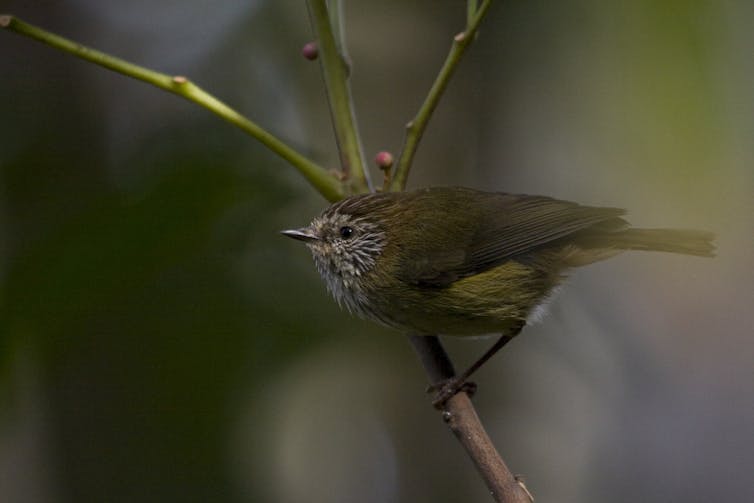
Cooperative breeding is another strategy to deal with harsh condition such as food scarcity. So the conditions that favour cooperative breeding are the same as those that favour multilevel societies.
Multilevel Societies In Other Animals
There are several other species which seem to have a similar social organisation. They include primates such as baboons, and other large mammals that exhibit rich animal cultures, such as killer whales, sperm whales and elephants.
For a long time, researchers thought living in complex societies might be how humans evolved large brains. They also thought this characteristic may be exclusive to mammals with large brains, since keeping track of many different social relationships is not easy (or so the reasoning went).
Consequently, other animals with whom we are less closely related have mostly been excluded from this field of investigation.
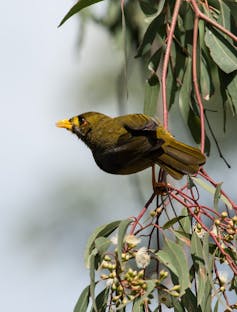
This might reflect a bias that we, humans, have towards our own species and species which are similar to us.
As it turns, you don’t need to be a mammal with a big brain to evolve complex multilevel societies. Even small-brained birds such as the tiny superb fairy-wren can do this – as well as the vulturine guineafowl a chicken-like bird from northeast Africa.
We strongly suspect quite a few birds will join their ranks in the coming years as more research is done.
Acknowledgement: we would like to thank our colleagues Alexandra McQueen, Kaspar Delhey, Carly Cook, Sjouke Kingma and Damien Farine who are co-authors on this research.![]()
Ettore Camerlenghi, PhD student, Monash University and Anne Peters, Professor, Monash University
This article is republished from The Conversation under a Creative Commons license. Read the original article.
We’ve unveiled the waratah’s genetic secrets, helping preserve this Australian icon for the future

When the smoke cleared after the Black Summer bushfires of 2019-20, the bush surrounding the Blue Mountains Botanic Garden Mount Tomah was charred. Among the casualties was a NSW waratah, Telopea speciosissima, that had recently become the first of its species to have its genome sequenced. We have published this genome in the journal Molecular Ecology Resources.
The waratah is the official floral emblem of New South Wales, and its spectacular red blooms have been adopted as the logos of state government agencies and sporting teams.
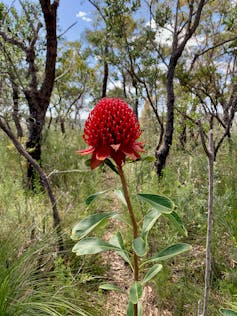
The genome sequence paves the way for the waratah to serve as a model for understanding how plant populations change over time and adapt to their environments, and particularly how this species bounces back after a bushfire.
Genome sequencing has come a long way in a short time. The first human genome, completed in 2003, cost around US$1 billion and took about 13 years to compile the roughly 3 billion “letters” of our genetic code. Today, sequencing a human genome would cost less than $1,000 and take just a few days.
With rapidly decreasing costs and advancing technology, the genomic era presents the opportunity to decode many plant genomes that we can then use as reference resources. In turn, this will help us understand and conserve Australian fauna for the long term.
What Is A Genome Anyway?
An organism’s genome is the complete set of genetic information it needs to develop, grow and survive. Plants, animals and many other living things are made of DNA, which consists of a string of four chemical “bases”, known as A, C, G and T.
Sequencing a genome involves determining the order of these bases. When we began our project, we knew from previous research the waratah genome would be quite long, at around a billion bases, that it was likely to be arranged into 11 large parcels called chromosomes, and that each plant would have two copies of the genome in each of its cells.
Cracking The Waratah Code
Generating the waratah reference genome first involved sampling young leaves from a plant growing naturally in the Blue Mountains. We extracted DNA from the leaves, and used three different sequencing technologies to piece together its genetic code. This approach generated many sequences, hundreds or thousands of bases long, which we then needed to assemble to determine the full genome.
Assembling the genome involved a range of different software tools, running on powerful computers. The result was a sequence of slightly less than a billion bases, mostly in 11 large sequences, as expected. The sequences appear to contain around 40,000 genes in total – roughly twice as many as humans have.
Why We Sequenced The Waratah
Previous sequencing efforts have focused on important crops and on “model organisms” such as Arabidopsis, which is widely studied by researchers and was the first plant to have its genome sequenced, back in 2000. But of course, there are many other types of species in the plant tree of life.
The NSW waratah is one of five waratah species in the genus Telopea, which grows throughout southeastern Australia, and one of around 1,700 species in the family Proteaceae. This family includes other iconic Australian plants such as banksias, grevilleas and macadamias. Yet despite this, very few Proteaceae genomes have so far been sequenced.
A collaborative effort between the Australian Institute of Botanical Science and UNSW Sydney, the waratah genome project was the first completed as part of the Genomics for Australian Plants (GAP) Initiative. A key aim of this initiative is to generate genomes to enable better conservation and understanding of Australia’s unique plant diversity.
Hope For The Future
For many Australians, Black Summer embodied the threat posed by climate change to our unique natural heritage. But waratahs evolved with fire, and can regenerate with the help of a modified stem called a lignotuber, from which masses of fresh shoots emerge after a bushfire. It offers a potent symbol of our hope for the future.
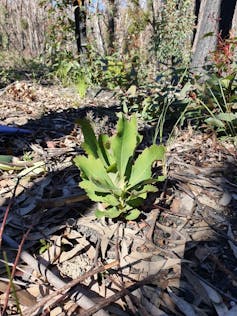
The waratah plant whose genome we sequenced has resprouted after being burned in the Black Summer fires, and has now been propagated at the Blue Mountains Botanic Garden Mount Tomah and will become part of the garden’s living collection.
A display inspired by this plant and its genome will also feature in the foyer of the new National Herbarium of NSW when it opens at the Australian Botanic Garden Mount Annan next year.
The waratah’s genome sequence will provide a platform for future studies of its evolution and environmental adaption, ultimately informing breeding efforts and helping us better conserve this iconic species. By sequencing its DNA, we can uncover its evolutionary past and pave the way for its survival long into the future.![]()
Stephanie Chen, PhD Candidate, UNSW; Jason Bragg, Research Scientist, and Richard Edwards, Senior Lecturer in Genomics and Bioinformatics, UNSW
This article is republished from The Conversation under a Creative Commons license. Read the original article.
Lost Birds And Mammals Spell Doom For Some Plants: Animal-Dispersed Plants' Ability To Keep Pace With Climate Change Reduced By 60%
January 13, 2022
In one of the first studies of its kind, researchers have gauged how biodiversity loss of birds and mammals will impact plants' chances of adapting to human-induced climate warming.
More than half of plant species rely on animals to disperse their seeds. In a study featured on the cover of this week's issue of Science, U.S. and Danish researchers showed the ability of animal-dispersed plants to keep pace with climate change has been reduced by 60% due to the loss of mammals and birds that help such plants adapt to environmental change.
Researchers from Rice University, the University of Maryland, Iowa State University and Aarhus University used machine learning and data from thousands of field studies to map the contributions of seed-dispersing birds and mammals worldwide. To understand the severity of the declines, the researchers compared maps of seed dispersal today with maps showing what dispersal would look like without human-caused extinctions or species range restrictions.
"Some plants live hundreds of years, and their only chance to move is during the short period when they're a seed moving across the landscape," said Rice ecologist Evan Fricke, the study's first author.
As climate changes, many plant species must move to a more suitable environment. Plants that rely on seed dispersers can face extinction if there are too few animals to move their seeds far enough to keep pace with changing conditions.
"If there are no animals available to eat their fruits or carry away their nuts, animal-dispersed plants aren't moving very far," he said.
And many plants people rely on, both economically and ecologically, are reliant on seed-dispersing birds and mammals, said Fricke, who conducted the research during a postdoctoral fellowship at the University of Maryland's National Socio-Environmental Synthesis Center (SESYNC) in collaboration with co-authors Alejandro Ordonez and Jens-Christian Svenning of Aarhus and Haldre Rogers of Iowa State.
Fricke said the study is the first to quantify the scale of the seed-dispersal problem globally and to identify the regions most affected. The authors used data synthesized from field studies around the world to train a machine-learning model for seed dispersal, and then used the trained model to estimate the loss of climate-tracking dispersal caused by animal declines.
He said developing estimates of seed-dispersal losses required two significant technical advances.
"First, we needed a way to predict seed-dispersal interactions occurring between plants and animals at any location around the world," Fricke said.
Modelling data on networks of species interactions from over 400 field studies, the researchers found they could use data on plant and animal traits to accurately predict interactions between plants and seed dispersers.
"Second, we needed to model how each plant-animal interaction actually affected seed dispersal," he said. "For example, when an animal eats a fruit, it might destroy the seeds or it might disperse them a few meters away or several kilometres away."
The researchers used data from thousands of studies that addressed how many seeds specific species of birds and mammals disperse, how far they disperse them and how well those seeds germinate.
"In addition to the wake-up call that declines in animal species have vastly limited the ability of plants to adapt to climate change, this study beautifully demonstrates the power of complex analyses applied to huge, publicly available data," said Doug Levey, program director of the National Science Foundation's (NSF) Directorate for Biological Sciences, which partially funded the work.
The study showed seed-dispersal losses were especially severe in temperate regions across North America, Europe, South America and Australia. If endangered species go extinct, tropical regions in South America, Africa and Southeast Asia would be most affected.
"We found regions where climate-tracking seed dispersal declined by 95%, even though they'd lost only a few percent of their mammal and bird species," Fricke said.
Fricke said seed-disperser declines highlight an important intersection of the climate and biodiversity crises.
"Biodiversity of seed-dispersing animals is key for the climate resilience of plants, which includes their ability to continue storing carbon and feeding people," he said.
Ecosystem restoration to improve the connectivity of natural habitats can counteract some declines in seed dispersal, Fricke said.
"Large mammals and birds are particularly important as long-distance seed dispersers and have been widely lost from natural ecosystems," said Svenning, the study's senior author, a professor and director at Aarhus University's Center for Biodiversity Dynamics in a Changing World. "The research highlights the need to restore faunas to ensure effective dispersal in the face of rapid climate change."
Fricke said, "When we lose mammals and birds from ecosystems, we don't just lose species. Extinction and habitat loss damage complex ecological networks. This study shows animal declines can disrupt ecological networks in ways that threaten the climate resilience of entire ecosystems that people rely upon."
NSF's Levey said, "Through SESYNC and other NSF investments, we are enabling ecologists to forecast what will happen to plants when their disperser 'teammates' drop out of the picture in the same way we predict outcomes of sports games."
The research was supported by NSF (1639145), the Villum Foundation (16549) and the Aarhus University Research Foundation (AUFF-F-2018-7-8) and is published in Science, January 2022 edition.
Evan C. Fricke, Alejandro Ordonez, Haldre S. Rogers and Jens-Christian Svenning. The effects of defaunation on plants’ capacity to track climate change. Science, 2022 DOI: 10.1126/science.abk3510
Researchers Find Nonnative Species In Oahu Play Greater Role In Seed Dispersal
January 11, 2022
University of Wyoming researchers headed a study that shows nonnative birds in Oahu, Hawaii, have taken over the role of seed dispersal networks on the island, with most of the seeds coming from nonnative plants.
"Hawaii is one of the most altered ecosystems in the world, and we are lucky enough to examine how these nonnative-dominated communities alter important processes, such as seed dispersal," says Corey Tarwater, an assistant professor in the UW Department of Zoology and Physiology. "What we have found is that not only do nonnative species dominate species interactions, but that these nonnative species play a greater role in shaping the structure and stability of seed dispersal networks than native species. This means that loss of a nonnative species from the community will alter species interactions to a greater extent than loss of a native species."
Tarwater was the anchor author of a paper, titled "Ecological Correlates of Species' Roles in Highly Invaded Seed Dispersal Networks," which was published Jan. 11 in the Proceedings of the National Academy of Sciences (PNAS).
Jeferson Vizentin-Bugoni, a postdoctoral researcher at UW and the U.S. Army Research Laboratory at the time of the research, is the paper's lead author. He performed most analyses and conceptualized and outlined the first version of the manuscript.
Becky Wilcox, of Napa, Calif., a recent UW Ph.D. graduate and now a postdoctoral researcher, and Sam Case, of Eden Prairie, Minn., a UW Ph.D. student in the Program in Ecology as well as in zoology and physiology, worked with Tarwater. The two aided in field data collection, processing all of the footage from the game cameras, and assisted in writing the paper. Patrick Kelley, a UW assistant research scientist in zoology and physiology, and in the Honors College, helped with developing project ideas, data processing and management, and writing the paper.
Other researchers who contributed to the paper are from the University of Hawaii, University of Illinois, Northern Arizona University and the U.S. Army Corps of Engineers in Champaign, Ill.
"This is one of the first studies showing that nonnative species can take over the most important roles in seed dispersal networks. This means that Oahu's ecosystems have been so affected by species extinctions and invasions that most of the seeds dispersed on the island belong to nonnative plants, and most of them are dispersed by nonnative birds," Vizentin-Bugoni says. "This forms what has been called 'ecological meltdown,' which is a process occurring when nonnative mutualistic partners benefit each other and put the system into a vortex of continuous modification."
Seed dispersal by animals and birds is one of the most crucial ecosystem functions. It is linked to plant population dynamics, community structure, biodiversity maintenance and regeneration of degraded ecosystems, according to the paper.
Before Hawaii became the extinction and species invasion capital of the world, its ecological communities were much more diverse. Experts estimate that, in the last 700 years, 77 species and subspecies of birds in the Hawaiian Archipelago have gone extinct, accounting for 15 percent of bird extinctions worldwide.
"The Hawaiian Islands have experienced major changes in flora and fauna and, while the structure of seed dispersal networks before human arrival to the islands is unknown, we know from some of our previous work, recently published in Functional Ecology, that the traits of historic seed dispersers differ from the traits of introduced ones," Case says. "For instance, some of the extinct dispersers were larger and could likely consume a greater range in seed sizes compared to the current assemblage of seed dispersers."
Because of the large number of invasive plants and the absence of large dispersers, the invasive dispersers are incompletely filling the role of extinct native dispersers, and many native plants are not being dispersed, Tarwater says. On the island of Oahu, 11.1 percent of bird species and 46.4 percent of plant species in the networks are native to the island. Ninety-three percent of all seed dispersal events are between introduced species, and no native species interact with each other, the paper says.
"Nonnative birds are a 'double-edged sword' for the ecosystem because, while they are the only dispersers of native plants at the present, most of the seeds dispersed on Oahu belong to nonnative plants," Vizentin-Bugoni says. "Many native plant species have large seeds resulting from coevolution with large birds. Such birds are now extinct, and the seeds cannot be swallowed and, thus, be dispersed by the small-billed passerines now common on Oahu."
Researchers compiled a dataset of 3,438 faecal samples from 24 bird species, and gathered 4,897 days of camera trappings on 58 fruiting species of plants. It was determined that 18 bird species were recorded dispersing plant species.
In contrast to predictions, the traits that influence the role of species in these novel networks are similar to those in native-dominated communities, Tarwater says.
"In particular, niche-based traits, such as degree of frugivory (animals that feed on fruit, nuts and seeds) and lipid content, rather than neutral-based traits, such as abundance, were more important in these nonnative-dominated networks," Tarwater says. "We can then use the niche-based traits of dispersers and plants to predict the roles species may play in networks, which is critical for deciding what species to target for management."
Tarwater adds that the roles of different species in Oahu's seed dispersal networks can be predicted by the species' ecological traits. For example, the research group found that bird species that consume a greater amount of fruit in their diets are more likely to disperse seeds from a greater number of plant species. Likewise, the team found that plants that fruit for extended periods of time have smaller seeds and have fruits rich in lipids, will get dispersed more frequently.
"Land managers can use these ecological traits to identify species that can be removed or added to a system to improve seed dispersal," Tarwater explains. "For example, removal of highly important nonnative plants or the addition of native plants with traits that increase their probability of dispersal, could aid in restoration efforts."
Kelley and Tarwater obtained funding for the project. The research was funded by a U.S. Department of Defense award, UW, University of Hawaii, University of New Hampshire and Northern Arizona University.
"This upcoming year, we will be experimentally removing one nonnative plant species that is incredibly important for network structure and examining how the seed dispersal network changes in response," Tarwater says. "The results of this experiment can inform land managers as to whether removal of a highly invasive plant will improve seed dispersal for the remaining native plants, or whether it does not."
Jeferson Vizentin-Bugoni, Jinelle H. Sperry, J. Patrick Kelley, Jason M. Gleditsch, Jeffrey T. Foster, Donald R. Drake, Amy M. Hruska, Rebecca C. Wilcox, Samuel B. Case, Corey E. Tarwater. Ecological correlates of species’ roles in highly invaded seed dispersal networks. Proceedings of the National Academy of Sciences, 2021; 118 (4): e2009532118 DOI: 10.1073/pnas.2009532118
Regent honeyeaters were once kings of flowering gums. Now they’re on the edge of extinction. What happened?
Rob Heinsohn, Australian National University; Dejan Stojanovic, Australian National University, and Ross Crates, Australian National UniversityLess than 80 years ago, regent honeyeaters ruled Australia’s flowering gum forests, with huge raucous flocks roaming from Adelaide to Rockhampton.
Now, there are less than 300 birds left in the wild. Habitat loss has pushed the survivors into little pockets across their once vast range.
Sadly, our new research shows these birds are now heading for rapid extinction. Unless we urgently boost conservation efforts, the regent honeyeater will follow the passenger pigeon into oblivion within the next 20 years.
If we let the last few die, the regent honeyeater will be only the second bird extinction on the Australian mainland since European colonisation, following the paradise parrot.

How Did It Come To This?
With vivid yellow and black wings, embroidered body and warty faces, these honeyeaters are among Australia’s most spectacular birds.
John Gould, one of Australia’s earliest European naturalists, observed these birds in “immense flocks amongst the brushes of New South Wales”. He described the regent honeyeater as “the most pugnacious bird he ever saw”, noting they “reigned supreme in the largest, most heavily-flowering trees.” Their success in securing nectar supplies made them vital pollinators.
The world Gould saw is sadly a thing of the past. Regent honeyeater populations have plummeted, with the loss of over 90% of their preferred woodland habitats to farmland.
You might wonder how this could be, given there are still large tracts of forest in Australia. But these are invariably on poorer soils and hilltops. Our remaining forests do not yield the rich nectar regent honeyeaters require for breeding.
As their habitat has declined, the surviving regent honeyeaters have been forced to compete with larger species – without the safety of their huge flocks. The result? The once common species no longer reigns supreme.
Gone Within 20 Years
Unless conservation actions are urgently stepped up, our research shows these birds will be extinct within 20 years.
We’ve known about the decline of regent honeyeaters since the late 1970s. In response, a recovery team including BirdLife Australia and Taronga Conservation Society launched a long-term recovery effort to protect habitat, plant new trees and release zoo-bred birds. These efforts have slowed but not arrested the decline of these birds.
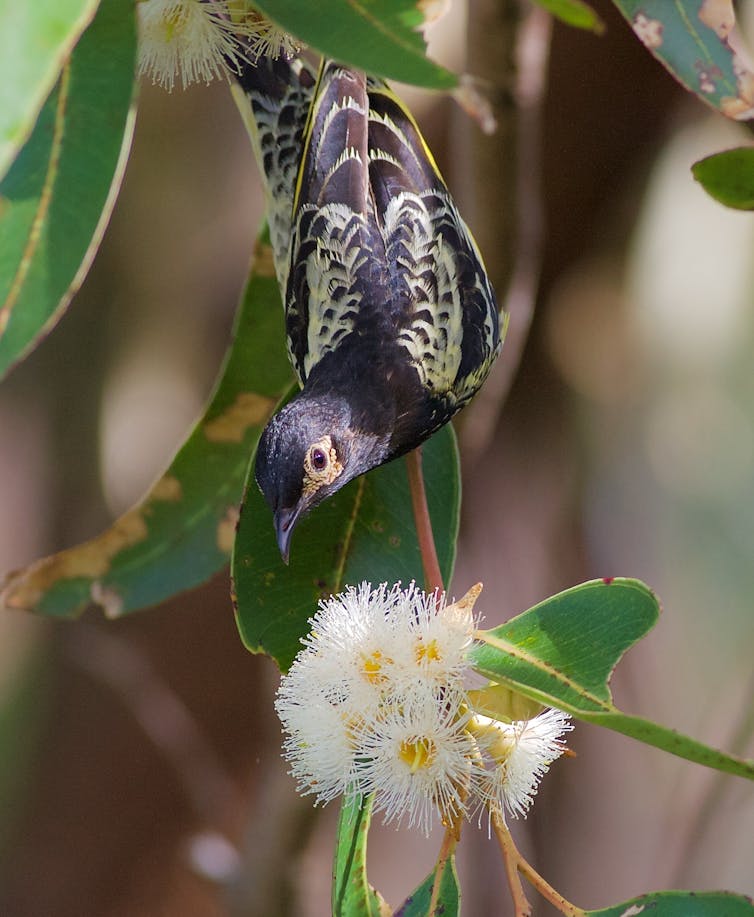
In 2015, we began a large-scale survey to better understand their population decline. Regent honeyeaters are a notoriously difficult bird to study in the wild. As nomads, they wander long distances throughout their vast range in search of nectar in their favoured tree species. Finding these birds is hard enough, let alone monitoring the population in detail.
After six years of intensive fieldwork, and with data from research in the 1990s and long term bird banding, we have finally gathered enough information to be able to understand the challenges for the few remaining wild birds. We now know their breeding success has declined because their nests are raided and the chicks killed by aggressive native species, with noisy miners a particular problem.
We also know the wild birds are losing their song culture because of a lack of older birds for fledglings to learn their songs.
Our fieldwork has given us accurate estimates of vital breeding data, such as how many young birds fledge for each adult female, how many birds are breeding and how well juveniles are surviving. We combined this with data from the decades of monitoring of zoo-bred and released birds to create population models, which allow us to predict the future for the wild population under different conservation scenarios.
Habitat Is King
What do the models show? That time is critical. To have any chance of getting the regent honeyeater back, we must build its numbers up enough for them to be able to roam in large flocks for protection.
How? First, we have to nearly double the nesting success rate for both wild and released zoo-bred birds. Too many young birds are dying early. That means we have to find nesting birds early in the breeding season and protect them from noisy miners, pied currawongs and even possums.
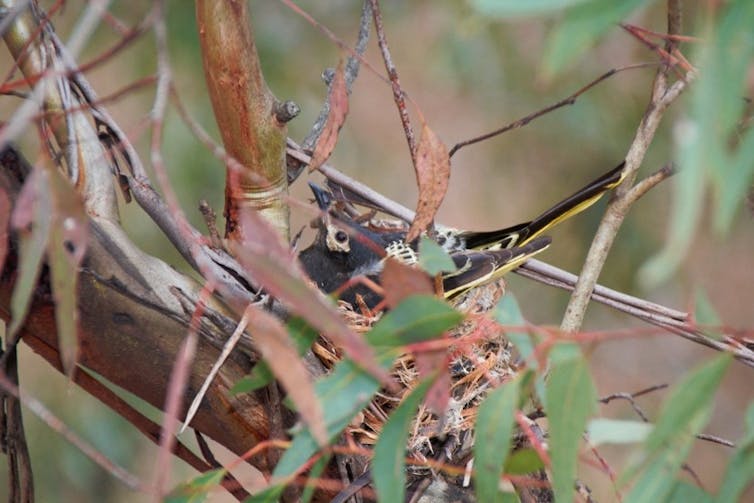
Next, we have to boost the numbers of zoo-bred birds released in the Blue Mountains, and maintain these numbers for at least twenty years. Staff at Taronga Conservation Society are preparing zoo-bred birds for the trials of the wild by exposing them to competition in flight aviaries, song tutoring young males and improving husbandry practices in zoos to increase survival in the wild.
Finally, our models clearly show regent honeyeaters will only become self-sustaining if we do much more to secure their habitat. Their remaining pockets of habitat are simply too small. We must protect all remaining habitat, restore degraded habitat and control noisy miners.
Without habitat, other conservation efforts will be pointless. The honeyeater will simply never reach flock sizes large enough to muscle their way back into the surprisingly competitive business of drinking nectar.
Unfortunately, we continue to destroy essential regent honeyeater habitat in some areas even as we attempt to restore lost habitat elsewhere. For example, if the Warragamba Dam in the Blue Mountains is raised it will flood essential habitat and make it even harder to bring back our iconic honeyeater.
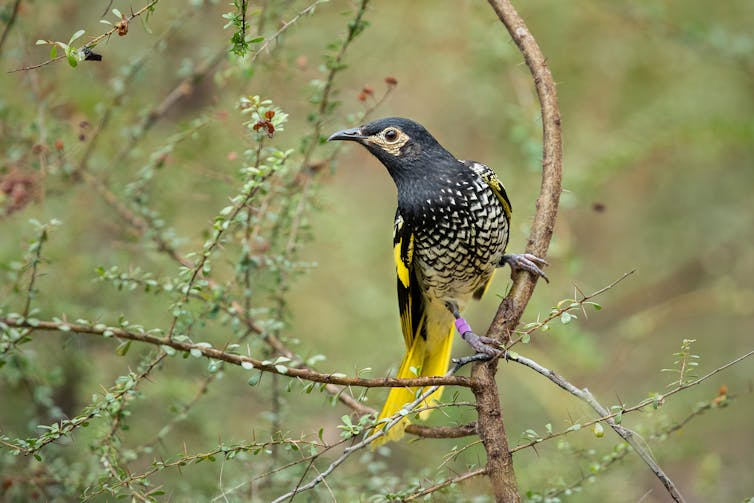
The Status Quo Is Not Enough
For decades, conservationists and researchers have worked to save the regent honeyeater. Despite this tireless work, the species is inching towards the exit. If we maintain the status quo, we will lose it.
We must think bigger. Nest protection and release of zoo-bred birds can help get flock sizes up, but these efforts will be pointless if there are no blossoms for them to drink from.
Like the regent honeyeater, the passenger pigeon sought safety in numbers. We now know its extinction could have been predicted, if modern risk assessments had been available. Those same assessments and models tell us very clearly what will happen to the regent honeyeater.
It is too late for the passenger pigeon. It is not too late to save the regent honeyeater. But only if we act now.
Monique Van Sluys (Taronga Conservation Society) and Dean Ingwersen (Birdlife Australia) contributed to this article![]()
Rob Heinsohn, Professor of Evolutionary and Conservation Biology, Australian National University; Dejan Stojanovic, Postdoctoral Fellow, Australian National University, and Ross Crates, Postdoctoral fellow, Australian National University
This article is republished from The Conversation under a Creative Commons license. Read the original article.
Without urgent action, these are the street trees unlikely to survive climate change
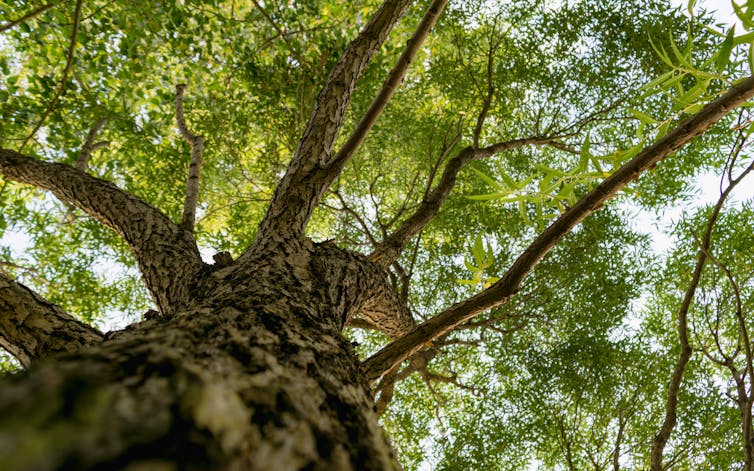
Cities across the world are on the front line of climate change, and calls are growing for more urban cooling. Many governments are spending big on new trees in public places – but which species are most likely to thrive in a warmer world?
Numerical targets such as “one million trees” dominate tree-planting programs in cities such as Los Angeles, New York, Shanghai, Melbourne and Sydney. But whacking a million trees into the ground won’t necessarily mean greener suburbs in decades to come.
Often, not enough attention is paid to selecting the right trees or providing enough water so they survive a hotter, drier climate in future.
In our recent research, we assessed the effects of extreme heat and drought on urban tree species. Some much-loved tree species, widely planted across our cities, did not handle the conditions well. It shows how important decisions must be made today for urban greening programs to succeed in a warmer world.
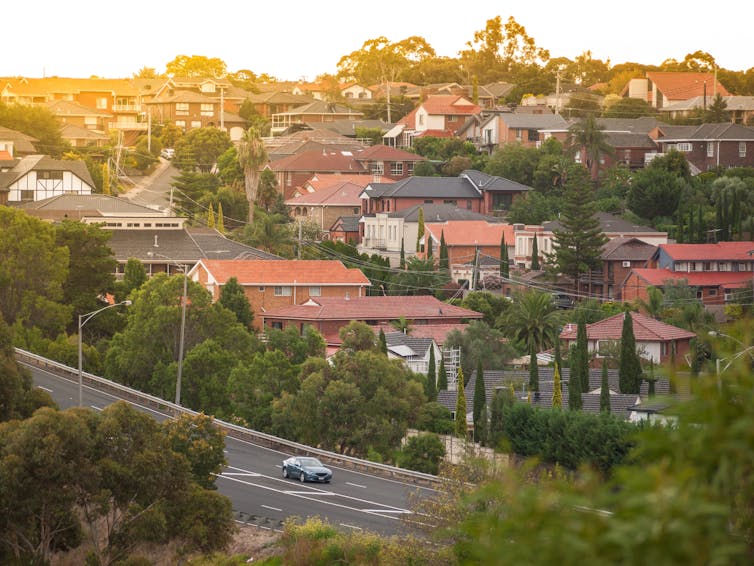
A Hothouse Experiment
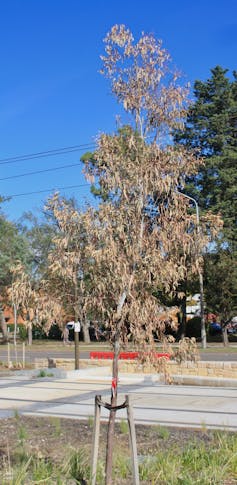
In January 2020, following several years of drought, Penrith in Western Sydney hit 48.9℃ – the hottest temperature ever recorded in Greater Sydney. Researchers later assessed about 5,500 street trees and found more than 10% displayed canopy damage. Exotic deciduous species fared the worst.
The event showed how simultaneous intense heat and drought can damage urban trees.
Trees cool down in hot temperatures by losing water through microscopic openings in their leaves called stomata. Sufficiently watered trees can often tolerate extreme hot temperatures, while drought-stressed trees may struggle to survive.
Our research involved stress-testing 20 broadleaf evergreen tree species from habitats ranging from tropical rainforests to semi-arid woodlands.
Seedlings were grown in a coordinated glasshouse experiment. After the plants were established and acclimatised, half of them – five plants per species – were exposed to a gradual, five-week drought.
In the final week of water deficit, all plants were exposed to conditions simulating a six-day heatwave.
What We Found
The 20 plant species varied widely in their ability to handle these conditions.
Of the plants exposed to both heat and drought, two species suffered modest crown dieback (a decline in health of the canopy) and another four species suffered extensive crown dieback.
Most plants resumed growth after the heatwave but several individual plants died: two swamp banksia (Banksia robur) and one crimson bottlebrush (Callistemon citrinus).
Species with dense wood and small, thick, dense leaves use water efficiently and are drought-tolerant. The species which fared best in our study included orange jasmine (Murraya paniculata), inland rosewood (Alectryon oleifolius) and Australian teak (Flindersia australis).
Even when plant species had access to water, their tolerance of heat stress varied widely. Swamp banksia (Banksia robur) and powderpuff lilly pilly (Syzygium wilsonii) suffered extensive crown dieback even with access to water. This shows warmer heatwaves may threaten urban trees in both wet and dry years.
While some species may fare well in heat and drought, they may not necessarily be the best choice for cooling our cities. Many drought-tolerant species such as leopardwood (Flindersia maculosa) grow slowly and have sparse foliage that provides little shade or cooling. But these species could be planted in sunny, dry areas to create habitat and improve biodiversity.
So what about trees like the weeping fig (Ficus microcarpa) and London plane tree (Platanus x acerifolia), which are widely planted in Sydney, Melbourne and other Australian cities?
These trees are at greater risk during heat and drought, because they have soft, low-density wood and thin, large leaves that are vulnerable to heat. But they grow quickly and form extensive canopies that help cool urban areas.
So these trees should be planted where water is available, either from rain or through active management such as irrigation.
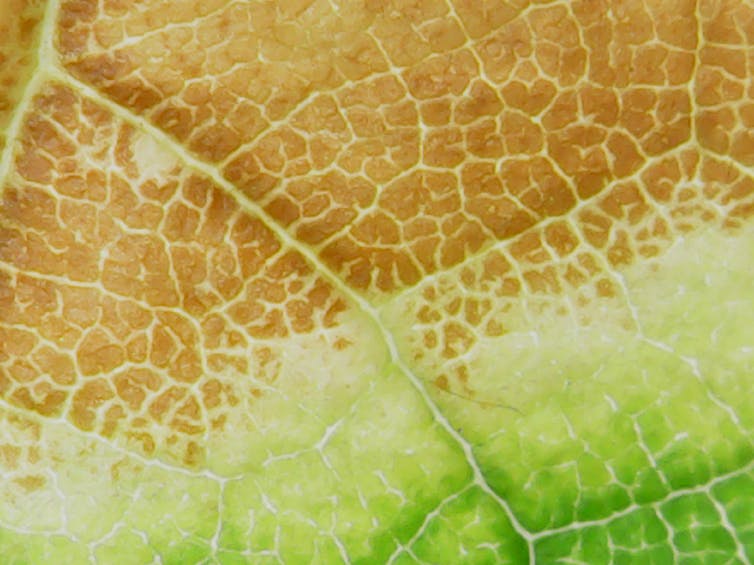
Looking Ahead To A Hot Future
Our research highlights how access to water is crucial for the survival of urban trees during hotter and drier summers.
That means urban greening programs must also incorporate elements of so-called “blue” infrastructure – retaining water in urban landscapes via engineered solutions and making it available for plant uptake. Such infrastructure comes together under the umbrella of “water sensitive urban design”.
Examples include passive irrigation (where trees draw water from storage pits containing stormwater) or raingardens – garden beds that filter stormwater runoff. Planting young trees in locations where such design is applied will improve their odds of survival.
Such methods offer multiple benefits: increasing the health of trees, helping prevent flooding during storms and reducing the need for additional irrigation from local water supplies.
Across the world, extreme heat in cities will affect citizens, infrastructure and natural environments. Effective planning for urban trees is needed now to strike the right balance between trees that cool our cities and those that will survive increasingly harsh conditions.![]()
Renée M. Prokopavicius, Postdoctoral Researcher in Plant Ecophysiology, Western Sydney University; David S. Ellsworth, Professor, Western Sydney University, and Sebastian Pfautsch, Research Theme Fellow - Environment and Sustainability, Western Sydney University
This article is republished from The Conversation under a Creative Commons license. Read the original article.
Weakening Australia’s illegal logging laws would undermine the global push to halt forest loss

One success from this year’s United Nations climate conference in Glasgow was an agreement to halt forest loss by 2030. The Morrison government signed the agreement, and this commitment is now being put to the test as it reviews Australia’s rules on illegal logging imports.
Australia’s Illegal Logging Prohibition Act and associated regulations are up for periodic review. The rules were designed to ensure timber produced overseas and imported to Australia was not logged illegally. Some changes under discussion would water down the rules by reducing the regulatory burden on businesses.
According to Interpol, the illegal timber industry is worth almost US$152 billion a year. In some countries, it also accounts for up to 90% of tropical deforestation, which is a major driver of climate change. Illegal logging and associated tax fraud has other devastating environmental, social and economic harms.
Australia would be acting inconsistently with the Glasgow agreement if it weakened illegal logging laws. Any loosening of the rules could also threaten the confidence of Australian consumers that the timber they’re buying is legally harvested.
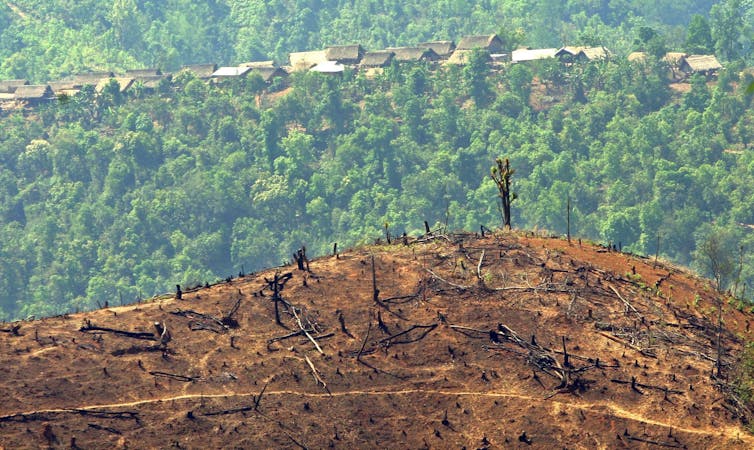
Due Diligence Matters
Under the deal inked at COP26, 141 countries agreed to a range of measures to end deforestation this decade, including to:
facilitate trade and development policies, internationally and domestically, that promote sustainable development, and sustainable commodity production and consumption, that work to countries’ mutual benefit, and that do not drive deforestation and land degradation.
As it currently stands, Australian law regulating timber imports supports this goal. It prohibits a person from importing or processing timber harvested in a way that contravenes the laws of the jurisdiction from which it was harvested.
People in Australia importing and processing timber are required to conduct due diligence to ensure imported timber was legally logged. Failure to do so can result in criminal or civil penalties.
Due diligence requires a business to gather information about the timber product being imported and assess and mitigate the risk it was logged illegally.
Similar laws exist in other jurisdictions, including the United States, the European Union, South Korea, Malaysia and Vietnam.
The restrictions are consistent with established principles of international trade law, which recognise as necessary some trade restrictions to conserve exhaustible natural resources or protect human, animal or plant life.

A Push For ‘Efficiency’
The Department of Agriculture, Water and the Environment is currently conducting a scheduled ten-year review of the Illegal Logging Prohibition Regulation 2012.
The department’s consultation paper asks, among other things, how the regulation’s efficiency could be enhanced. The proposed changes could include, among other things:
removing the requirement to establish a due diligence system, for those who import and process foreign timber infrequently. The department says establishing the system may be “unnecessarily burdensome”, however these importers would still be required to undertake a risk assessment.
reducing requirements and allowing exemptions for low-volume and low-value importers and processors.
reducing due diligence requirements for repeated imports. So, for example, if timber products were from the same supplier, made from the same timber species and harvested from the same area, only one due diligence assessment would be required in a year. However, importers may be required to check no pertinent elements of the supply chain have changed ahead of each repeat import.
removing the requirement for companies to undertake due diligence on timber imports if they instead use third-party frameworks, such as that established by the Forest Stewardship Council, to assess risks associated with a regulated timber product. This would be known as a “deemed to comply” arrangement.
The department has proposed measures to compensate for the loosening of some rules, including stronger requirements for frequent importers and processors of foreign timber, and third-party auditing of due diligence systems.
It also says risks would need careful management, including ensuring claims relating to timber species and harvest origins were underpinned by authentic documentation.

We Must Stay Vigilant
As the department prepares its final recommendations to the federal government, it must factor in the need for increased vigilance of global logging practices. This need was clearly recognised by nations signatory to the COP26 deforestation deal.
What’s more, overseas experience has shown some mooted changes have the potential to be problematic.
Indeed, in foreign timber markets, “deemed to comply” arrangements have been exposed as vulnerable to fraud. The European Union, for example, has pointed to misuse of certification and questions around transparency.
Australia has a way to go if it wants to satisfy the COP26 agreement to halt and reverse forest loss and land degradation – not least by tightening domestic policy on deforestation within our borders.
It could also embrace efforts to address the other major driver of deforestation - agricultural expansion - through the joint statement on forests, agriculture and commodity trade which other countries progressed at Glasgow.
But it must also ensure foreign timber entering Australia is not the product of illegal logging. While due diligence requirements may present a regulatory burden for some operators, this must be weighed against the pressing global imperative to halt forest loss.![]()
Margaret Young, Professor, The University of Melbourne and Catherine E. Gascoigne, Research Affiliate, University of Sydney
This article is republished from The Conversation under a Creative Commons license. Read the original article.
Sydney’s dams may be almost full – but don’t relax, because drought will come again
Ian Wright, Western Sydney UniversityDams serving capital cities such as Canberra, Hobart and Sydney are near full after two years of widespread rainfall. But these wet conditions won’t last.
Under climate change, droughts in Australia will become more frequent and severe. Our drinking water supplies, and water crucial for irrigation and the environment, will dwindle again.
Sydney, Australia’s most populous city, is among those that must prepare for the next drought. The NSW government is developing the Greater Sydney Water Strategy, to guide water management in coming decades.
Among the plan’s more contentious proposals are increased use of Sydney’s existing desalination plant and expanding the use of recycled water (highly treated sewage), including for drinking water. So let’s examine whether such measures are enough to secure Sydney’s water future.

A City Of Water Scarcity
During the most recent drought from 2017 to 2020, Sydney’s water storage levels dropped by 50% of full dam capacity in two years – a much faster depletion than in previous droughts.
Inflows into Sydney’s dams have dropped over the past 30 years. From 1991 to 2020, inflows averaged 770 million litres a year – 45% less than the long-term average.
The news isn’t all bad. Sydney used less water in 2019-20 than it did in 1990, despite its population growing from 3.8 million to 5.4 million.
But as the Greater Sydney Water Strategy states, increasing climate variability means that, without action, the city could face a shortage of drinking water as periods of severe drought become longer and more frequent.

Desalination For The Nation?
The strategy raises the prospect of increased use of Sydney’s existing desalination plant, and building a second plant in the Illawarra region south of Sydney.
Desalination removes salt from sea water to create drinking water. The Millenium drought – from the late 1990s until 2010 – prompted several major Australian cities, including Sydney, to build desalination plants.
The technology can revolutionise water supply. For example, in 2020-21, Perth’s two desalination plants supplied 47% of the city’s water. But desalination plants can also face limitations and challenges.
The plants are expensive to build and to operate – and can sit idle for years, as the Kurnell plant did between 2012 and 2019. This can make them politically unpopular and see them criticised as “white elephants”.
Even at full production, the Kurnell plant produces only 15% of Sydney’s daily demand. And while an additional plant in the Illawarra will extend desalinated supply to more households, the technology can’t supply water to all parts of Sydney due to the city’s complex distribution infrastructure.
As I discuss below, expanded use of recycled water is a better option for Sydney than more desalination.
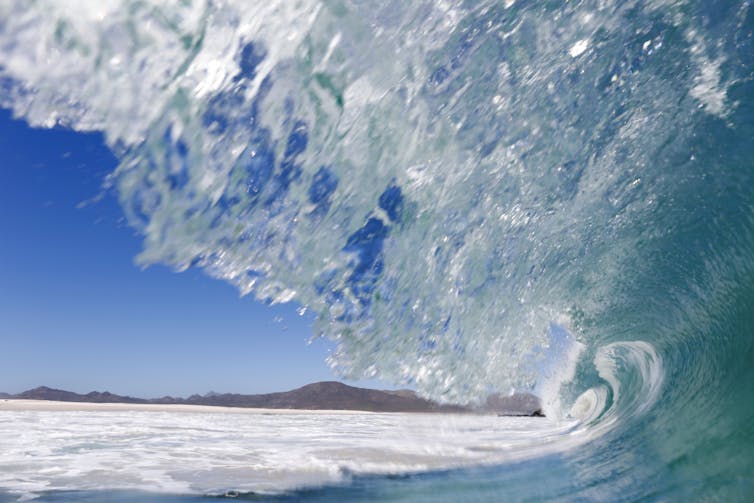
Can We Stomach Recycled Water?
Many Australian cities, including Sydney, already use recycled water – sewage that has been heavily treated – in applications such as watering golf courses and parks, flushing toilets and fighting fires.
The draft plan raises the prospect of also adding recycled water to drinking supplies, which has long been a vexed issue in Australia. Some people oppose it on health grounds, while others just can’t get over the “yuck” factor.
The concept of recycled water has a lot going for it. For example, analysis suggests it would be far cheaper and use much less energy than desalination.
Making better use of recycled water would also reduce the environmental impact of disposing of wastewater in rivers and oceans. And the potential supply of recycled water will only increase as populations grow.
Finally, good recycled water projects are used continuously, not just at times of water stress. The Rouse Hill recycled water scheme in Sydney, which supplies 32,000 properties for non-drinking water uses, is a great model.
The draft plan says recycled water would not be added to drinking supplies without public support, but past history suggests this may be hard to achieve. In 2006, for example, Toowoomba residents rejected a plan to drink recycled water, despite the town facing a grave water shortage.
However, as urban water supplies become ever more scarce, Australians may have to get used to the idea of drinking recycled water – and authorities will have to find new and better ways of selling the concept to the public.
The Sydney water plan recognises this. It emphasises the need for public consultation, and raises the prospect of investing in a recycled water demonstration plant to “highlight the safety of demonstrated and proven technology”.

A Major Omission
The plan shows how Sydney’s growing population could sustainably adapt to to a drier future. But it ignores one important measure for reducing water use - charging customers a penalty for excessive water use.
Under the measure, also known as an “inclining block tariff”, the rate per unit of water increases as the volume of consumption increases.
Research has shown water pricing can be an effective way to manage water scarcity, as well as helping water utilities recover the costs of their services. Australian cities such as Melbourne, Canberra and Brisbane apply inclining block tariffs to water, but Sydney does not.
Sydney Water’s price regulator, IPART, has argued against charging high water users more, saying it would provide less incentive for smaller households to conserve water and impose unfair costs on larger households.
Granted, water pricing is a complex issue and may require protections for lower-income users and the environment.
But under worsening climate change, our major cities cannot eschew any opportunity to ease pressure on water supplies.![]()
Ian Wright, Senior Lecturer in Environmental Science, Western Sydney University
This article is republished from The Conversation under a Creative Commons license. Read the original article.
Experience the spectacular sounds of a Murrumbidgee wetland erupting with life as water returns
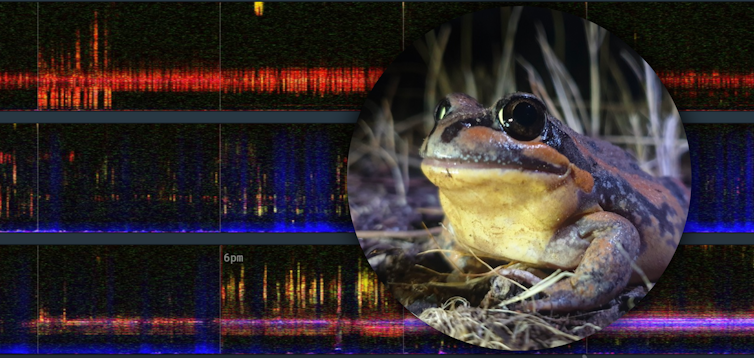
In the southwestern corner of New South Wales, along the Murrumbidgee river, frogs are calling in a wetland called Nap Nap. This is Nari Nari country – nap nap means “very swampy” in traditional language.
Nap Nap is one of many inland wetlands across Australia to receive so-called “environmental water”: water allocated and managed to improve the health of rivers, wetlands and floodplains.
Long-term monitoring shows how these environmental flows sustain big old trees and cycle nutrients through the ecosystem. They drive breeding for frogs, waterbirds, reptiles and fish, and protect endangered species. This is a good news story for our inland waterways – but it’s mostly told through scientific reports.
We wanted to use ecological data to convey not just facts but feelings, and create a vivid digital portrait of life in Nap Nap. So we recently produced The Sound of Water, using audio, images and water data to reveal the patterns and rhythms of the swamp.
In part, this is about finding an engaging way to tell an important story. But there’s a bigger agenda here too: how might we use environmental data to amplify humanity’s attachment to the living world?
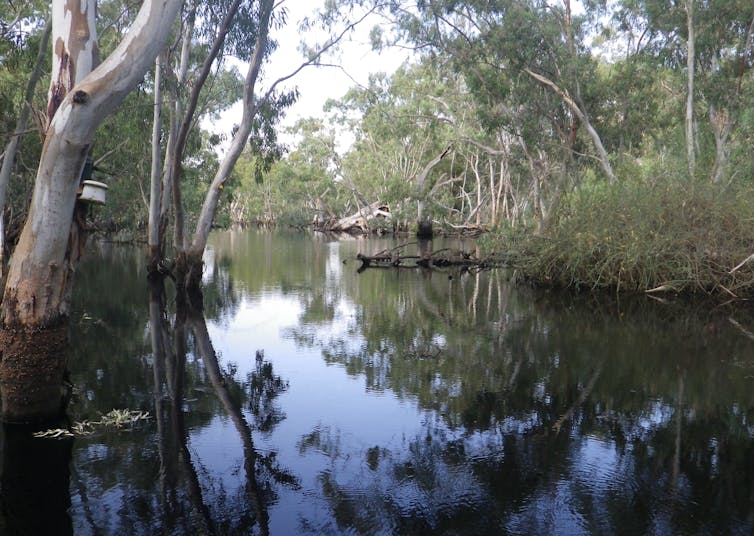
Addressing An Imbalance
Healthy wetlands rely on varying river flows. When a river is flooding or at high flow, water is delivered to wetlands, enabling seeds to sprout and animals to move and breed. When the river is at low flow, wetlands enter a natural drying phase.
But across Australia, thousands of wetlands have lost their natural connection to rivers. Lower river flows – the result of water regulation and diversions required to meet human needs – means many wetlands no longer experience these natural cycles.
Environmental flows seek to address this imbalance. Managed by water authorities, the flows involve strategically delivering water to replenish rivers, wetlands and floodplains.
Our project – a design-science collaboration – was funded by the Commonwealth Environmental Water Office’s Flow-MER program, which undertakes long-term monitoring of the ecological impact of environmental water allocations.
The Sound Of Water
Across nine days in spring of 2020, an environmental flow of about 16,000 million litres rolled into Nap Nap swamp in the Lowbidgee floodplain after a brief dry spell. The Lowbidgee floodplain is near the confluence of the Kalari (Lachlan) and Murrumbidgee rivers in New South Wales.
The frogs began calling as the water returned. But don’t take our word for it - listen for yourself:
In this clip, you can hear the squelchy, “cree-cree” call of tiny, hardy Murray Valley froglets. You can also hear inland banjo frogs, whose “dok” call sounds a bit like a plucked string; spotted marsh frogs with a machine-gun like “duk-duk-duk”; and the shrill, rattling call of Peron’s tree frog.
This recording comes from an audio logger used in Flow-MER’s environmental monitoring. These automatic devices record for five minutes every hour, day and night – that’s two hours of sound captured every day.
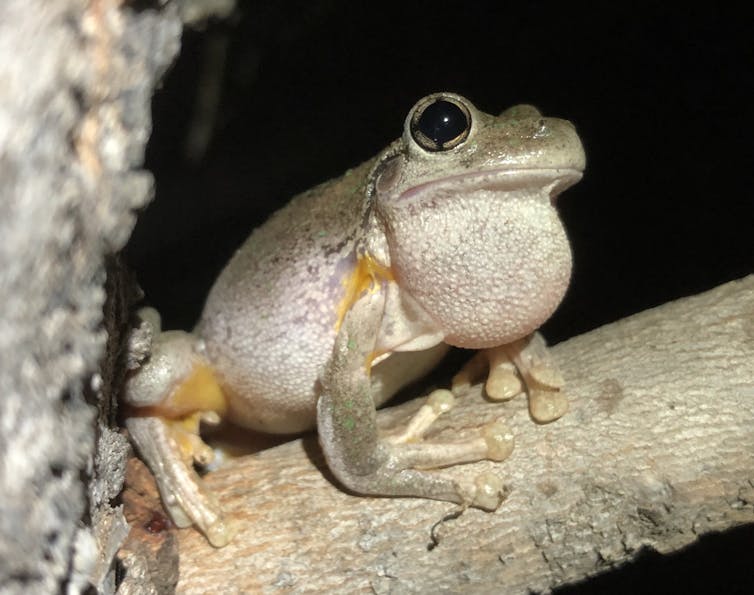
Seeing Wetland Sounds
To reveal the content of all this audio, we used a visual representation of sound known as a spectrogram. We adapted a technique developed by researchers at the Queensland University of Technology which enables ecologists to visualise and analyse thousands of hours of recordings.
We visualised almost a year’s worth of audio from Nap Nap – more than 700 hours.
The below image contains spectrograms of audio from June 2020, which was a dry period in the swamp. The colourful central band corresponds to the noisy daylight hours, when woodland birds dominate.
The vivid blue areas are wind and rain noise. The pink and orange are mostly bird calls, and continuous sounds like cricket calls show up as strong horizontal bands (top right).
The mostly dark outer bands correspond to the nights, which in dry periods are fairly quiet.
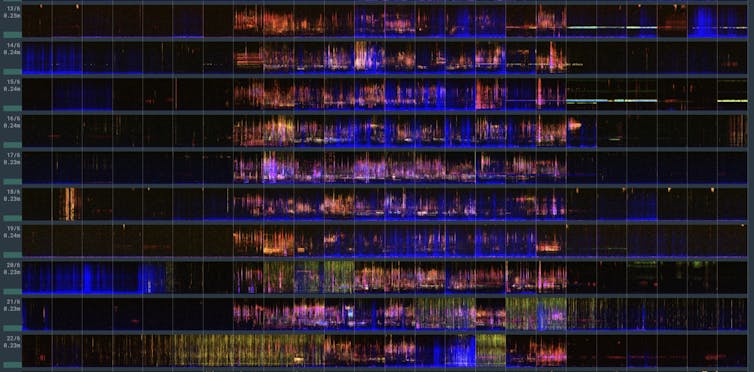
But as the environmental water flow reached Nap Nap, the night lit up with frog calls. Our story focuses on this moment. We found a way to link the visuals to the source audio, creating interactive timelines in which we can see, hear and explore the wetland soundscape.
The stars of our story are Nap Nap’s frogs, and our most important find was a southern bell frog. Once widespread across southeastern Australia, these frogs are now found in only a few isolated populations.
Their distinctive call indicates the ecological health of Nap Nap, and the value of these environmental flows. Here you can listen to its deep, growling call, which appears as a sequence of pink and purple blobs along the bottom of the spectrogram.
A Data Portrait Of A Living Place
Our design uses a scroll-based interaction technique sometimes termed “scrollytelling”. It works because it’s familiar (everyone can scroll) and translates well to all kinds of devices. It lets us lead the audience step by step into the place, the data and the spectrograms, while still encouraging exploration.
The Sound of Water builds on established techniques to create something new. It shows how design and science can unite to tell environmental stories in a richer way – with both facts and feelings. This matters because Nap Nap, and thousands of places like it, need people to care about their protection.
To explore the full version of The Sound of Water, click here.![]()
Mitchell Whitelaw, Professor of Design, School of Art and Design, Australian National University and Skye Wassens, Associate Professor in Ecology, Charles Sturt University
This article is republished from The Conversation under a Creative Commons license. Read the original article.
Fire management in Australia has reached a crossroads and ‘business as usual’ won’t cut it
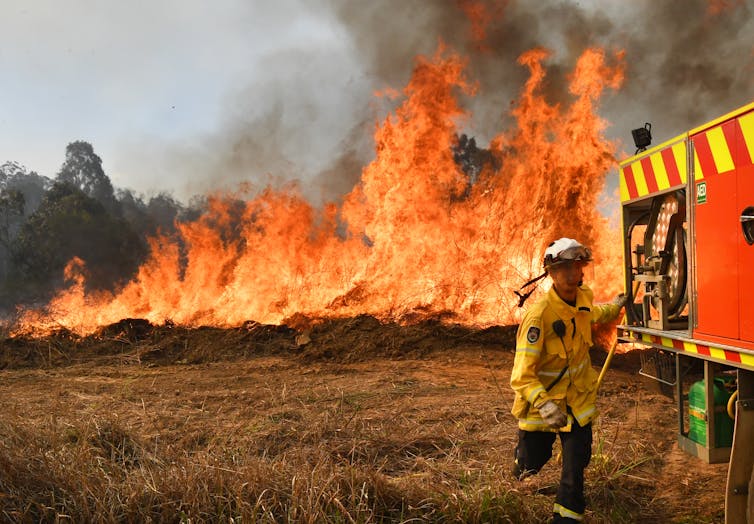
The current wet conditions delivered by La Niña may have caused widespread flooding, but they’ve also provided a reprieve from the threat of bushfires in southeastern Australia. This is an ideal time to consider how we prepare for the next bushfire season.
Dry conditions will eventually return, as will fire. So, two years on from the catastrophic Black Summer fires, is Australia better equipped for a future of extreme fire seasons?
In our recent synthesis on the Black Summer fires, we argue climate change is exceeding the capacity of our ecological and social systems to adapt. The paper is based on a series of reports we, and other experts from the NSW Bushfire Risk Management Research Hub, were commissioned to produce for the NSW government’s bushfire inquiry.
Fire management in Australia has reached a crossroads, and “business as usual” won’t cut it. In this era of mega-fires, diverse strategies are urgently needed so we can safely live with fire.

Does Prescribed Burning Work?
Various government inquiries following the Black Summer fires of 2019-20 produced wide-ranging recommendations for how to prepare and respond to bushfires. Similar inquiries have been held since 1939 after previous bushfires.
Typically, these inquiries led to major changes to policy and funding. But almost universally, this was followed by a gradual complacency and failure to put policies into practice.
If any fire season can provide the catalyst for sustained changes to fire management, it is Black Summer. So, what have we learnt from that disaster and are we now better prepared?
To answer the first question, we turn to our analyses for the NSW Bushfire Inquiry.
Following the Black Summer fires, debate emerged about whether hazard reduction burning by fire authorities ahead of the fire season had been sufficient, or whether excessive “fuel loads” – such as dead leaves, bark and shrubs – had been allowed to accumulate.
We found no evidence the fires were driven by above-average fuel loads stemming from a lack of planned burning. In fact, hazard reduction burns conducted in the years leading up to the Black Summer fires effectively reduced the probability of high severity fire, and reduced the number of houses destroyed by fire.

Instead, we found the fires were primarily driven by record-breaking fuel dryness and extreme weather conditions. These conditions were due to natural climate variability, but made worse by climate change. Most fires were sparked by lightning, and very few were thought to be the result of arson.
These extreme weather conditions meant the effectiveness of prescribed burns was reduced – particularly when an area had not burned for more than five years.
All this means that hazard reduction burning in NSW is generally effective, however in the face of worsening climate change new policy responses are needed.
Diverse And Unexpected Impacts
As the Black Summer fires raged, loss of life and property most commonly occurred in regional areas while metropolitan areas were heavily affected by smoke. Smoke exposure from the disaster led to an estimated 429 deaths.
Socially disadvantaged and Indigenous populations were disproportionately affected by the fires, including by loss of income, homes and infrastructure, as well as emotional trauma. Our analyses found 38% of fire-affected areas were among the most disadvantaged, while just 10% were among the least disadvantaged.
We also found some areas with relatively large Indigenous populations were fire-affected. For example, four fire-affected areas had Indigenous populations greater than 20% including the Grafton, Eurobodalla Hinterland, Armidale and Kempsey regions.

The Black Summer fires burnt an unprecedentedly large area – half of all wet sclerophyll forests and over a third of rainforest vegetation types in NSW.
Importantly, for 257 plant species, the historical intervals between fires across their range were likely too short to allow effective regeneration. Similarly, many vegetation communities were left vulnerable to too-frequent fire, which may result in biodiversity decline, particularly as the climate changes.

Looking To The Future
So following Black Summer, how do we ensure Australia is better equipped for a future of extreme fire seasons?
As a first step, we must act on both the knowledge gained from government inquiries into the disaster, and the recommendations handed down. Importantly, long-term funding commitments are required to support bushfire management, research and innovation.
Governments have already increased investment in fire-suppression resources such as water-bombing aircraft. There’s also been increased investment in fire management such as improving fire trails and employing additional hazard reduction crews, as well as new allocations for research funding.
But alongside this, we also need investment in community-led solutions and involvement in bushfire planning and operations. This includes strong engagement between fire authorities and residents in developing strategies for hazard reduction burning, and providing greater support for people to manage fuels on private land. Support should also be available to people who decide to relocate away from high bushfire risk areas.
The Black Summer fires led to significant interest in a revival of Indigenous cultural burning – a practice that brings multiple benefits to people and environment. However, non-Indigenous land managers should not treat cultural burning as simply another hazard reduction technique, but part of a broader practice of Aboriginal-led cultural land management.

This requires structural and procedural changes in non-Indigenous land management, as well as secure, adequate and ongoing funding opportunities. Greater engagement and partnership with Aboriginal communities at all levels of fire and land management is also needed.
Under climate change, living with fire will require a multitude of new solutions and approaches. If we want to be prepared for the next major fire season, we must keep planning and investing in fire management and research – even during wet years such as this one.
Ross Bradstock, Owen Price, David Bowman, Vanessa Cavanagh, David Keith, Matthias Boer, Hamish Clarke, Trent Penman, Josh Whittaker and many others contributed to the research upon which this article is based.![]()
Rachael Helene Nolan, Senior research fellow, Western Sydney University; Grant Williamson, Research Fellow in Environmental Science, University of Tasmania; Katharine Haynes, Honorary Senior Research Fellow, University of Wollongong, and Mark Ooi, Senior Research Fellow, UNSW
This article is republished from The Conversation under a Creative Commons license. Read the original article.
Surprisingly few animals die in wildfires – and that means we can help more in the aftermath
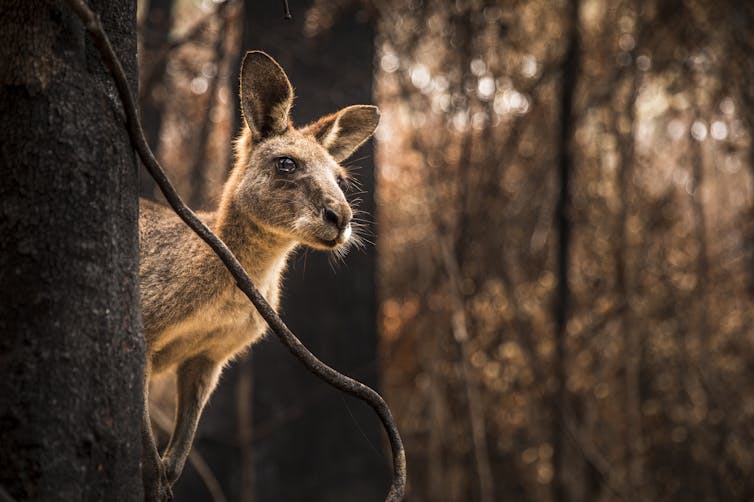
The estimate that one billion animals were killed by Australia’s 2019-20 Black Summer fires drew international attention to the fate of wildlife during fire.
This estimate assumed all animals in the fire’s path were killed by the flames, or in the immediate aftermath due to injury, predation, dehydration or starvation.
However, our new research, published today in Global Change Biology, suggests that, on average, the vast majority of animals (more than 90%) actually survive the immediate passage of a typical fire. But there are precious few studies of animal survival through catastrophic fires, such as those observed during Australia’s Black Summer.
We urgently need data on how animals cope with megafires, given these are expected to increase in a warming world.
How Do We Know How Many Animals Are Killed By Fire?
How do researchers actually know the fate of wildlife exposed to fire? The most reliable way is to track animals wearing radio or GPS collars.
As fire passes through a landscape, animals in its path unable to flee or find shelter often die from the the flames, radiant heat, or smoke. By tracking these individuals, as well as those that survived, we can calculate the proportion of animals that live and die during fire.

We systematically reviewed all studies tracking animal survival during fires from around the world. The 31 studies we found came largely from Australia and North America. The fires included planned burns, as well as opportunistic studies where an unexpected wildfire passed through an existing animal tracking programme.
Studies mostly tracked mammals and reptiles, though some included birds and amphibians. Animals studied ranged from tiny red-backed fairywrens weighing only 8 grams through to African bush elephants, the world’s largest terrestrial vertebrate at up to 4.4 tonnes.
So what did we find? The most remarkable finding is that almost two-thirds of studies (65%) found zero animal deaths directly caused by the fires. It turns out animals are surprisingly good at avoiding oncoming fire. Some animals may have evolved these tricks over time.
For instance, all mountain brushtail possums tracked through Victoria’s intense 2009 Black Saturday fires survived.
It’s important to note the 31 studies often tracked only a handful of animals (half tracked less than ten individuals), with a wide variation in death rates. In one study, for instance, up to 40% of rattlesnakes were killed. However, this study only tracked five snakes, two of which perished in the fire.
When we aggregated the studies we found something interesting. On average, fires killed just 3% of tracked animals. This figure rose to 7% for studies tracking animal survival through high severity fires.
Not all fires are the same, and some animals are good at surviving one kind of fire, but succumb to other fires. Take frill-necked lizards, who typically shelter in the tree canopy during fires in northern Australia. When they employed this tactic during cool, early dry season fires, all tracked lizards survived.
When more severe fires occurred later in the dry season, a quarter of the lizards were killed. Many that remained in place were killed by flames that scorched the canopy. Those savvy enough to shelter in termite mounds survived.
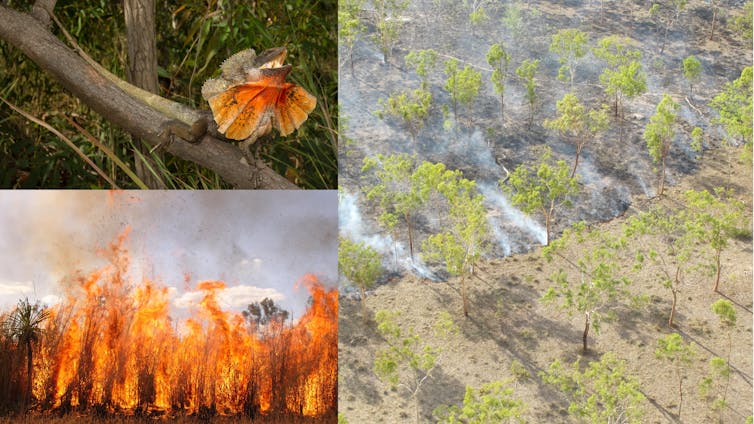
The Silver Lining: All Is Not Lost After Fire
When you read a headline about the number of animals killed in fires, it can be easy to despair.
That’s why we believe our research is good news. Why? Because it means there may be a narrow window of opportunity after fires to have a real impact, by helping animals survive the challenging post-fire period.
You might remember stories of helicopters dropping sweet potatoes and carrots to starving rock wallabies immediately following the Black Summer fires.
Our research suggests this is exactly the time to act to help as much wildlife as possible.
That’s because the post-fire landscape is exceptionally challenging for surviving wildlife. For months afterwards, home has turned hostile for animals.
It’s very hard to find shelter, with food and water also scarce. Predators roam, looking for easy pickings.
So what can be done? Efforts to reduce these dangers are key, such as supplementing food and water, and even dropping in temporary shelter options. Controlling foxes and cats might also help.
Taken together, this package could help save threatened species after wildfire – even from high-severity megafires. But these interventions need to be monitored to assess their effectiveness.
Can Animals Cope With Megafires?
At present, we know next to nothing about animal death rates during catastrophic fire events like the megafires raging over the Black Summer.
Although animals might survive typical fire, there are increasing instances of fires around the world that display extreme behaviour. For instance, the numerous fire storms that occurred during the Black Summer probably left a narrow pathway to survival for many species.
We simply lack the data to provide justifiable estimates of how many animals are killed across such vast areas during such extreme fires.
As climate change intensifies, megafires are likely to become more common. Even if populations are resilient to individual megafires, their cumulative impacts may gradually erode that resilience. We also need to consider the major impact fires can have on habitat, which can last for decades or centuries.
We will urgently need to find ways of helping wildlife before and after these fires.![]()
Chris J Jolly, Postdoctoral Research Fellow, Charles Sturt University and Dale Nimmo, Associate Professor in Ecology, Charles Sturt University
This article is republished from The Conversation under a Creative Commons license. Read the original article.
This WA town just topped 50℃ – a dangerous temperature many Australians will have to get used to

While Australians are used to summer heat, most of us only have to endure the occasional day over 40℃.
Yesterday though, the temperature peaked at 50.7℃ in Onslow, a small Western Australian town around 100km from Exmouth.
Remarkably, the town sits right next to the ocean, which usually provides cooling. By contrast, the infamously hot WA town of Marble Bar has only reached 49.6℃ this summer, despite its inland location.
If confirmed, the Onslow temperature would equal Australia’s hottest on record set in Oodnadatta, South Australia, in January 1960. It would also mark only the fourth day over 50℃ for an Australian location since reliable observations began.
Unfortunately, this extreme heat is becoming more common as the world heats up. The number of days over 50℃ has doubled since the 1980s. These dangerous temperatures are now being recorded more often – not just in Australia but in cities in Pakistan, India and the Persian Gulf. This poses real threats to the health of people enduring them.
Where Did The Heat Come From?
Hitting such extreme temperatures requires heat to build up over several days.
Onslow’s temperatures had been close to average since a couple of heatwaves struck the Pilbara in the second half of December. So where did this unusual heat come from?
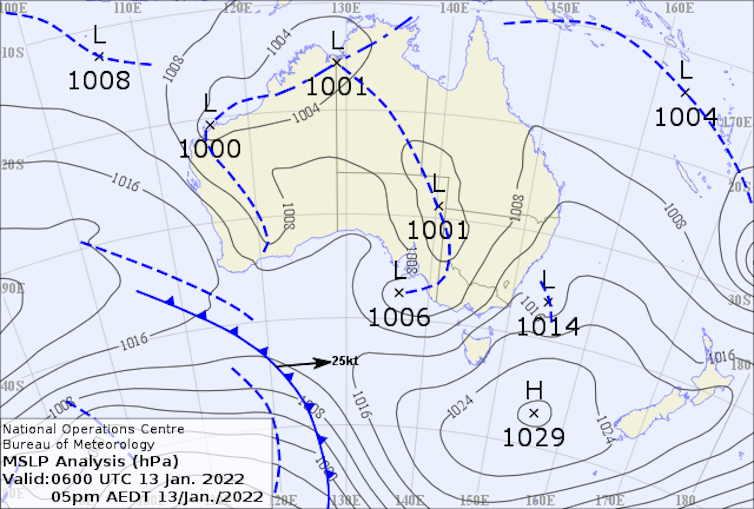
In short, from the bakingly hot desert. South to south-easterly winds blew very hot air from the interior of the state up to Onslow. The wind came from an area that has had little to no rainfall since November, so the very hot air was also extremely dry.
Dry air kept the sun beating at full intensity by preventing any cloud cover or storm formation. The result? The temperature rose and rose through the morning and early afternoon, and the temperature spiked at over 50℃ just before 2.30pm local time.
Aren’t We In A Cooler La Niña Period?
Australia’s weather is strongly linked to conditions in the Pacific Ocean. At the moment we’re in a La Niña event where we have cooler than normal ocean temperatures near the equator in the central and east Pacific.
La Niña is typically associated with cooler, wetter conditions. But its effects on Australian weather are strongest in spring, when we had unusually wet and cool conditions over the east of the continent.
During summer the relationship between La Niña and Australian weather usually weakens, with its strongest impacts normally confined to the northeast of the continent.
During La Niña we typically see fewer and less intense heatwaves across much of eastern Australia, but the intensity of heat extremes in Western Australia is not very different between La Niña and El Niño.
The pattern of extreme heat in Western Australia and flooding in parts of Queensland is fairly typical of a La Niña summer, although temperatures over 50℃ are extremely rare.
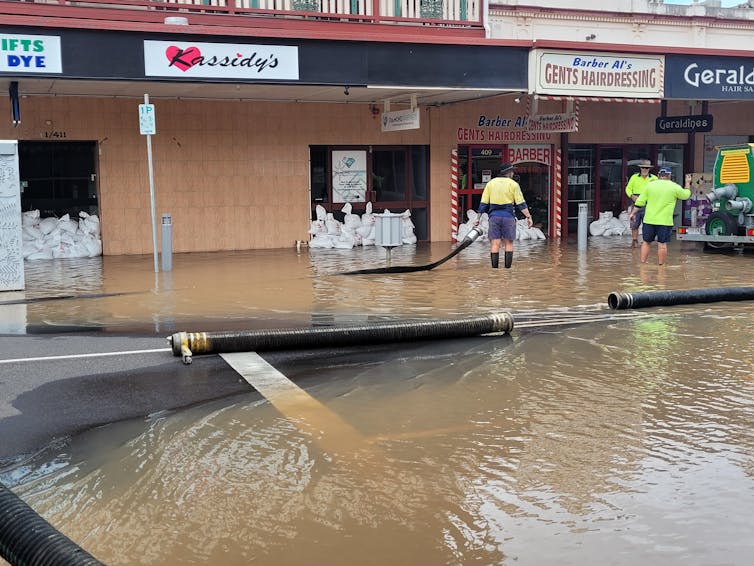
Climate Change Is Cranking Up The Heat
Should these temperatures be a surprise? Sadly, no. Australia has warmed by around 1.4℃ since 1910, well ahead of the global average of 1.1℃.
In northern Australia, summer-average temperatures have not risen as much as other parts of the country, because summers in the Top End have also got wetter. That’s in line with climate change models.
When the conditions are right in the Pilbara, however, heat is significantly more extreme than it used to be. Heat events in the region have become more frequent, more intense, and longer-lasting, just as in most other regions.
Most of us have chosen not to live in Australia’s hottest areas. So you might think you don’t need to worry about 50℃ heatwaves. But as the climate continues to warm, heatwave conditions are expected to become much more common and extreme across the continent.
In urban areas, roads and concrete soak up the sun’s heat, raising maximum temperatures by several degrees and making for dangerous conditions.
Even if we keep global warming below 2℃ in line with the Paris Agreement, we can still expect to see our first 50℃ days in Sydney and Melbourne in coming years. In January 2020 the Western Sydney suburb of Penrith came very close, reaching 48.9℃.

As you know, it’s going to be very hard to achieve even keeping global warming below 2℃, given the need to urgently slash greenhouse gas emissions in the next decade.
As it stands, the world’s actions on emission reduction suggest we are actually on track for around 2.7℃ of warming, which would see devastating consequences for life on Earth.
We already know what we need to do to prevent this frightening future. The stronger the action to reduce greenhouse gas emissions globally – including by major carbon emitting countries such as Australia – the less the world will warm and the less Australian heat extremes will intensify. That’s because the relationships between greenhouse gas emissions, global temperatures and Australian heat extremes are roughly linear.
You may think Australians are good at surviving the heat. But the climate you were born in doesn’t exist any more. Sadly, our farms, wildlife, and suburbs will struggle to cope with the extreme heat projected for coming decades.
Let’s work to make this 50℃ record an outlier – and not the new normal.![]()
Andrew King, Senior Lecturer in Climate Science, The University of Melbourne
This article is republished from The Conversation under a Creative Commons license. Read the original article.
Ocean heat is at record levels, with major consequences

The world witnessed record-breaking climate and weather disasters in 2021, from destructive flash floods that swept through mountain towns in Europe and inundated subway systems in China and the U.S., to heat waves and wildfires. Typhoon Rai killed over 400 people in the Philippines; Hurricane Ida caused an estimated US$74 billion in damage in the U.S.
Globally, it was the sixth hottest year on record for surface temperatures, according to data released by NASA and the National Oceanic and Atmospheric Administration in their annual global climate report on Jan. 13, 2022. But under the surface, ocean temperatures set new heat records in 2021.
As climate scientist Kevin Trenberth explains, while the temperature at Earth’s surface is what people experience day to day, the temperature in the upper part of the ocean is a better indicator of how excess heat is accumulating on the planet.
The Conversation spoke with Trenberth, coauthor of a study published on Jan. 11, 2022, by 23 researchers at 14 institutes that tracked warming in the world’s oceans.
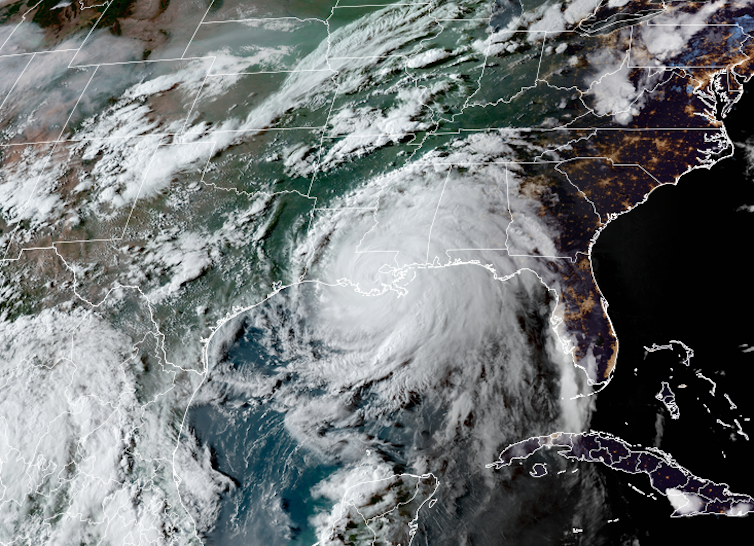
Your Latest Research Shows Ocean Heat Is At Record Highs. What Does That Tell Us About Global Warming?
The world’s oceans are hotter than ever recorded, and their heat has increased each decade since the 1960s. This relentless increase is a primary indicator of human-induced climate change.
As oceans warm, their heat supercharges weather systems, creating more powerful storms and hurricanes, and more intense rainfall. That threatens human lives and livelihoods as well as marine life.
The oceans take up about 93% of the extra energy trapped by the increasing greenhouse gases from human activities, particularly burning fossil fuels. Because water holds more heat than land does and the volumes involved are immense, the upper oceans are a primary memory of global warming. I explain this in more detail in my new book “The Changing Flow of Energy Through the Climate System.”
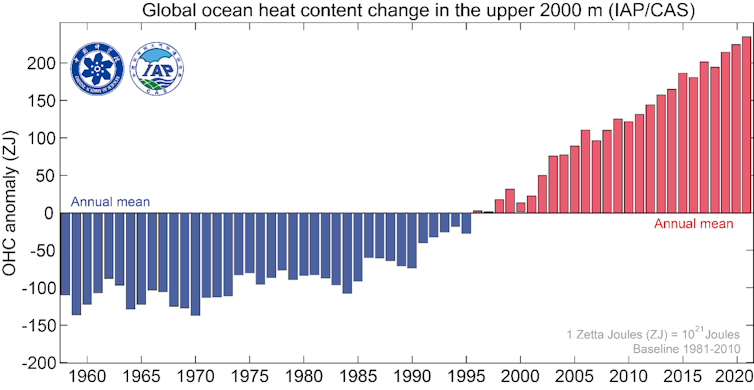
Our study provided the first analysis of 2021’s ocean warming, and we were able to attribute the warming to human activities. Global warming is alive and well, unfortunately.
The global mean surface temperature was the fifth or sixth warmest on record in 2021 (the record depends on the dataset used), in part, because of the year-long La Niña conditions, in which cool conditions in the tropical Pacific influence weather patterns around the world.
There is a lot more natural variability in surface air temperatures than in ocean temperatures because of El Niño/La Niña and weather events. That natural variability on top of a warming ocean creates hot spots, sometimes called “marine heat waves,” that vary from year to year. Those hot spots have profound influences on marine life, from tiny plankton to fish, marine mammals and birds. Other hot spots are responsible for more activity in the atmosphere, such as hurricanes.
While surface temperatures are both a consequence and a cause, the main source of the phenomena causing extremes relates to ocean heat that energizes weather systems.

We found that all oceans are warming, with the largest amounts of warming in the Atlantic Ocean and in the Southern Ocean surrounding Antarctica. That’s a concern for Antarctica’s ice – heat in the Southern Ocean can creep under Antarctica’s ice shelves, thinning them and resulting in calving off of huge icebergs. Warming oceans are also a concern for sea level rise.
In What Ways Does Extra Ocean Heat Affect Air Temperature And Moisture On Land?
The global heating increases evaporation and drying on land, as well as raising temperatures, increasing risk of heat waves and wildfires. We’ve seen the impact in 2021, especially in western North America, but also amid heat waves in Russia, Greece, Italy and Turkey.
The warmer oceans also supply atmospheric rivers of moisture to land areas, increasing the risk of flooding, like the U.S. West Coast has been experiencing.
2021 Saw Several Destructive Cyclones, Including Hurricane Ida In The U.S. And Typhoon Rai In The Philippines. How Does Ocean Temperature Affect Storms Like Those?
Warmer oceans provide extra moisture to the atmosphere. That extra moisture fuels storms, especially hurricanes. The result can be prodigious rainfall, as the U.S. saw from Ida, and widespread flooding as occurred in many places over the past year.
The storms may also become more intense, bigger and last longer. Several major flooding events have occurred in Australia this past year, and also in New Zealand. Bigger snowfalls can also occur in winter provided temperatures remain below about freezing because warmer air holds more moisture.
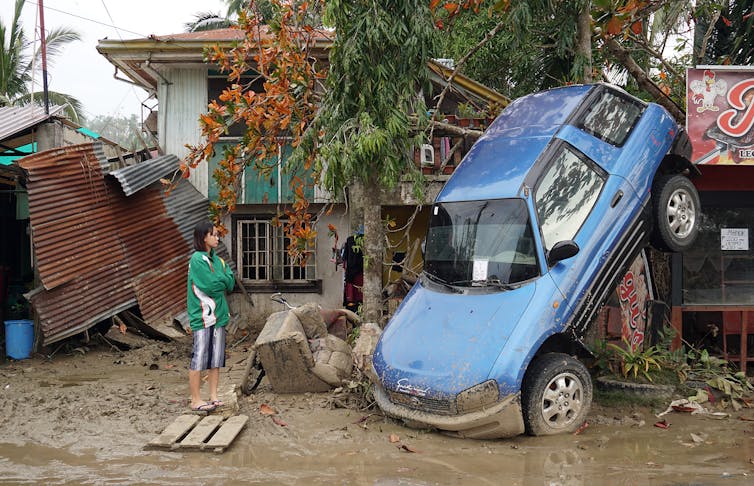
If Greenhouse Gas Emissions Slowed, Would The Ocean Cool Down?
In the oceans, warm water sits on top of cooler denser waters. However, the oceans warm from the top down, and consequently the ocean is becoming more stratified. This inhibits mixing between layers that otherwise allows the ocean to warm to deeper levels and to take up carbon dioxide and oxygen. Hence it impacts all marine life.
We found that the top 500 meters of the ocean has clearly been warming since 1980; the 500-1,000 meter depths have been warming since about 1990; the 1,000-1,500 meter depths since 1998; and below 1,500 meters since about 2005.
The slow penetration of heat downward means that oceans will continue to warm, and sea level will continue to rise even after greenhouse gases are stabilized.
The final area to pay attention to is the need to expand scientists’ ability to monitor changes in the oceans. One way we do this is through the Argo array – currently about 3,900 profiling floats that send back data on temperature and salinity from the surface to about 2,000 meters in depth, measured as they rise up and then sink back down, in ocean basins around the world. These robotic, diving and drifting instruments require constant replenishment and their observations are invaluable.
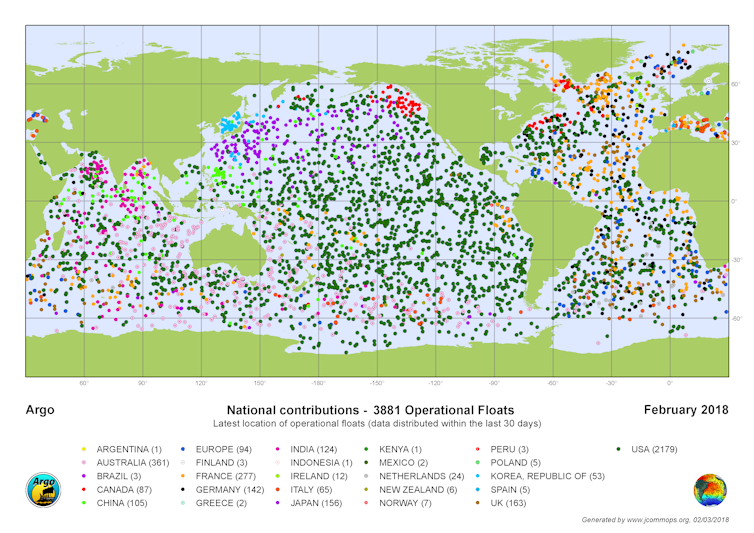
[Understand new developments in science, health and technology, each week. Subscribe to The Conversation’s science newsletter.]![]()
Kevin Trenberth, Distinguished Scholar, NCAR; Affiliated Faculty, University of Auckland
This article is republished from The Conversation under a Creative Commons license. Read the original article.
Green hydrogen is coming - and these Australian regions are well placed to build our new export industry

You might remember hearing a lot about green hydrogen last year, as global pressure mounted on Australia to take stronger action on climate change ahead of the COP26 Glasgow summit last November.
The government predicts green hydrogen exports and domestic use could be worth up to A$50 billion within 30 years, helping the world achieve deep decarbonisation.
But how close are we really to a green hydrogen industry? And which states are best placed to host it? My research shows that as of next year, and based on where the cheapest renewables are, the best places to produce green hydrogen are far north Queensland and Tasmania.
As ever more renewable energy pours into our grid, this picture will change. By the end of the decade, the north Queensland coast could become the hydrogen powerhouse. By 2040, dirt-cheap solar should make inland areas across New South Wales, Queensland, Victoria and South Australia the lowest cost producers.
Renewable Energy You Can Store And Transport
Why is there so much buzz around green hydrogen? In short, because it offers us a zero emissions way to transport energy. Take cheap renewable energy and use it to split water into hydrogen and oxygen using an electrolyser. Store the hydrogen on trucks, ship it overseas, or send it by pipeline. Then use the hydrogen for transport, manufacturing or electricity production.

All the technology exists – it’s the cost holding the industry back at present. That’s where Australia and its wealth of cheap renewable energy comes in.
Making hydrogen is nothing new – it has a long history of use in fertiliser production and oil refining. But until now, the main source for hydrogen was gas, a fossil fuel.
In the last few years, however, there has been a sudden surge of interest and investment in green hydrogen, and new technology pathways have emerged to produce cheap green hydrogen. As global decarbonisation gathers steam, Japan, South Korea and parts of Europe are looking for clean alternatives to replace the role fossil fuels have played in their economies.
Australia is exceptionally well placed to deliver these alternatives, with world-beating renewable resources and ports set up for our existing fossil fuel exports, such as coal and LNG.
In 2019, we sold almost $64 billion of black coal, with most going to Japan, South Korea, India and China. As these countries decarbonise, the coal industry will shrink. Green hydrogen could be an excellent replacement.
How Competitive Is Australian Hydrogen?
At present, Australia is a long way from producing green hydrogen cheap enough to compete with fossil fuels, given we seem to have no appetite for taxing carbon pollution.
Does that mean it’s a non-starter? Hardly. It was only a decade ago sceptics ridiculed solar and wind as too expensive. They’ve gone awfully quiet as renewable prices fell, and fell, and fell – as tracked by the International Renewable Energy Agency. Now renewables are cheaper than coal. Battery storage, too, has fallen drastically in price. The same forces are at work on the key technology we need – cheaper electrolysers.
By 2040, the CSIRO predicts an 83% fall in electrolyser costs, according to its Gencost 2021-22 report. By contrast, gas-derived hydrogen with carbon capture is predicted to reduce in cost only slightly. That means green hydrogen is likely to capture much of the market for hydrogen from 2030 onwards.
Which States Could Benefit?
My research with the Victorian Hydrogen Hub) shows as of next year, the lowest cost location for green hydrogen would be Far North Queensland ($4.1/kg) and Tasmania ($4.4/kg) due to high renewable resources.
But this picture will change. By 2030, northern Queensland’s coastal regions could be the Australian hydrogen powerhouse due to a combination of cheap solar and access to ports. Western Australia and the Northern Territory could also have similar advantages, though the modelling for these areas has not yet been done.
As solar energy and electrolyser costs continue to fall, new states could enter the green hydrogen economy. In CSIRO’s cost predictions, electricity from solar is predicted to become much cheaper than wind by 2040. This means sunny areas like central and northern Queensland ($1.7/kg) and inland NSW, Victoria and South Australia ($1.8/kg) could be the best locations for green hydrogen production.
In making these estimates, I do not consider supply chain and storage infrastructure required to deliver the hydrogen. Transport could account for between $0.05/kg to $0.75/kg depending on distance.
Comparing my modelling to price thresholds set out in the National Hydrogen Strategy indicates we can produce green hydrogen for trucking at a similar cost to diesel within four years. Fertiliser would take longer, becoming competitive by 2040.
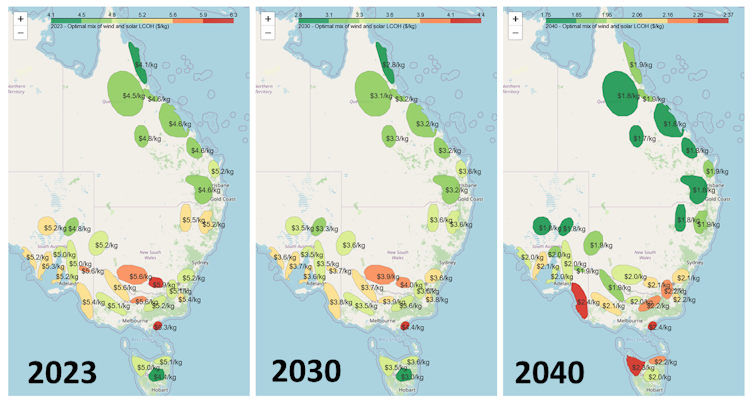
Does Our Dry Country Have The Water Resources For Green Hydrogen?
If we achieved the $50 billion green hydrogen industry the government is aiming for, how much water would it consume? Surprisingly little. It would take only around 4% of the water we used for our crops and pastures in 2019-20 to generate an export industry that size – 225,000 megalitres.
Much more water than this will be freed up as coal-fired power stations exit the grid. In Queensland and NSW alone, these power stations consume around 158,000 megalitres a year according to a 2020 report prepared for the Australian Conservation Foundation. Coal mining in these two states takes an additional 224,000 megalitres.
As the cost of renewable energy falls and falls, we will also be able to desalinate seawater along our coasts to produce hydrogen. We estimate this would account for only about 1% of the cost of producing hydrogen, based on Australian Water Association desalination cost estimates.
How Can We Get There Faster?
This decade, we must plan for our new hydrogen economy. Government and industry will need to develop and support new hydrogen infrastructure projects to produce, distribute, use and export hydrogen at scale.
We’re already seeing promising signs of progress, as major mining companies move strongly into green hydrogen.
Now we need governments across Australia to rapidly get optimal policy and regulations in place to allow the industry to develop and thrive.![]()
Steven Percy, Senior Research Fellow, Victorian Hydrogen Hub, Swinburne University of Technology
This article is republished from The Conversation under a Creative Commons license. Read the original article.
Sponges can survive low oxygen and warming waters. They could be the main reef organisms in the future
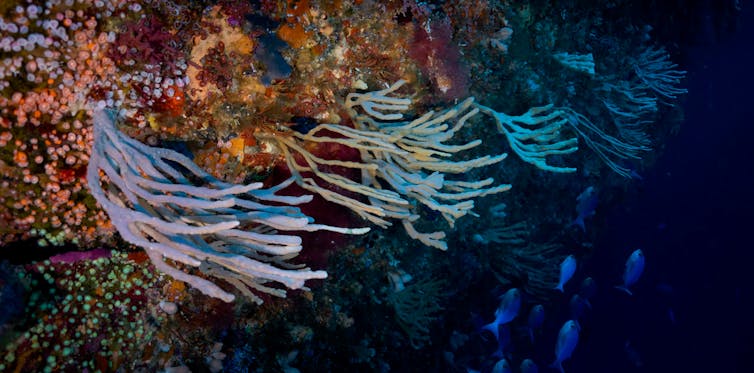
Sponges are ancient marine animals, very common throughout the world’s oceans and seem less affected by ocean warming and acidification.
Our latest research shows they can also survive low levels of oxygen.
This is a surprising finding because most sponges are rarely exposed naturally to low oxygen in modern seas.
We propose their tolerance is the result of their long evolutionary history and exposure to variable oxygen concentrations through geological time.
As our oceans continue to warm due to climate change, they are expected to hold less oxygen.
The ability of sponges to survive low-oxygen conditions means they are likely to tolerate these possible future environments better than other organisms living on the seafloor.

There are an estimated 8000-plus sponge species in the oceans. They are multicellular organisms with a body architecture built around a system of water canals, pores and channels allowing water to be pumped and circulated through them.
Their specialised pumping and feeding cells, called choanocytes, are highly efficient. Sponges can pump the equivalent of their own body volume in a matter of seconds.
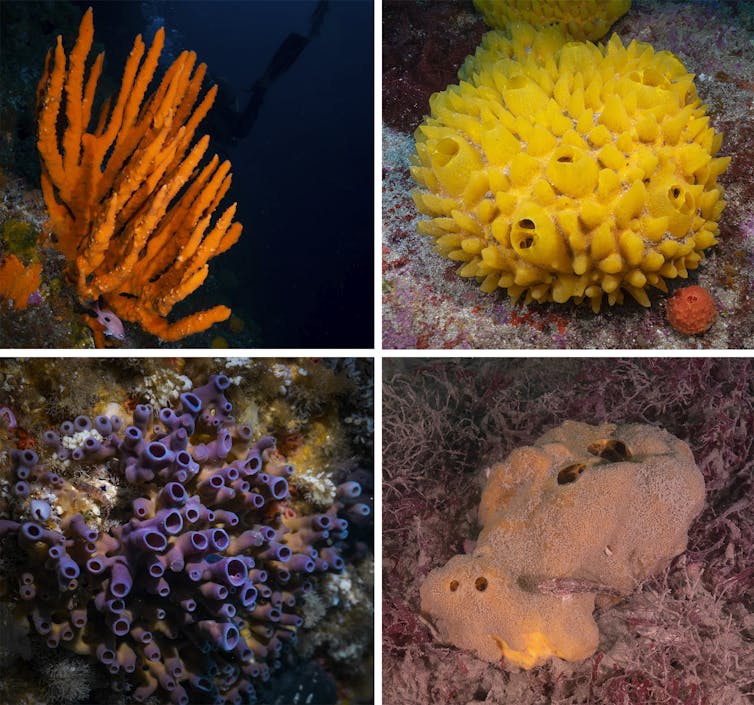
In modern oceans, sponges are often the most abundant organisms in rocky reef environments. They fulfil important ecological functions as part of bottom-dwelling (benthic) communities worldwide.
Sponges have many roles in marine ecosystems, but their water-processing ability and efficiency at capturing small particles is the most important because it links the water column with the seafloor. Sponges also support diverse seafloor communities by transforming carbon.
Some sponge species have been shown to be very tolerant to climate change stressors, particularly changing temperature and acidity (measured as pH). This means sponges could be future winners in changing oceans.
Sponges In Past Oceans
We know that sponges are ancient organisms, but recently described 890-million-year-old fossils have turned our understanding of evolution on its head.
Most major animal groups, including arthropods and worms, first appear in the fossil record during a period known as the Cambrian explosion, 540 million years ago. But if the newly-described fossils are indeed sponges, they would have existed nearly 300 million years earlier, significantly pushing back the date of Earth’s earliest known animals.
If the ancestors of modern sponges are about 900 million years old, they would have evolved and survived during the Marinoan glaciation, 657-645 million years ago, when the oceans were extremely low in oxygen.
They would have also likely experienced wide fluctuations in other environmental conditions such as pH, temperature and salinity through evolutionary time.
Sponge Tolerance To Low Oxygen
Our recent environmental tolerance experiments support this scenario, showing they are surprisingly tolerant to low levels of oxygen.
We assessed the response of sponges to moderate and severe low-oxygen events in a series of laboratory experiments on four species from the northeast Atlantic and southwest Pacific. Sponges were exposed to a total of five low-oxygen treatments, with increasing severity (40%, 20%, 6%, 5% and 1.5% air saturation) over seven to 12 days.
We found the sponges generally very tolerant of hypoxia. All but one of the species survived in the extreme experimental conditions, and that species only began to die off at the lowest oxygen concentration. In most experiments, hypoxic conditions did not significantly affect the sponges’ respiration rates, which suggests they can take up oxygen at very low concentrations in the surrounding environment.
As a response to the low oxygen, sponges displayed a number of shape and structural changes, likely maximising their ability to take up oxygen at these low levels.
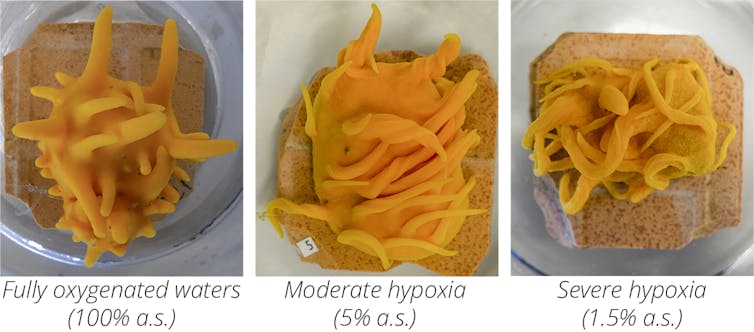
Sponges In Future Oceans
Warmer ocean water holds less oxygen, and ocean deoxygenation is one of the major consequences of climate change.
Warmer water also becomes more buoyant than cooler water, which reduces the mixing of surface oxygenated water with deeper layers that naturally contain less oxygen. At the same time, warmer temperatures increase the demand of organisms for oxygen as metabolic rates increase and stress responses are initiated.
While oxygen levels in the ocean are only expected to fall on average by 4% across all oceans, these effects are likely to be much more extreme locally and regionally. In coastal waters, climate-driven ocean deoxygenation can be exacerbated by a process called eutrophication, essentially an increase in nutrients. This fuels plankton blooms, and when bacteria breakdown the dead phytoplankton, they use up all the oxygen.
Since the land is generally the source of these excess nutrients, shallow coastal areas are most at risk. These are areas where rocky reefs are typically dominated by sponges, particularly just below the depth of light penetration (typically 20-30m).
Our finding lends further support to the idea that sponges will be the survivors if our oceans continue to warm.![]()
James Bell, Professor of Marine Biology, Te Herenga Waka — Victoria University of Wellington; Rob McAllen, Professor of Marine Conservation, University College Cork, and Valerio Micaroni, PhD Candidate in Coastal and Marine Biology and Ecology, Te Herenga Waka — Victoria University of Wellington
This article is republished from The Conversation under a Creative Commons license. Read the original article.
They live for a century and clean our rivers - but freshwater mussels are dying in droves
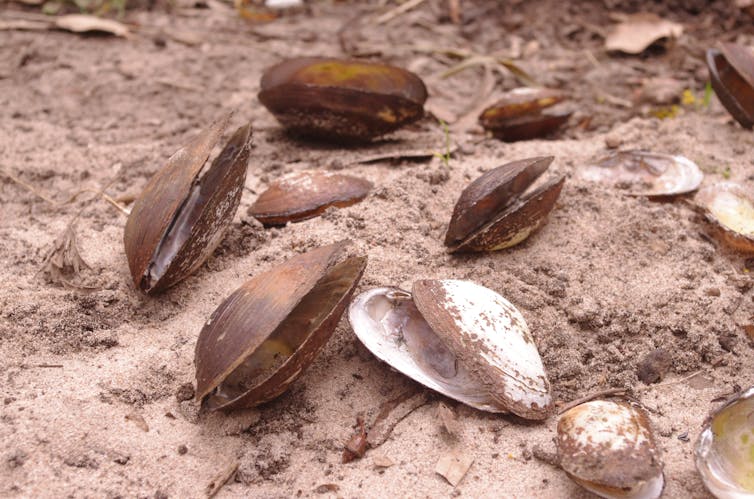
Am I not pretty enough? This article is part of The Conversation’s series introducing you to Australia’s unloved animals that need our help.
Freshwater mussels are dying suddenly and in the thousands, with each mass death event bringing these endangered molluscs closer to extinction. Tragically, these events rarely get noticed.
In March last year, for example, seawater was introduced into the lower Vasse River in south-western Australia to control harmful algal blooms. This killed the entire population of Carter’s freshwater mussel (Westralunio carteri) in this section of the river.
For me, this was particularly distressing for two reasons. First, the species was recently listed as vulnerable to extinction thanks to the work of my then graduate student Michael Klunzinger.
Second, among the 3,000-4,000 mussels killed were 160 my colleagues had previously collected from the river, kept alive in cages for nine months, then re-introduced so they would survive the construction of a new bridge.
Freshwater mussels are one of the most endangered groups of animals on the planet, with 47% either extinct or threatened with extinction. Yet we hear almost nothing about the extinction crisis they face.
I want to bring your attention to why freshwater mussels are important, why many will become extinct within our lifetimes, and why this will have dramatic consequences for freshwater environments throughout the world.
Under Threat, Yet Poorly Studied
Mass death events like the one in the Vasse River are not uncommon for freshwater mussels.
In 2019, the death of hundreds of thousands of pheasantshell mussels in the Clinch River in Tennessee, USA may have been caused by a virus, and prolonged droughts have killed mussels en masse throughout the USA and Australia.
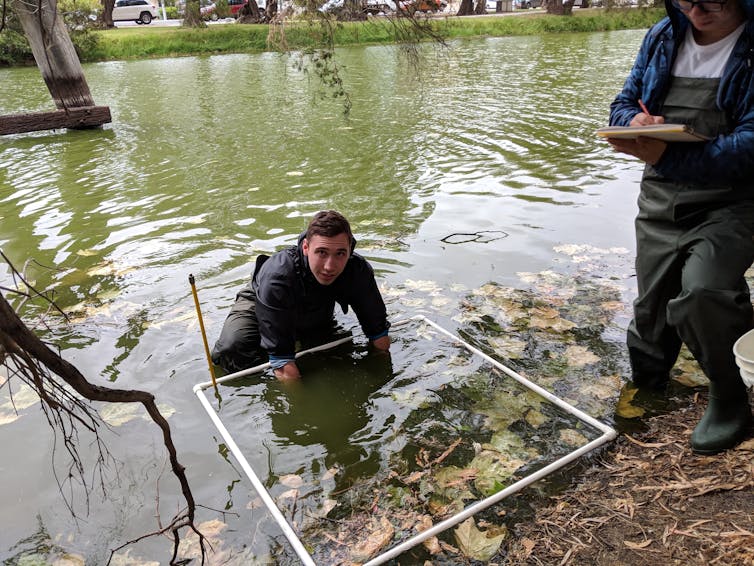
There are 18 species of freshwater mussels in Australia. Only two of these are listed as threatened under Australia’s environment law: Carter’s freshwater mussel and the Glenelg freshwater mussel (Hyridella glenelgensis).
Unfortunately, this doesn’t mean we’re doing better at mussel conservation than the rest of the world. It just means our freshwater mussels are very poorly studied. There have been no ecological assessments of the conservation status of most Australian freshwater mussels.
One of the most serious threats to freshwater mussel populations in Australia is climate change. Reduced rainfall has resulted in a dramatic reduction of water flow. In south-western Australia, for example, water flow has decreased by around 70% since the 1970s and climate change models predict at least a further 25% reduction by 2030.
This loss of flow means more of our rivers go without water over the dry season, and these drought conditions are lasting longer. Mussels can live for a short time without water by burrowing into the sediment, but longer and more severe dry spells will kill them.
Indeed, severe drought killed around 2.9 million freshwater mussels in the Murray Darling Basin between 2017 and 2020.
The Livers Of Rivers
A big reason freshwater mussels are so vulnerable is because of their unique life cycle.
Unlike marine mussels (which release their eggs and sperm into the sea), female freshwater mussels fertilise their eggs internally. The embryos grow in special pouches of the gills until they’re released as tiny larvae that are parasitic on fish.
Many mussel species have marvellous ways to attract fish when the larvae are due to be released. For example, the US pocketbook mussel (Potamilus capax) uses part of it’s body to create a lure which looks like a small fish. This lure is waved about to attract the mussel’s host fish, bass, which are predators of smaller fish.
After spending several months as a parasite, the larvae then metamorphose into juvenile mussels and drop off their host into the sediment.
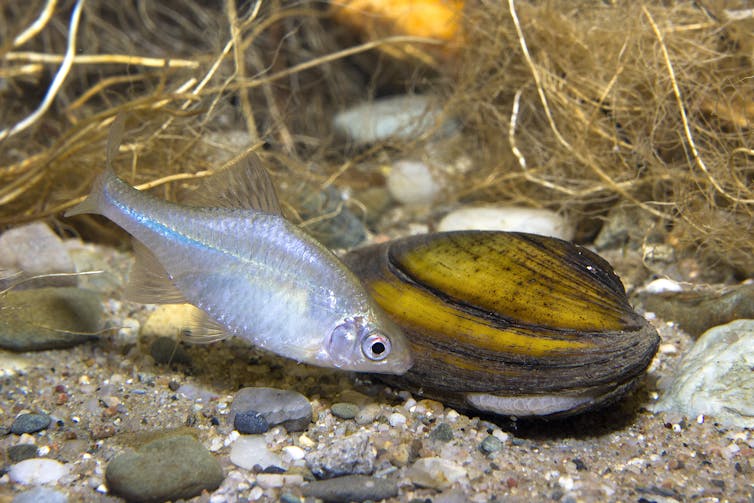
Most mussel species take five to ten years to reach sexual maturity. They are slow growing and long lived, often with a lifespan of 100 years or more. This combination of characteristics means mussel populations often cannot recover from large death events.
This can have devastating knock-on effects to the freshwater ecosystem, as mussels are considered “keystone” species.
When rivers cease to flow in dry summer months, freshwater fish and other animals find refuge in the remaining pools. Freshwater mussels behave like the livers of rivers, keeping these refuges clean and ensuring animals can survive until the rains return.
They maintain water quality by filtering and removing suspended sediments, nutrients, bacteria and algae. They also deposit nutrients on the river bottom, and their burrowing activity mixes and aerates the sediment.
Take More Notice
I was distressed that thousands of endangered mussels died in the Vasse River. I was also distressed, but not surprised, at the general lack of attention to these deaths. If a pod of dolphins had died in an estuary because of human actions, we would have heard an outcry.
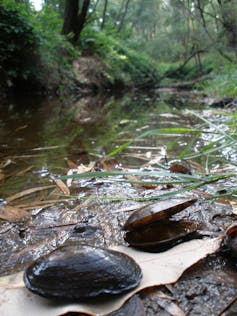
The plight of freshwater mussels illustrates a sad reality for freshwater life. Freshwater ecosystems are incredibly diverse. Per unit area, there are more than twice as many species of freshwater animals and plants than on land or in the ocean. But more than four times as many of these species are threatened with extinction.
Despite this, the conservation management of freshwater species lags far behind that of terrestrial or marine species. Freshwater environments are very poorly protected by conservation reserves and up to 71% of the world’s wetlands have been lost since 1900.
One urgent priority for Australia is to invest in freshwater protected areas, the same way as we invest in marine protected areas and terrestrial conservation reserves.
If you live near a stream, river or freshwater lake, go and visit it soon and appreciate the myriad forms of life that live below the surface. Chances are they won’t be there in the decades to come unless we develop policies and practices that protect our freshwater ecosystems. ![]()
Alan Lymbery, Professor, Harry Butler Institute, Murdoch University
This article is republished from The Conversation under a Creative Commons license. Read the original article.
Avalon Golf Course Bushcare Needs You


Pittwater Reserves + Others
A History Of The Campaign For Preservation Of The Warriewood Escarpment by David Palmer OAM and Angus Gordon OAM
Angophora Reserve - Angophora Reserve Flowers
Annie Wyatt Reserve - A Pictorial
Avalon's Village Green: Avalon Park Becomes Dunbar Park - Some History + Toongari Reserve and Catalpa Reserve
Bairne Walking Track Ku-Ring-Gai Chase NP by Kevin Murray
Bangalley Headland Bangalley Mid Winter
Banksias of Pittwater
Barrenjoey Headland: Spring flowers Barrenjoey Headland after fire
Bayview Baths
Bayview Wetlands
Beeby Park
Bilgola Beach
Botham's Beach
Bungan Beach Bush Care
Careel Bay Saltmarsh plants
Careel Bay Birds
Careel Bay Clean Up day
Careel Bay Playing Fields History and Current
Careel Creek
Careel Creek - If you rebuild it they will come
Centre trail in Ku-ring-gai Chase National Park
Chiltern Track- Ingleside by Marita Macrae
Clareville Beach
Clareville/Long Beach Reserve + some History
Coastal Stability Series: Cabbage Tree Bay To Barrenjoey To Observation Point by John Illingsworth, Pittwater Pathways, and Dr. Peter Mitchell OAM
Cowan Track by Kevin Murray
Curl Curl To Freshwater Walk: October 2021 by Kevin Murray and Joe Mills
Currawong and Palm Beach Views - Winter 2018
Currawong-Mackerel-The Basin A Stroll In Early November 2021 - photos by Selena Griffith
Currawong State Park Currawong Beach + Currawong Creek
Deep Creek To Warriewood Walk photos by Joe Mills
Drone Gives A New View On Coastal Stability; Bungan: Bungan Headland To Newport Beach + Bilgola: North Newport Beach To Avalon + Bangalley: Avalon Headland To Palm Beach
Dunbar Park - Some History + Toongari Reserve and Catalpa Reserve
Dundundra Falls Reserve: August 2020 photos by Selena Griffith - Listed in 1935
Elsie Track, Scotland Island
Elvina Track in Late Winter 2019 by Penny Gleen
Elvina Bay Walking Track: Spring 2020 photos by Joe Mills
Elvina Bay-Lovett Bay Loop Spring 2020 by Kevin Murray and Joe Mills
Fern Creek - Ingleside Escarpment To Warriewood Walk + Some History photos by Joe Mills
Ingleside
Ingleside Wildflowers August 2013
Irrawong - Ingleside Escarpment Trail Walk Spring 2020 photos by Joe Mills
Irrawong - Mullet Creek Restoration
Katandra Bushland Sanctuary - Ingleside
McCarrs Creek
McCarr's Creek to Church Point to Bayview Waterfront Path
McKay Reserve
Mona Vale Beach - A Stroll Along, Spring 2021 by Kevin Murray
Mona Vale Headland, Basin and Beach Restoration
Mount Murray Anderson Walking Track by Kevin Murray and Joe Mills
Mullet Creek
Narrabeen Creek
Narrabeen Lagoon Catchment: Past Notes Present Photos by Margaret Woods
Narrabeen Lagoon State Park
Narrabeen Lagoon State Park Expansion
Narrabeen Rockshelf Aquatic Reserve
Nerang Track, Terrey Hills by Bea Pierce
Newport Bushlink - the Crown of the Hill Linked Reserves
Newport Community Garden - Woolcott Reserve
Newport to Bilgola Bushlink 'From The Crown To The Sea' Paths: Founded In 1956 - A Tip and Quarry Becomes Green Space For People and Wildlife
Pittwater spring: waterbirds return to Wetlands
Pittwater's Lone Rangers - 120 Years of Ku-Ring-Gai Chase and the Men of Flowers Inspired by Eccleston Du Faur
Pittwater's Parallel Estuary - The Cowan 'Creek
Riddle Reserve, Bayview
Salvation Loop Trail, Ku-Ring-Gai Chase National Park- Spring 2020 - by Selena Griffith
Stapleton Reserve
Stapleton Park Reserve In Spring 2020: An Urban Ark Of Plants Found Nowhere Else
The Chiltern Track
The Resolute Beach Loop Track At West Head In Ku-Ring-Gai Chase National Park by Kevin Murray
Towlers Bay Walking Track by Joe Mills
Trafalgar Square, Newport: A 'Commons' Park Dedicated By Private Landholders - The Green Heart Of This Community
Turimetta Beach Reserve by Joe Mills, Bea Pierce and Lesley
Turimetta Beach Reserve: Old & New Images (by Kevin Murray) + Some History
Turimetta Headland
Warriewood Wetlands and Irrawong Reserve
Whale Beach Ocean Reserve: 'The Strand' - Some History On Another Great Protected Pittwater Reserve
Winji Jimmi - Water Maze

Take a closer look: how more and more students are catching the citizen science bug

This article is part of a series explaining how readers can learn the skills to take part in activities that academics love doing as part of their work.
Taxonomy was once the domain of white-coated scientists with years of university training. While this expertise is still important, everyday Australians are increasingly helping to identify species through citizen science apps. Rapid advances in smartphone and tablet cameras are helping to popularise this activity.
Biodiversity researchers are calling on citizen scientists to contribute data to fill information gaps, identify species declines and inform management decisions. And young researchers – some as young as infant school children – are stepping up to help.
Stories such as the experience of 14-year-old Luke Downey, of Canberra, inspire others to record and upload images to biodiversity databases. Earlier this year, Luke found a rare beetle, Castiarina testacea, last seen in the ACT in 1955. His observation was recorded in the Canberra Nature Map, an online repository of rare plants and animals.
I Put A Macro Lens On My Smartphone And I Was Hooked
My own inspiration to become a citizen scientist was an inexpensive macro lens now permanently affixed to my smartphone. This small portable lens photographs small subjects at very close distances. (Some newer smartphones have built-in lenses that can do this.)
I caught the “bug” of taking detailed close-up images such as the one below of stingless native bees, Tetragonula carbonaria, communing with one another and admiring – or minding – their beeswax. Sharing the images I have taken has converted others to this type of citizen science.
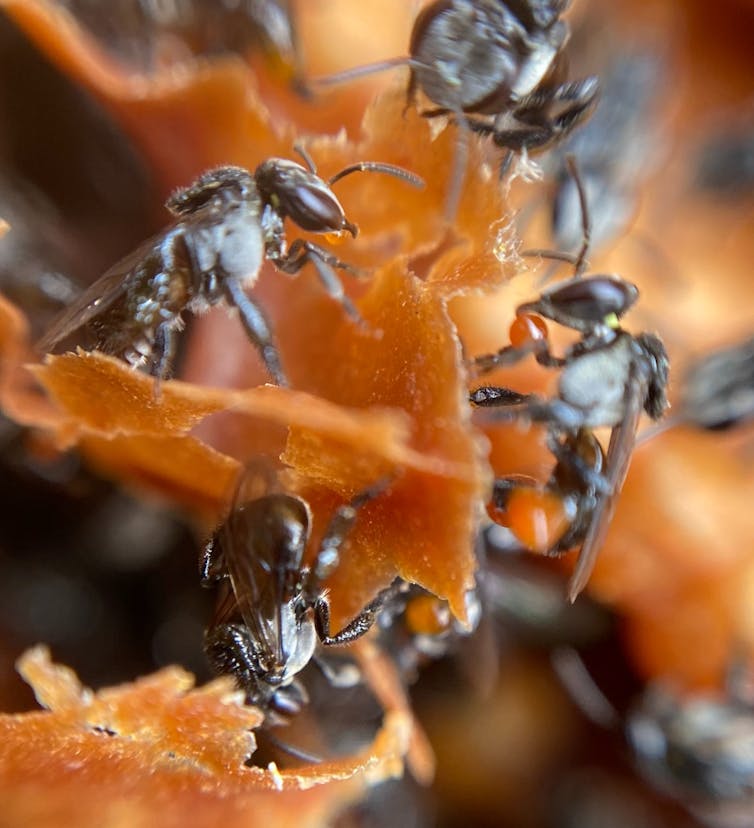
Anyone can now take close-ups of insects, plants and other species to contribute to citizen science databases. The clarity of these images means experts can often determine the species, adding to understandings of distribution and numbers to assist on-ground conservation.
Activities like these feature in the B&B Highway program, run by PlantingSeeds Projects. The program encourages school students in New South Wales and Victoria to participate in a citizen science project. It’s affiliated with the international iNaturalist biodiversity network and database and CSIRO’s Atlas of Living Australia.
Students are using smartphones and tablets in school playgrounds to capture extraordinary images of insects less than 1cm long, or tiny details of flower parts. There’s an online dashboard where students can see and share observations and knowledge. These images then contribute to our knowledge of species distributions and densities.
Focusing On Pollinators
The B&B Highway program has developed a biodiversity-based curriculum with the NSW Department of Education. The project includes plantings and constructed habitats at schools to form regenerative corridors. It has a target of over 60 hubs by mid-2022 to help counter the alarming decline in pollinators in Australia and around the world.
The B&B Highway program provides training for teachers and students. While students are often more at ease with smart devices and their camera functions than their teachers, separate instructions are given to school administrators to set up an iNaturalist account and upload observations. Having a school account ensures students’ identities are protected and all observations are listed as the schools’.
Children under the age of 13 cannot create an account or engage directly with many citizen science communities, including iNaturalist. This means an adult needs to upload observations.
An observation is regarded as research grade if at least two site users agree on the identification to the taxonomic species level. Observations on iNaturalist are shared with the Atlas of Living Australia.
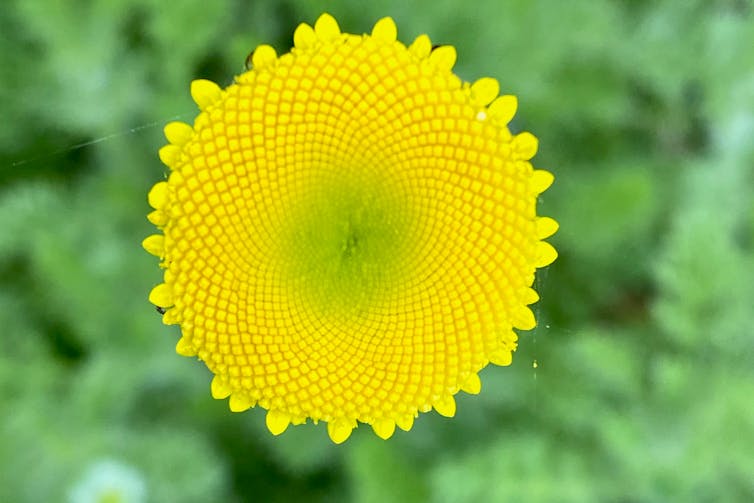
Taxonomists regularly report concern at the lack of data on the distributions and densities of insect pollinators. This month’s addition of 124 Australian species to the International Union for Conservation of Nature’s (IUCN) Red List of Threatened Species means urgent strategies – including citizen science – are needed to help regeneration.
Urban observations are important as about 30% of Australia’s threatened species occur in cities. Yet only about 5% of citizen science projects in Australia are urban-based. With three-quarters of Australia’s 23.4 million people now living in a capital city, the citizen science potential is enormous.
Some Tips From The Experts
The following tips drawn from the iNaturalist teacher’s guide will help you get started.
Take identifiable photos. Try to fill the frame with your subject. It may help to use your hand to hold a flower or plant still, but make sure the plant is not dangerous.
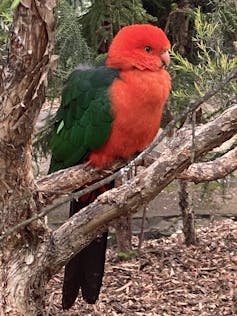
Take multiple photos. Many organisms, particularly plants and insects, cannot be identified to species level from a single photo. Take several photos from different angles. For plants, photos of flowers, fruit and leaves are all helpful for ID.
Focus on wild organisms. In general, the iNat community is more interested in wild organisms. Members respond more to pictures of weeds and bugs than cultivated roses and hamsters in cages.
Pay attention to metadata. This is the information associated with a photo that captures when and where (if location services are on) a photo was taken. Screen shots of photos will lose this data, which may result in incorrect data entry. Watch for locations and dates that don’t make sense. If your device’s time and date settings are wrong, the data will be wrong.
Don’t feel pressured to make research grade observations. Many organisms cannot be identified to the species level using only photographic evidence so observations of them may never attain research grade.
Be aware of copyright. Images should not be copied from books or the internet to illustrate what you observed. Post only your own photos.
Check out Seek. Seek is an educational tool built on iNaturalist. It does not actually post observations to iNaturalist but provides tools such as automated species identification (when possible) and nature journalling.
You can read other articles in this series here.![]()
Judy Friedlander, Adjunct Fellow, Institute for Sustainable Futures, University of Technology Sydney
This article is republished from The Conversation under a Creative Commons license. Read the original article.
Thar she blows! An expert’s guide to whale watching 101
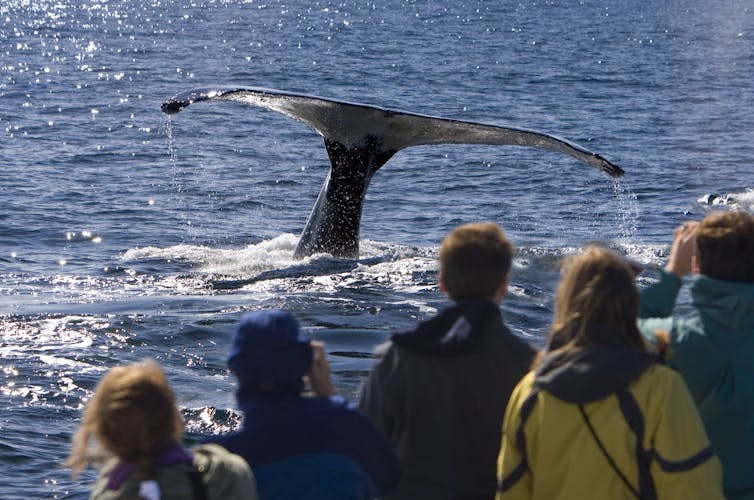
This article is part of a series explaining how readers can learn the skills to take part in activities that academics love doing as part of their work.
There’s no doubt about it, seeing a whale rise from the depths of the ocean is something special. Whether it’s the first time you’ve seen a whale or you’ve seen many like I have, it’s the thrill of hearing and sometimes smelling whale breath that gets you back for more! It’s time to dust off your binoculars because we’re about to dive into learning to whale watch.
When To See Whales
Whale watching is a great outdoors activity we can all enjoy from May to November each year in Australia. Thousands of humpback whales migrate from their feeding waters of Antarctica to the warm northern breeding waters off the Kimberley, Western Australia, and the Great Barrier Reef, Queensland.
These giants traverse the sea and play important ecological roles in our marine environment.
What To Look For
Ironically, trying to spot an animal the size of a bus is not always easy.
One of the first things to look for is that puffy tell-tail sign of a whale, its blow. Whales are mammals like you and I, which means they breathe air. Their nose is located on top of their head like an in-built snorkel.
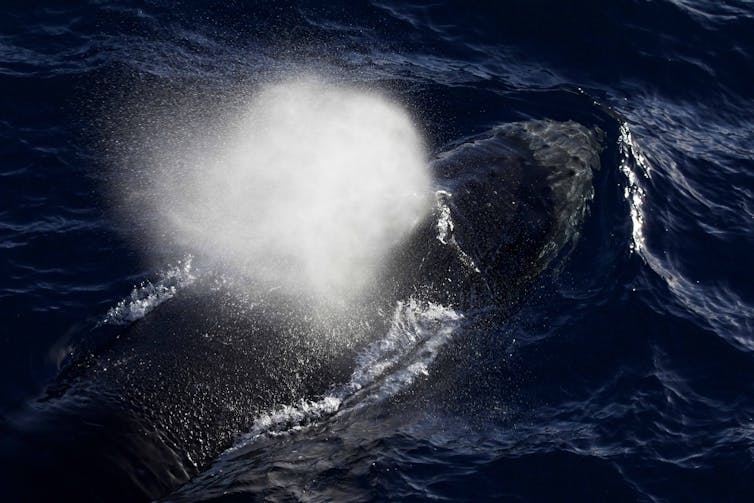
This allows whales to breathe on the go and without having to raise their heads out of the water. As they breathe out you can see a spout or puffy blow as a combination of water and air is blasted upwards as they exhale. This air comes directly from their lungs and is also known as whale snot.
Whale blow can stick around for longer when weather conditions are ideal such as times with good visibility and low wind. This is a great advantage for spotting a whale.
If you’re lucky, you may also be able to spot a whale breaching, which is when they jump out of the water. Humpback whales are most famous for this. We don’t exactly know why whales do this but it most likely serves as a form of communication with other whales.
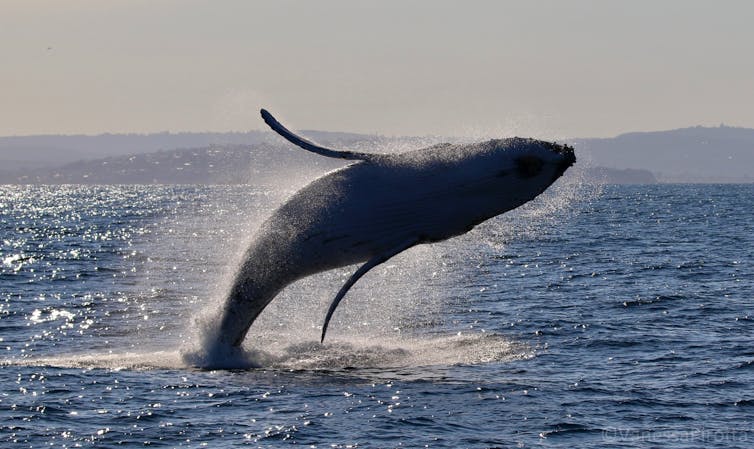
You may also be able to see other behaviours such as pec (arm) and tail slapping, resting at the surface and spy hopping – where a whale brings its mouth and eyes out of the water to look around.
After a dive, whales sometimes leave a whale footprint, which is a circular disruption at the surface caused by the whale’s tail. This is where the whale last surfaced. The whale will now likely be further ahead of this location.
Boat Or Land-Based Whale Watching, What’s Better?
It depends. Some of the best whale watching I’ve ever had has been from land. High land-based viewing platforms such as those in national parks enable you to see further and wider out to sea. This allows you to document a lot more whale action but from a distance.
But if you’re after the salt in your face and the thrill of being on the water, then whale watching with a responsible ecotourism company is your best option. Australia has rules and regulations in place to keep both whales and humans safe from each other. This means humans must keep their distance from whales when on the water.
In some cases, whales may choose to approach your vessel and swim around at close range. This is known as a whale mugging and there is nothing you can do but turn off the boat engines and enjoy the show.
Tools People Can Use To Whale Watch
Whale watching is an outdoors activity so prepare for any type of weather. I always suggest a weatherproof jacket to keep warm and protected from the wind and rain. I also recommend sunglasses, sun screen, a hat and comfy shoes.
If you’re a keen wildlife photographer like me, then pack your camera. Alternatively, a phone can be used to video or take photos.
Finally, don’t forget your binoculars. These can be great for seeing whales a little closer, but don’t worry if you don’t own a pair. I personally prefer spotting whales first with the naked eye.
Tips And Tricks For Success
It’s important to know whales don’t sit at the surface breathing all the time. Depending on what they are doing, they will likely spend time swimming underwater. This can range from a few minutes to up to 20 minutes for humpback whales. So be patient.
Scanning the horizon from left to right is a great tip when starting, especially from land. Start from one side and move along the horizon slowly. This will increase your chances of picking up anything between you and the horizon.
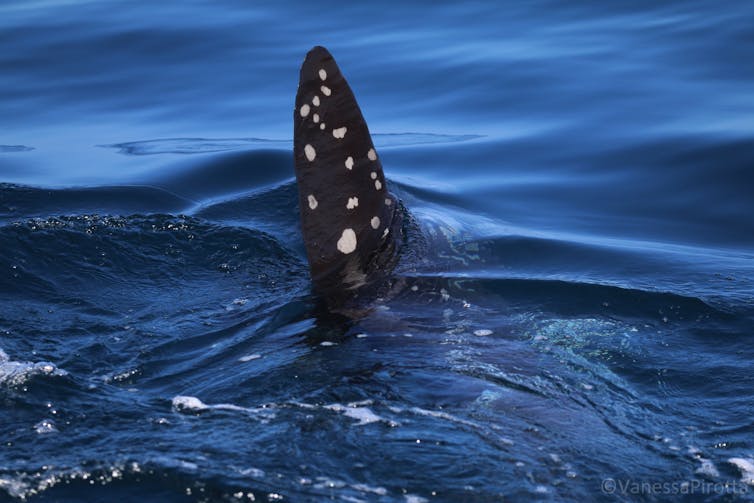
If on a boat, be aware that you’re likely moving, so try to use landmarks or other boats as potential navigational markers. Keep an eye out for anything at the surface that moves or pops up suddenly. I’ve seen some amazing things while waiting for whales, such as jumping sharks and sunfish.
Dive In
Whale watching is a great annual outdoor activity anyone can do. Whether you’re watching from land or sea, keep an eye out because you never know when you might spot your next or very first whale.
You can read other articles in this series here.![]()
Vanessa Pirotta, Postdoctoral Researcher and Wildlife Scientist, Macquarie University
This article is republished from The Conversation under a Creative Commons license. Read the original article.
Students Defy Lockdown With HSC Glory
Students who endured the toughest lockdown restrictions during NSW’s COVID-19 lockdown last year have shone in the HSC First in Course list. Of the 89 schools represented in the First in Course release announced today, 14 of the 33 government schools included are located in the Local Government Areas of concern that suffered the highest infection rates.
Students in these areas were unable to attend their schools for more than 16 weeks and were subject to strict rules around their movements outside their homes.
Deb Summerhayes, executive director of the Metropolitan South and West School Performance Directorate, said the success of these students was amazing news that should be celebrated.
“This is an amazing achievement from students who were significantly impacted by the lockdowns in the LGAs of concern,” she said.
“The outstanding results are a testament to the commitment, hard work and resilience of the students and the dedication and relentless focus of their teachers and schools in ensuring continuity of learning and wellbeing support throughout an incredibly challenging 2021.”
Among those honoured was Prairiewood High School’s Michelle Ung, who was one of three girls to share the top spot in Advanced English.
Michelle was supported in her studies with the Public Education Foundation Agnus Borsody scholarshipExternal link and recently received a Susan & Isaac Wakil FoundationExternal link scholarship to help her undertake tertiary study in 2022.
Prairiewood High School principal Belinda Giudice paid tribute to the 2021 HSC cohort.
“We are incredibly proud of Michelle and the entire 2021 HSC cohort. Students’ have displayed strong resilience and work ethic whist teachers and leaders have balanced high academic standards with genuine care for student wellbeing,” she said.
Michelle said while she was confident she had done well, she had not expected to top the State.
The child of Cambodian refugees, she said her parents considered it a great achievement and were extremely proud.
She admitted the lockdown had not made the HSC experience easy and said the study bubbles at school in Term 4 had been a great help.
“It was very difficult under lockdown. There were many challenges and finding the right study techniques was hard,” she said.
Michelle, who is planning to study a Bachelor of Commerce/Law at UNSW, said her teachers had been great motivators.
“They would give us a lot of pep talks especially during our zoom lessons to keep us going,” she said.
Other First in Course places from students from schools within the LGAs of concern went to:
- Roaa Amhed, Arabic Continuers, Beverly Hills Girls High
- Melissa Tieve, Chinese Continuers, Bonnyrigg High School
- Andjela Nikolic, Business Services Examination, Bossley Park High School
- Elena Stojcevski, Business Studies, East Hills Girls Technology High School
- Daania Alameddine, Family and Community Studies, Fairvale High School
- Moksh Bhatia, Investigating Science, Hurlstone Agricultural High School
- Ayeshah Baig, German Beginners, Mitchell High School
- Marcin Konczyk, Polish Continuers, Secondary College of Languages Ashfield Boys Campus
- Princess Marcos, Filipino Continuers, Secondary College of Languages Bankstown Girls Campus
- Christina Solyom, Hungarian Continuers, Secondary College of Languages Bankstown Girls Campus
- Teona Petreska, Macedonian Continuers, Secondary College of Languages Bankstown Girls Campus
- Ting Jun Liang, Chinese in Context, Secondary College of Languages Birrong Boys Campus
- Marta Abicic, Croatian Continuers, Secondary College of Languages Liverpool Boys Campus
- Lisa David, Khmer Continuers, Secondary College of Languages Liverpool Girls Campus
- Anika Popovic, Serbian Continuers, Secondary College of Languages Liverpool Girls Campus
- Lovisha Gangwani and Harkirat Singh, Punjabi Continuers, Secondary College of Languages The Hills Sports Campus.
In other results Hornsby Girls High School had three First in Course spots with two secured by Kate Chipman, who topped the State in English Extension 1 and Modern History, and Jessica Lui earning the Legal Studies award.
First in Course announcements include Alysha Airey, Northern Beaches Secondary College Manly Campus, First in Course; Japanese Extension, Andre Stefan Mitchell, Northern Beaches Secondary College Manly Campus, First in Course; Physics.
North Sydney Boys High and Sydney Boys High also had three first places while Merewether High School in Newcastle had two top places.
The NSW School of Languages had six First in Course winners while the Secondary College of Languages secured 17 winners across its various campuses.
Hornsby Girls High principal Dr Justin Briggs said the school was “incredibly proud of all of our students for the amazing effort they have put into their studies”.
“Kate, our school captain, is an outstanding and highly disciplined young woman with the world at her feet. To achieve a first place in the HSC is an incredible achievement.
“Well done also to Jessica, who has also performed at a very high level throughout her studies. Some very good news for our school community.”
Kate, who will go to the Australian National University to complete a double degree in International Studies and Politics, Philosophy and Economics, said she was “very, very, very surprised” by the result.
“I’m totally shocked but very happy,” she said.
While Hornsby Girls High was not in an LGA of concern, Kate was impacted as her home was within the hard lockdown zone and she missed over a term of face-to-face learning.
The teenager said she had not done anything special in those two subjects, but credited her success down to great teachers and enjoying the subjects.
“I had two really amazing teachers who were really supportive during lockdown and went above and beyond in being available on zoom and emails and [English and Modern History] were my two favourite subjects so I just genuinely enjoyed them.”
First in Course winners from public schools were spread across the State with Jadzia Wolff, from Kingscliff High School near the Queensland border, one of four students to top Drama.
Eight students shared the Advanced Mathematics First in Course honour including Karina Kuang, from Willoughby Girls High, who was one of two girls included in the list, along with Fort Street High School student Gordon Huang and Sarfaraz Ahmed from Sydney Boys High School.
Sydney Boys High School’s Hanyang Zheng secured Mathematics Extension 1 and Luchith Thenuwara, from Baulkham Hills High School was first in Mathematics Extension 2.
NSW Secondary College of Languages principal Sana Zreika said 2021 has been particularly challenging for the students.
“This was a uniquely impacted HSC cohort, who had engaged with online learning twice in their preliminary year, only to be faced with a return to remote learning in the lead-up to their final school assessment and the HSC itself,”. she said.
More than 3,000 students at SCL transitioned to online learning for an extended period in Term 3 and Term 4 in 2021, and 872 HSC candidates successfully completed their Trial examinations online.
”Our HSC students have demonstrated extraordinary strength, adaptability and resilience,” Ms Zreika said.
About 76,000 HSC students who sat at least one exam in 2021 received their results by SMS, email and online from January 20th.
Minister for Education Sarah Mitchell said 149 certificates will be presented to 139 students, with nine topping more than one course.
“The future looks so bright for the inspiring young people who we will celebrate today, and for all HSC students who showed great perseverance and resilience in their final years of school,” Ms Mitchell said
“Combined with their abilities and skills, First in Course recipients have shown what can be achieved when there is a real commitment to learning – a quality which will hold them in good stead for the future.
“I am sure the Class of 2021 are already looking to the future and are ready to take on work, training and further studies.
“As always, my thanks goes to the experienced and dedicated NSW teachers who, along with family and friends, have supported and encouraged these young people to achieve at the top of their class.”
All Round Achievers, Top Achievers and Distinguished Achievers are published on the NESA website

Top of the State: NSW Education Minister Sarah Mitchell with some of the students from the First in Course ceremony held on January 19, 2022. NSW Dept. of Education photo
"Islas Afortunadas" - Fire Island
published January 17 2022 by Surfing Visions (Tim Bonython)
I am an Aussie who thought Nazare's big waves was the only Atlantic spot that could excite me due to the monstrous surf it manufacturers. But when i went to this island group i realised there is a lot more to be discovered in the big wave domain. "Islas Afortunadas" - Fire Island is one of a series of volcanic islands that has some serious slabbing waves that really stand up as world class only if you have the balls to surf them. Mostly reef breaks Fire Island's slabs are not for the up & comers. Enjoy..
Good Vibrations
Published January 13, 2022 by the Australian Antarctic Division
They’re the loudest sounds you’ll never hear! Antarctic blue and fin #whales have the most powerful calls on earth, but their very low frequency makes them inaudible to humans. New science provides the first estimates of the power or ‘source level’ of these calls in the southern hemisphere.
We asked 6 scientists what inspired them to pursue a career in science. Here’s what they said

As you read this, scientists the world over are rushing to find out more about the COVID-19 Omicron variant.
Indeed, if there’s anything the pandemic has made clear, it’s that the importance of scientific research can’t be understated in today’s world.
As we embark on a new year, hopefully with more progress on the COVID-19 front, we asked six authors of The Conversation to reflect on what first sparked their interest in science.
Cathy Foley
Australia’s Chief Scientist
It was my brothers’ high-school textbooks, I kid you not! I loved poring over the Harry Messel textbooks as a 10- or 11-year-old. They were beautifully illustrated, with nature drawings and detailed experiments set out in a visual format. And I’ll never forget the photo of a dissected rat.
Then when I got to years 11 and 12 at school, the six-volume Harvard Project Physics sold me completely. It has a strong historical narrative, which is unusual in a science textbook and really worked for me.
I still have both sets of textbooks on the bookshelf in my home office. But even though I wanted to be a scientist from a young age, I didn’t know it was open to me so I didn’t dare express it. That final step only came in third-year experimental physics, when I discovered new properties of liquid crystals no one had found before. There was no going back.

Bronwyn Carlson
Professor of Indigenous Studies and Director of The Centre for Global Indigenous Futures, Macquarie University
In 2008 I made my first Facebook post. I was in the middle of a PhD, conducting interviews with Aboriginal people about their identity and involvement in the Aboriginal community. Several spoke about how they expressed their Aboriginality on Facebook, by sharing images and forming connections.
This piqued my interest; Facebook was still new, having opened to the public just two years prior. I hadn’t considered issues of identity or community in these still-novel digital settings. Back then, people tended to separate life into the offline “real” world and the online “virtual” world – which by implication was not “real”.
I became interested in whether being Aboriginal online attracted the same sort of scrutiny as Aboriginal people regularly experienced offline. It turned out those with Facebook profiles experienced high levels of surveillance around their identity. I guess regardless of being online or offline, being Indigenous can attract violent behaviour from settlers.
Sara Webb
Postdoctoral Research Fellow at the Centre for Astrophysics and Supercomputing, Swinburne University of Technology
I have always been curious about the world and universe we live in. As a child I remember catching my poor mum off-guard, at 7.30am mind you, with the questions: “why do we exist?” and “What was there before the universe?”
It was a lot for 8-year-old me to be contemplating. But after watching all the Discovery Channel, National Geographic and History Channel documentaries I could possibly get my hands on, my mind was constantly in awe of such questions.
I genuinely can’t remember a time I haven’t been fascinated with the wonders of life. Learning physics in high school was the pinnacle of me beginning to understand why the universe is the way it is. This passion led me to where I am today – an astrophysicist and data scientist trying to make sense of the universe (and other things) via observations and data analysis.
Russell D.C. Bicknell
Postdoctoral Researcher in Palaeobiology, University of New England
When I was about five years old, my father showed me the fossil of an extinct animal called a trilobite: ancient organisms that lived within even older oceans. They evolved long before the dinosaurs, and had gone extinct just before the first of the giant vertebrates (animals that have a backbone).
In doing so, my father had introduced me to the record of organisms that were no longer alive – and furthermore, that people who studied these animals are called palaeontologists. From this point on, I was motivated to understand more about these extinct groups.
This led me down the road of studying evolution, ultimately resulting in me becoming an evolutionary palaeontologist. Now, rather true to my childhood origins, I regularly study trilobites and am interested in documenting many different aspects of arthropod evolution.
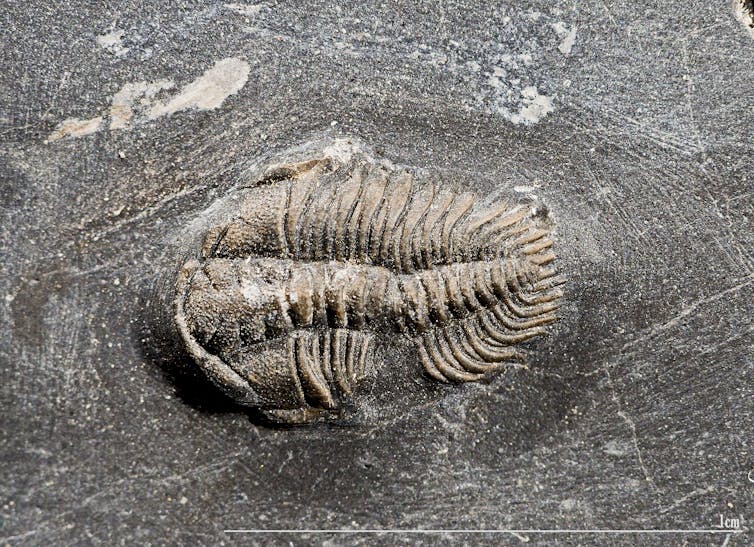
Jenny Graves
Distinguished Professor of Genetics and Vice-Chancellor’s Fellow, La Trobe University
I was a scientist for 20 years before I defined myself as “a scientist”. I was many things: harried lecturer, canny grant-seeker, cynical academic, chameleon mother and wife of shire president.
The event that stopped everything, and focused my attention on science, was a near-fatal brain bleed when I was 50 – followed by life-saving neurosurgery and an 18-month recuperation. During my rehabilitation, a kind visitor remarked comfortingly, “Now you have the space to decide what you really want to do with your life!”
I was overwhelmed by the realisation that what I really wanted to do was at the core of what I had been doing for 20 years: science! Just more, and better, with commitment and immersion.
Yvonne Wong
Associate Professor of Physics, University of New South Wales
The American physicist Sidney Coleman once said:
The career of a young theoretical physicist consists of treating the harmonic oscillator in ever-increasing levels of abstraction.
My journey into theoretical physics indeed began with a harmonic oscillator: the pendulum. Specifically, the formula relating the period of a pendulum’s swing (T) to its length (l) and gravity (g), which I found in a textbook at the age of about 15:
T = 2π√(l/g)
I was always good at maths. I also liked the idea that a set of universal principles governs all natural phenomena. But to see the latter expressed in terms of the former so cleanly was an epiphany.
I spent many hours pondering the 2π and the square root. More obsessions followed, from plucked violin strings to nuclear fission.
But what sealed it in the end was Douglas Giancoli’s textbook Physics: Principles with Applications, which I came across at about age 16. The last two chapters were on “Elementary Particles” and “Astrophysics and Cosmology”. The rest is history.![]()
Michael Hopkin, Section Editor (Science + Tech) and Deputy Chief of Staff, The Conversation; Michael Lucy, Deputy Science + Technology Editor, The Conversation, and Noor Gillani, Deputy Editor, Science and Technology, The Conversation
This article is republished from The Conversation under a Creative Commons license. Read the original article.
What is the value of a wave? How changes to our coastline could wipe out surfing’s benefits
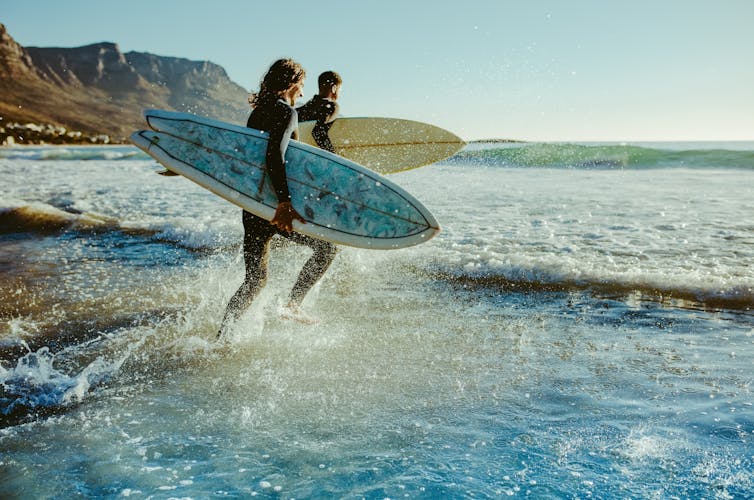
Before COVID-19, global surf tourism spending was estimated at up to A$91 billion per year. And since the start of the pandemic, demand for surfing has boomed as people increasingly turn to outdoor activities.
But surfing’s benefits to human well-being aren’t often studied in economics terms. This is a major knowledge gap we are now trying to fill.
Such research is important. Changes to the coastline – such as from sea walls and groynes – can dramatically reduce the quality of surfing waves. But the consequences of coastal developments on surfing are often poorly understood and rarely quantified before projects start.
It’s crucial we understand the real value of surfing, before we lose the myriad of benefits they bring – not only to Australia’s 1.2 million active surfers, but to hundreds of coastal towns where surfing underpins the local economy and lifestyle.
Surfing Economics
There are many studies on the economic value of Australian beach pastimes such as fishing, swimming and diving. But not for surfing.
Internationally, we know surfing is a major direct contributor to the economy of wave-rich places. However, until recently, the value of surfing to human well-being has been largely unaccounted for.

This is despite recent evidence pointing to surfing’s positive social and health outcomes, including among war veterans and children with chronic illnesses.
Surfing Economics is an emerging field of research that documents and quantifies the total economic value of surfing. This can include, for example, increased house prices near good quality breaks, or social welfare benefits people derive from visiting surf beaches.
Building on the few previous surfing economics studies in Australia, our research aims to calculate the total economic value of surfing.
Our forthcoming study on the Noosa World Surf reserve, so far, demonstrates that the local economic contribution of surfing is in the order of hundreds of millions of dollars. This in terms of surfers’ welfare, as well as direct spending on surf gear and travel.
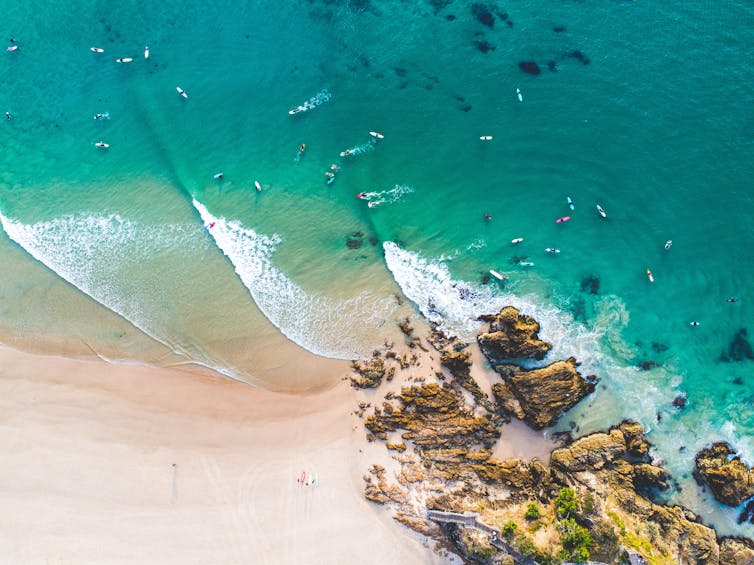
Overseas, the economic contribution is a little clearer. A 2017 study used satellite imagery to demonstrate that economic activity grows faster near good-quality surf breaks, particularly in developing countries such as Indonesia and Brazil.
In the UK alone, the overall annual impact of surfing on the national economy is calculated at up to £5 billion (over A$9 billion).
How Coastal Projects Make Or Break Waves
Swell waves are typically formed by winds blowing many kilometres offshore. It’s perhaps easy to think that this natural, distant origin means there’s nothing we can do about the formation of waves.
But the truth is surfing waves are the product of complex interactions between waves, tides, currents, wind and the shape of the seabed. Shallow coral reefs, headlands and sand banks are responsible for making highly sought-after waves.
By directly or indirectly impacting any of these factors, wave quality has been changed for better – or for worse.
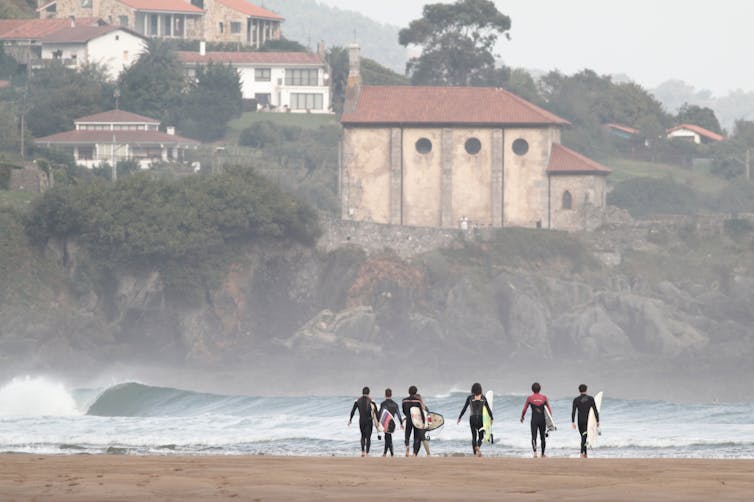
The world-renowned Mundaka wave, in northern Spain, temporally disappeared because dredging of the nearby rivermouth changed ocean dynamics. This resulted in a decline in economic activity and the cancellation of the Billabong Pro World Championship in 2005 and 2006.
In the Portuguese island of Madeira, the construction of a rock-wall severely disrupted the formation of the Jardim do Mar wave in 2005, and a fall in local economic growth rates followed. In Peru, the extension of a fishing pier negatively impacted Cabo Blanco, one of Peru’s best barrelling waves, by shortening its length.
Closer to home, the Ocean Reef Marina, currently under construction in Perth’s north, will significantly impact three local surf breaks. About 1.5 kilometres of mostly unmodified beaches are being redeveloped into a brand new marina.
Studies have shown that well planned coastal management interventions can dramatically increase benefits to surfers and non-surfers alike.
One of the most iconic examples is the “Superbank” at Snapper Rocks in the Gold Coast. There, a world class wave forms thanks to river sediment being relocated through the Tweed Sand Bypassing Project.

The project is costly to operate and has impacted nearby beaches. But its expenses are outweighed by improvements to surf quality and beach amenity, which underpin the local economy and the nature-based, active lifestyle the Gold Coast is famous for.
Giving Waves Legal Protection
Building on efforts nearly 40 years ago to protect Victoria’s iconic Bells Beach wave, Peru and New Zealand have granted statutory protection to their surf breaks under environmental protection laws.
In practice, this means threats to surf breaks by coastal activities, such as sewage discharges or building offshore structures, must be avoided or mitigated.
Similar recognition and valuation of surfing resources is necessary and would be highly beneficial for Australia.
A rigorous, science-based evaluation of surfing’s total economic value could serve to inform cost-benefit analysis of coastal management programs. These may include fighting erosion to protect the coastline, or building artificial surf reefs.
In these uncertain times of COVID-19, many of us cannot yet travel far away. But with 85% of Australians living by the coast, many of us can still catch a wave at our doorstep – and that is priceless.![]()
Ana Manero, Research Fellow, Australian National University; Alaya Spencer-Cotton, Research assistant, The University of Western Australia; Javier Leon, Senior lecturer, University of the Sunshine Coast, and Neil Lazarow, Senior Research Consultant, CSIRO
This article is republished from The Conversation under a Creative Commons license. Read the original article.
Hitting the beach this summer? Here are some of our top animal picks to look out for
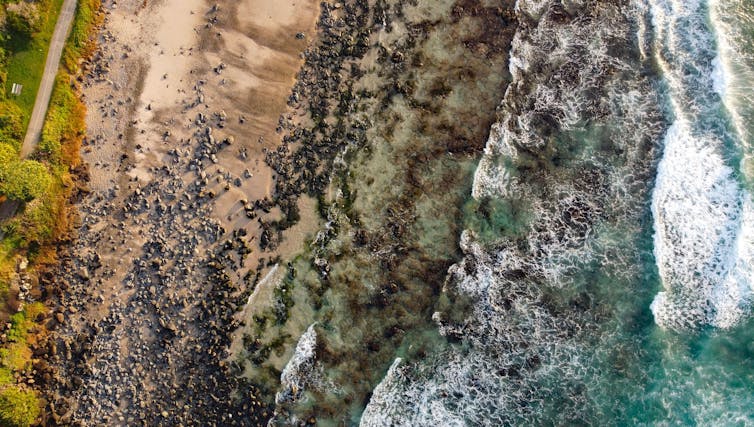
Australia has one of the longest coastlines in the world. And it’s packed with life of all shapes and sizes – from lively dolphins leaping offshore, to tiny crabs scurrying into their holes.
Here is just some of the diverse coastal life you might expect to see this summer, if you spend some time at the water’s edge.
Dolphins And Turtles
We’re fortunate to have 15 species of dolphin (and one porpoise!) living in Australian waters. The large bottlenose dolphins (Tursiops spp.) are relatively common and can be spotted all the way around our coast.
You might see them playing in the waves, jumping out of the water, or even surfing among humans.

Turtles are less obvious, but can be spotted as they bob their heads out of the water to breathe. Australia’s coasts are home to six of the world’s seven sea turtles (all listed as either vulnerable or endangered).
The more common green turtle (Chelonia mydas) can be found everywhere except in the coldest southern waters. In summer, the turtles travel north to the tropical waters of QLD, NT and WA to reproduce – laying their eggs in the warm sand.
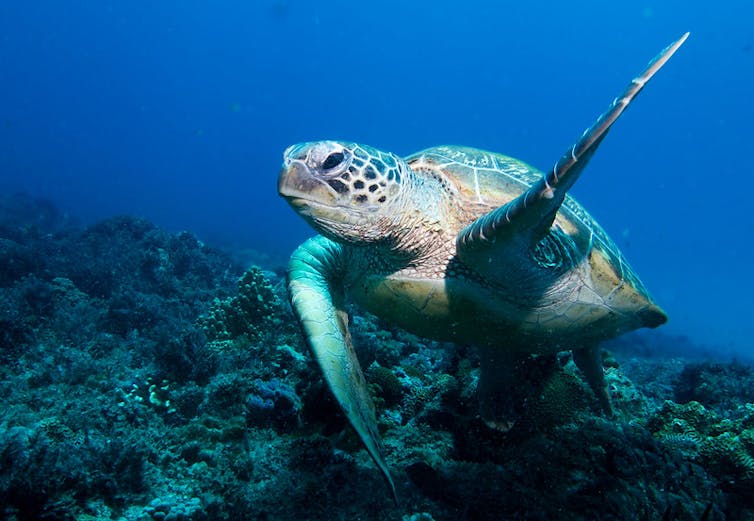
Another reptile you might encounter in the eastern coastal areas is the water dragon (Intellagama lesueurii). You’ll find them hovering around beach-side picnic areas, looking for tasty treats such as flies, ants, bugs, native fruits and flowers. As with all native animals, it’s important not to feed them.
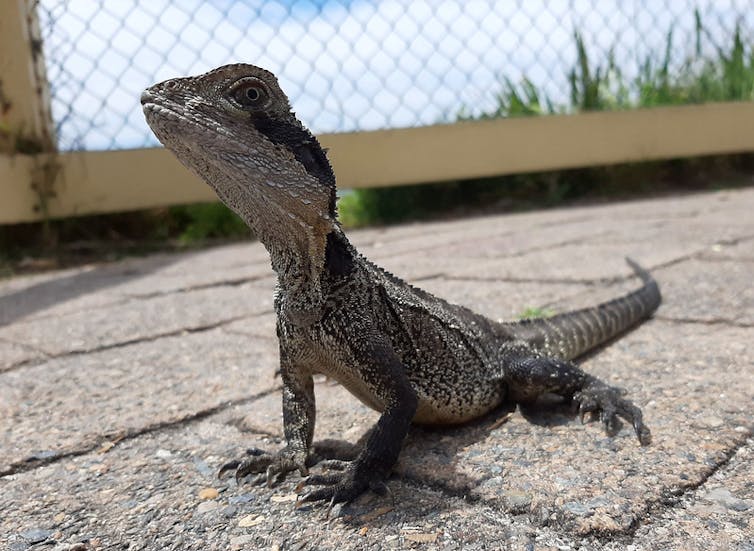
Heads In The Clouds
If you cast your eyes up, you’ll see many coastal bird species soaring above.
Two of our favourites are the protected white-bellied sea eagle (Haliaeetus leucogaster) and the sooty oystercatcher (Haematopus fuliginosus). Both rely on marine animals for food, and nest in coastal areas right around Australia.
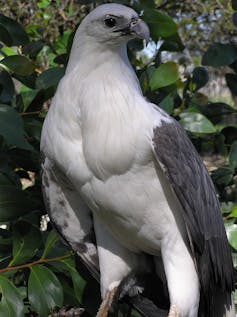
The sea eagle mostly feeds on fish, turtles and sea snakes. It was recently listed as either threatened, endangered, or vulnerable in four states, largely as a result of coastal developments.
Meanwhile the sooty oystercatcher is, well, all black. It has distinctive bright-orange eyes and a long beak. Sooties can be found strutting among the seaweed and sea squirts on rocky shores.
As the name suggests, these birds enjoy eating molluscs and other invertebrates.
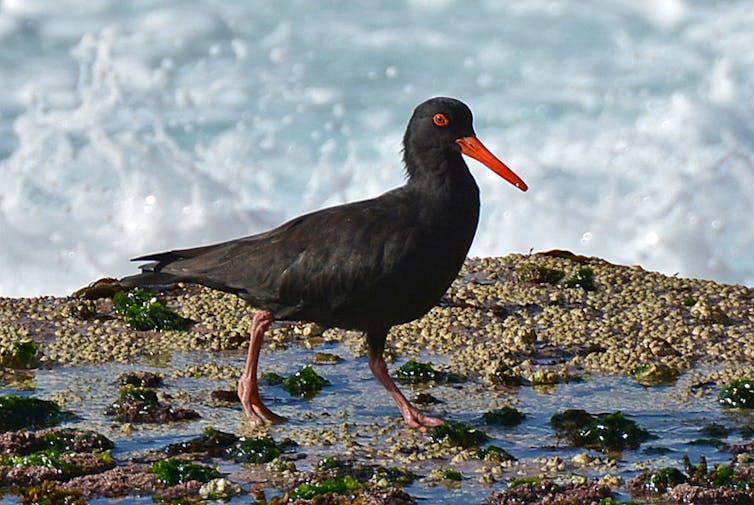
Crawling Coastal Critters
Many a critter will run for cover as sooties (and humans) approach, including the swift-footed crab (Leptograpsus variegatus). This crab’s mostly purple body is sprinkled with flecks of olive, and sometimes orange.
The species lives among the rocky shores around southern Australia, from WA to QLD, and even Tasmania.
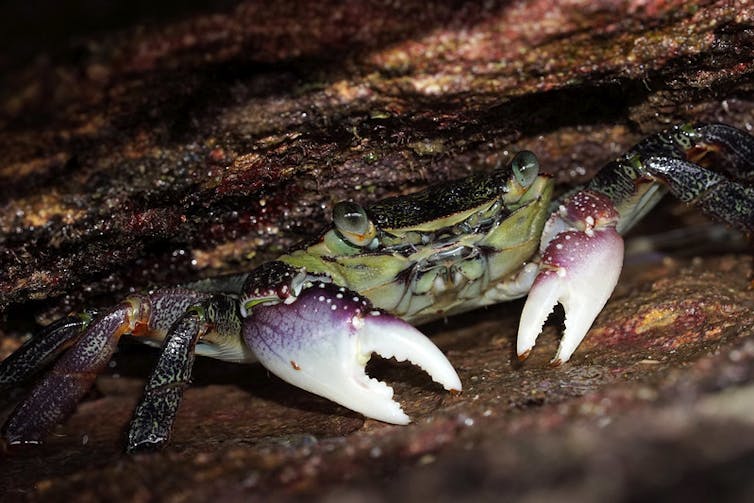
You’re much less likely to see another common crab, the sand bubbler. But you might see the results of its industrious activity on flat, wet and sandy areas.
Sand bubblers live in underground burrows, emerging during the low tide to filter sand through their mouthparts looking for food.
In this process, they end up making little pea-sized sand balls. When the tide starts to rise again, they return to their burrows and wait in a bubble of air, which they use to breathe, until the tide recedes.
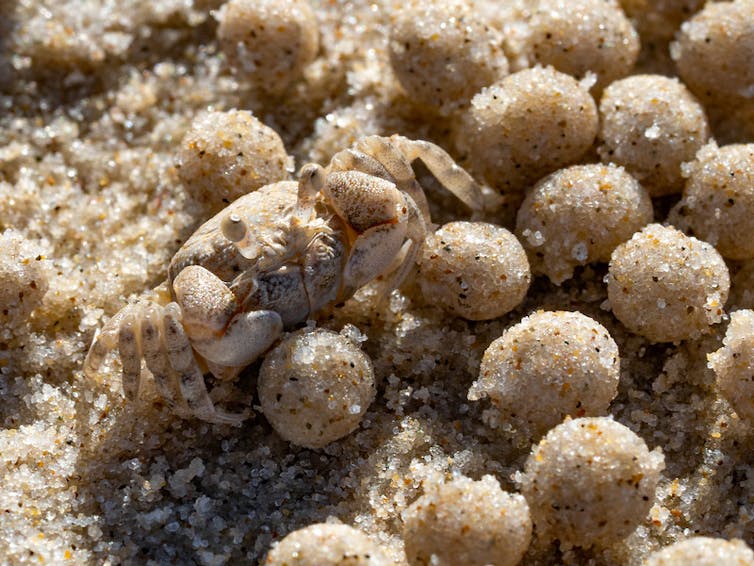
Magnificent Molluscs
Molluscs are another diverse group of marine animals on our shores, and one of the best known molluscs is the octopus. Along with squid and cuttlefish, this trio of cephalopods is considered to be among the most intelligent invertebrates on Earth.

In the case of the octopus, this may be due to having nine “brains”, including a donut-shaped brain in the head and a mini brain in each tentacle, which allow the tentacles to operate somewhat independently.
Australia has several octopus species, from the gloomy octopus (Octopus tetricus) on the east coast, to the Maori octopus (O. maorum) in the south. The potentially deadly blue-ringed octopus (Hapalochlaena sp.) is found right around Australia.
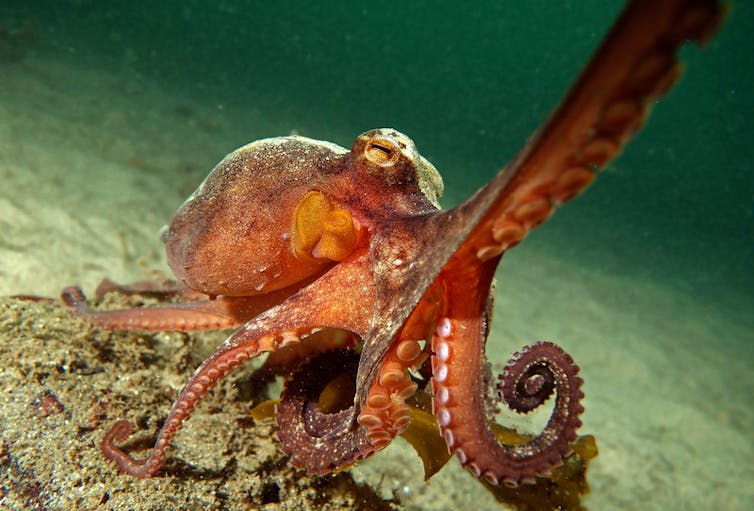
Octopus forage at night, in shallow waters and to depths exceeding 500 metres. During the day they’ll return to their lair, which may be a hole, a ledge or a crack in a rock. They’ll often decorate their home with the discarded shells of their prey.
(Sometimes) Stingers
You’ve probably seen jellyfish at the beach before, too. Species such as the moon jelly (Aurelia aurita) are harmless. But others can deliver a painful sting; bluebottles (Physalia utriculus) might come to mind here, also called the Pacific man-of-war.
Bluebottles and their relatives, blue buttons (P. porpita) and by-the-wind sailors (V. velella) don’t swim. They float at the ocean’s surface and go where the winds blow, which is how they sometimes get washed onto the beach.
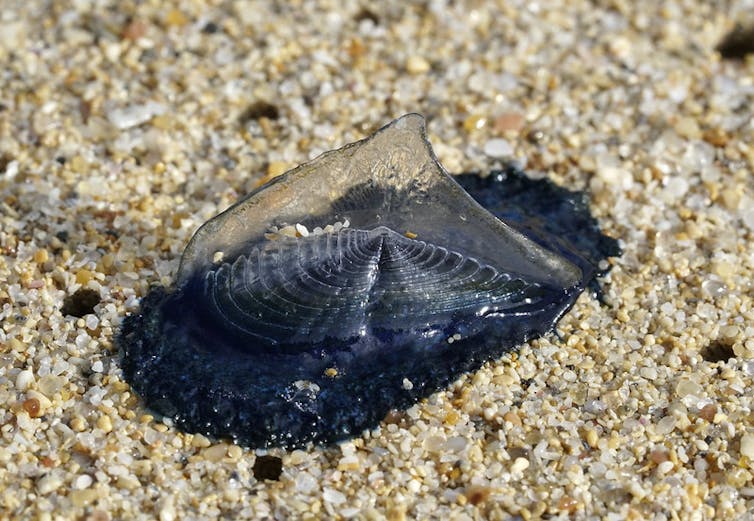
Rather than being one animal, they are made of many polyps or “zooids” living together in a floating colony. Each polyp has a specialised role such as flotation, stinging, catching prey, digestion or reproduction.
Anemones are also related to jellyfish, and come in many shapes and colours – from the bright red waratah anemone (Actinia tenebrosa) found in all states, to the multi-coloured shellgrit anemone (Oulactis muscosa) found from SA to QLD. They use their tentacles to sting and catch prey, but have no impact on humans.
Many anemones live among the rocks and rock pools in the intertidal area, although some species, such as the swimming anemone (Phlyctenactis tuberculosa), live as deep as 40m underwater.

Fancy Fishes
Of course there are many fish to be seen along our shores – more than we could possibly mention here! In the shallows, we particularly like to find big-eyed gobies.
Some of the most colourful fish in this zone are young damselfish. These are most diverse in tropical Australia, but still found in temperate waters. Their juvenile forms can be striped and spotted, with colours ranging from bright yellow to iridescent blue.
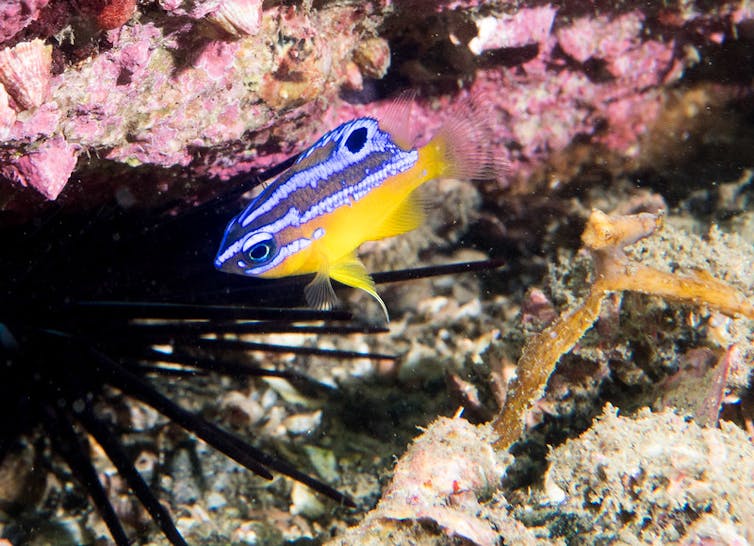
It’s best to photograph any fish you want to identify. Resources such as Reef Life Survey and Fishes of Australia can help with this.
If you upload your photos to the iNaturalist website, other users can help you ID them too. Uploading is also a big help to scientists, who then have a record of each sighting.
Finally, the diversity of marine life on our coast isn’t something we can afford to take for granted. So if you hit the beach this summer, make sure you:![]()
- do not bring any single-use plastics
- never leave anything behind (and preferably pick up any litter you see)
- and keep pets and cars away from sensitive habitats, such as dunes and bird nesting areas.
John Turnbull, Postdoctoral Research Associate, UNSW and Emma Johnston, Professor and Dean of Science, UNSW
This article is republished from The Conversation under a Creative Commons license. Read the original article.
Leaf at first sight: how leaf-curling spiders pair up and build a family home
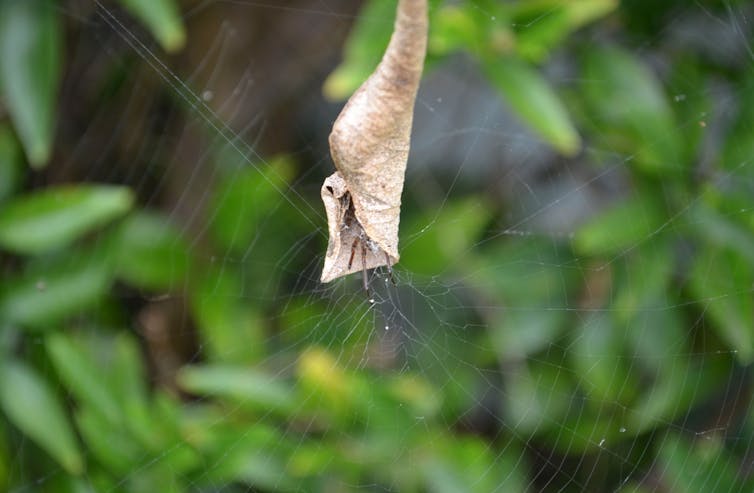
Have you recently spotted a spider peeking out from a brown, curled-up leaf in your garden?
Chances are you’re sharing your yard with the leaf-curling spider, Phonognatha graeffei (pronounced fon-og-natha greef-e-i), a fascinating member of the orb-weaving spider family Araneidae (pronounced aran-ee-i-dee).
This spider – found in each state and territory in Australia – builds its orb web in plants and places in it a special custom-built hiding spot: a curled up leaf.
Similar to other orb-weaving spiders, the leaf-curling spider lives for only one year and is most commonly seen in late summer.
They are found in woodlands as well as urban gardens and greenery and have particularly interesting family arrangements.
Why And How Do They Curl The Leaves?
To make their leafy retreats, these spiders use silk to lift a leaf up from the ground and into their orb web.
Using their legs, they then carefully curl it up and secure it with silk in a funnel or cone shape. They weave this curled leaf into the web using more silk.
If they can’t find a suitable leaf, they might use other objects such as snail shells and pieces of paper.
Young spiders, which aren’t as strong as adults, start by curling up small, fresh green leaves for their retreats and move on to bigger dry leaves as they get older.
The curled leaves – or bits of paper – protect the spider from hungry predators, such as birds. They also shield the spider from parasitic wasps, which lay their eggs on or in the bodies of other insects and spiders, eventually killing their hosts.
The spider can sit safely in their retreat, while keeping their front legs extended and in contact with their orb web. That way, the spider can sense any vibrations caused by an insect trapped in its web – and nip out to grab the food.
Like most other orb-weaving spiders, leaf-curling spiders are not fussy and will eat any insect that happens to get tangled in their web, such as flies, bees, moths and butterflies. They can even handle prey quite a bit bigger than them.
The spiders will spend most of their time in their retreat, only venturing out to get food in the day, or to repair and rebuild their webs (usually at night).

Venomous? Yes. Dangerous? No.
Nearly all spiders you come across are venomous – in other words, they have venom.
But being venomous isn’t the same as being dangerous to humans, and like most spiders, leaf-curling spiders aren’t dangerous to us.
The leaf-curling spider has small fangs that point together, a bit like pincers. Bites are rare. If you hassle one, the spider could try to bite, which may cause localised pain and swelling at the site – but the symptoms are generally mild.
If you spot one, just “leaf” it alone and it will do the same to you.
And remember: having leaf-curling spiders in your back yard is something to be proud of! These fascinating little creatures are great for keeping down pest insects and are a gardener’s friend.
Are There Eggs Or Baby Spiders Inside The Curled Leaves?
These spiders have interesting family arrangements.
Unusually for spiders, males and female leaf-curling spiders form pairs and share a leaf retreat.
The male moves in with the female when she is young and once she is mature he will mate with her. According to one study
Females may cannibalise cohabiting males, which occurs independently of whether the female has been deprived of food.
After mating, the female makes another curled leaf retreat in vegetation away from her web. This one is a “nursery” retreat, in which she will lay her eggs.
A Fascinating And Beautiful World
Spiders aren’t top of most people’s favourite animal list, I get that.
But, if you are able to spend a bit of time observing their lives and getting to know them and their stories, it can open up a fascinating and often beautiful world.
Spiders and other invertebrates such as beetles, flies, snails and millipedes are really important for the workings of our natural world, and so for us.
And when you get to know them, they are also pretty cool.![]()
Jess Marsh, Research fellow at the Harry Butler Institute, Murdoch University
This article is republished from The Conversation under a Creative Commons license. Read the original article.
The epic, 550-million-year story of Uluṟu, and the spectacular forces that led to its formation
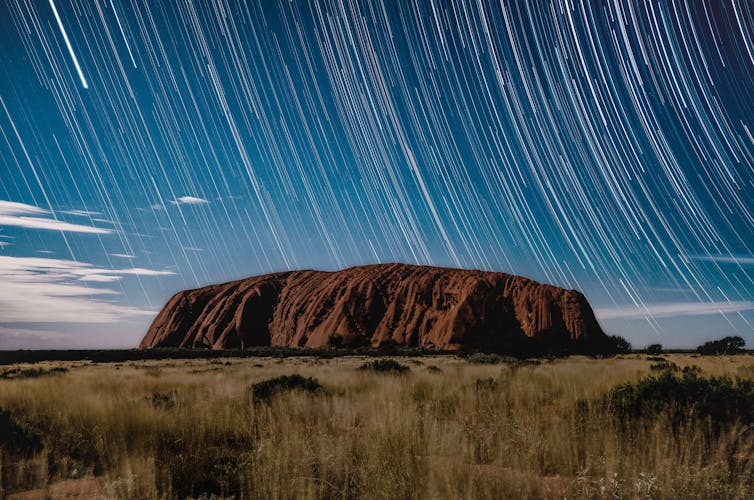
Part of the magic of Uluru is the way it tricks your senses. Deep orange by day, at sunrise and sunset it appears to change colour, becoming a more vibrant shade of red, and then almost purple.
Its size also seems to change depending on your perspective. Approaching Uluru from afar you are struck by how small it appears. But as you get closer, you realise it is truly a huge mountain, a behemoth in the middle of the comparatively flat Australian desert.
Australian geologists are now revealing yet another dimension to Uluru’s magic: the spectacular forces that led to its formation.
Uluru is a time capsule. Within its sand grains there is an epic 550-million-year saga of continents colliding, mountains rising and falling, and the remarkable strength of our most iconic mountain.
Uluru Is Sacred
To the Anangu, Uluru is sacred. The Anangu are the owners of the land on which Uluru sits and they have long understood its magic.
Their Dreaming stories tell of the dramatic creation of Uluru and Kata Tjuta on the previously featureless Earth by ancestral creator beings known as the Tjukuritja or Waparitja.
If you get the opportunity to tour Uluru with a Traditional Owner you will hear stories about the significance of some of the dimples, caves and undulations, many of which have a unique and important place in Anangu culture.
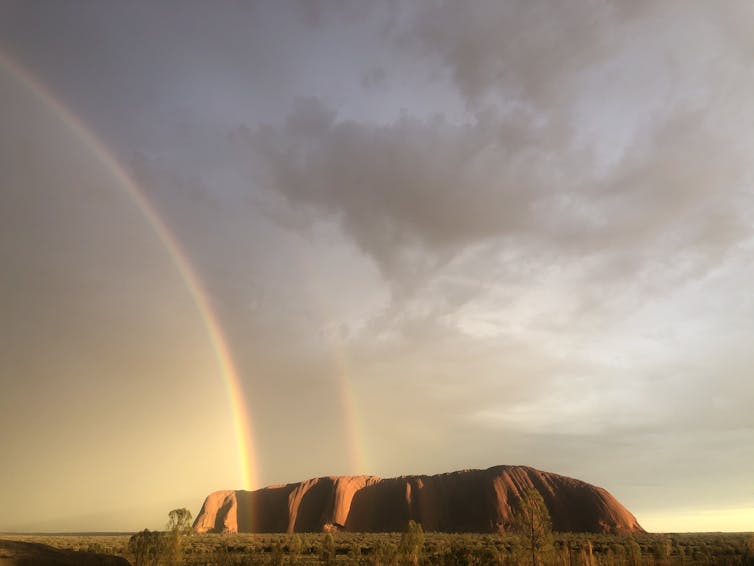
Compared to the Traditional Owners, whose knowledge dates back several tens of thousands of years, scientists have only realised the significance of Uluru over the last 30 years or so.
Uluru’s geological history has been revealed by assembling different types of data, like pieces of a giant jigsaw puzzle. That puzzle is taking shape and the scene it reveals is perhaps even more spectacular than the rock itself.
To tell Uluru’s story from the beginning we need to travel back in time 550 million years.
India Smashed Into The Western Australian Coast
Earth’s tectonic plates are constantly in motion, continents collide with each other and then rift apart. Around 550 million years ago, continents collided as part of the assembly of the supercontinent Gondwana, one of several times in Earth’s history where most of the continents were stuck together in one continuous piece of land.
Back then, a map of our globe would have looked very different. At this time, Antarctica was nestled against the Great Australian Bight. If you were around then you could have walked from Australia directly into Antarctica without getting your shoes wet. India was situated to the west of Western Australia when it was pulled toward our continent and smashed into the coastline.
India and Australia’s collision caused massive stresses to reverberate throughout the Australian crust, like waves of energy crashing through the continent. When those waves got to Central Australia, something pretty remarkable happened that geologists can understand by mapping the rocks beneath the surface.
Those maps reveal a complex network of ancient, interwoven fractures and faults, similar to the famous San Andreas fault network. Unlike a fracture in your arm bone, these faults never healed, so they remained broken, forming weak zones susceptible to breaking and moving again.
So, when the waves of energy from WA reached Central Australia, the network of fractures moved, pushing rock packages on top of each other. As the rocks moved past each other, they also moved upwards and were thrust into the air.
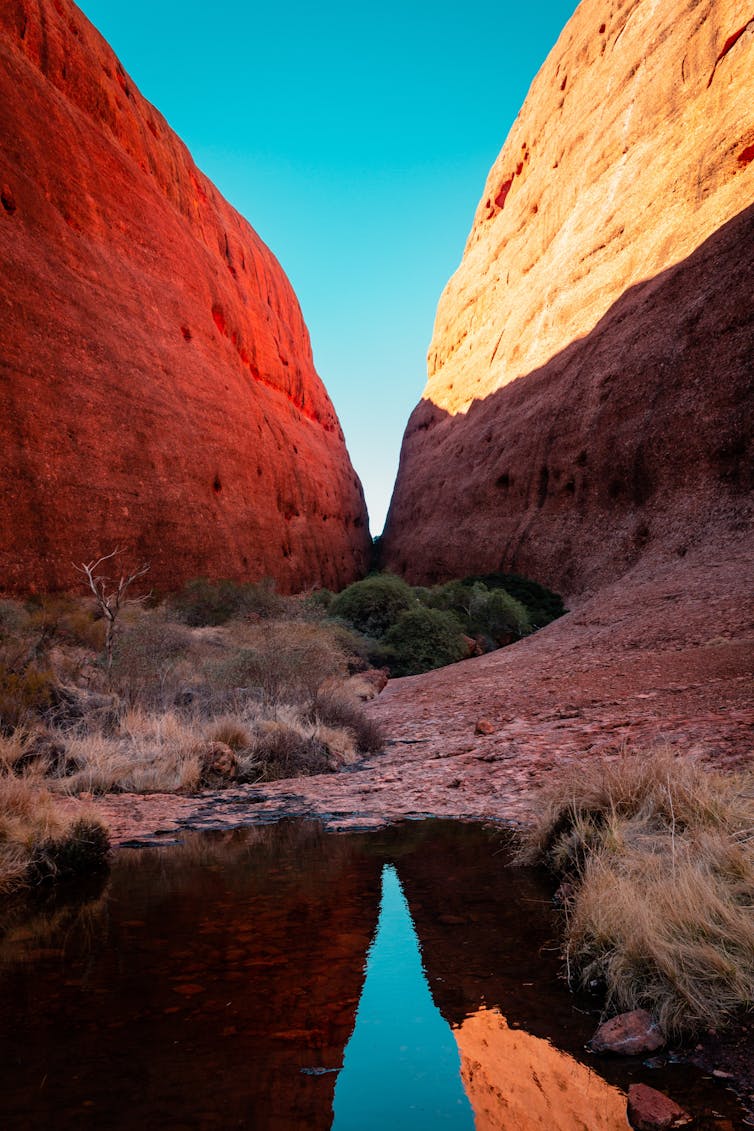
An Enormous Mountain Range Emerged
Each fault rupture moved the rocks so quickly that huge earthquakes shook the ground. Gradually, these faults uplifted an enormous mountain range. It was called the Petermann mountains, and it was unlike anything in Australia today.
The mountains were hundreds of kilometres long and five kilometres high, more akin to the Indian Himalaya than Australia’s Great Dividing Range.
They were mostly made of granite, a rock that crystallises from molten rock (magma) deep underground. This granite was pushed up to the surface in the mountain-building process. Normally, mountains would be covered in vegetation, but 550 million years ago land plants had not yet evolved, meaning these mountains were probably bare.
Boulders Cracked Off, An Ocean Formed
Bare mountains weather quickly because they are more exposed to rain and wind. Big cracks formed in the granite, splitting away rocks and boulders, which fell into rivers gushing down deep valleys carved into the mountain.
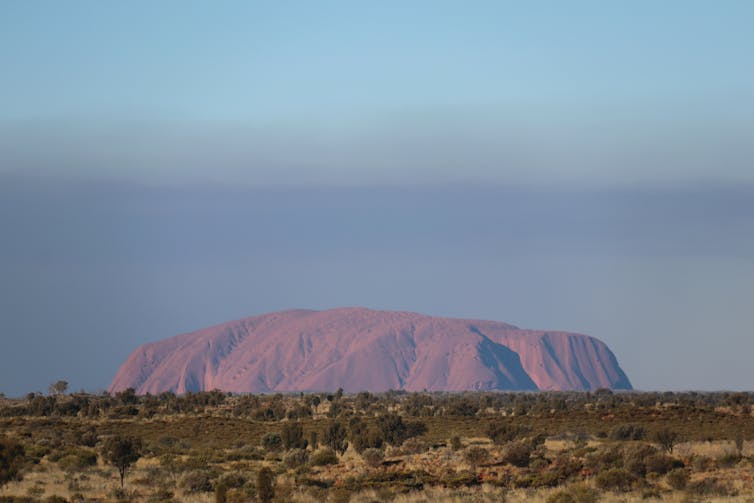
As the eroded rocks tumbled in the torrential water, they broke apart, until only grains of sand remained, like the sand you see on the bottom of a river bed. These huge braided rivers came off the northern side of the Petermann mountains and snaked across the landscape until the rivers entered a low-lying region, called a sedimentary basin.
When the river reached the basin, the sediment from the mountains dropped out of the water, depositing layer upon layer of sand. The weight of it pushed down on the underlying rock, causing the basin to deepen until it was kilometres thick.
The overlying layers compacted the sand deposited previously, forming a rock called sandstone. Over time the basin continued to deepen and was covered by water, forming an inland ocean lapping at the foot of the huge mountain range.
Ancient Faults Reawakened, And Uluru Rose From The Ocean
Sediment continued to deposit into the ocean until about 300 million years ago when the ancient faults began to reawaken during a new mountain-building event called the Alice Springs orogeny.
The thick layers of sand that had cemented into solid sandstone were uplifted above sea level. Squeezed together by huge tectonic forces, the layers buckled and folded into M-shapes. The apex, or hinge of folds, was compressed more than surrounding rocks, and it is from the hinge of a massive fold that Uluru formed.

Folding and deformation made Uluru strong and able to resist the forces of weathering that eroded the surrounding, weaker rocks, including almost all of the once mighty Petermann mountains. If we could dig underneath Uluru, we would see it is only the very tip of a rock sequence that extends kilometres down under the surface, like a rock iceberg.
Uluru is a sacred site to Anangu and our respect for their deep knowledge and ownership of this land means we no longer climb Uluṟu.
But even if we could, why would we want to? Uluru’s magic is most evident when you stand at its base, look up, and picture in your mind the enormous forces that conspired to form it.![]()
Melanie Finch, Lecturer in Structural Geology and Metamorphism, Monash University and Andrew Giles, Assistant lecturer, Monash University
This article is republished from The Conversation under a Creative Commons license. Read the original article.
AvPals: Suspension Of Activities Until March 2022
 AvPals regret to announce the suspension of all our activities until March 2022. This is of course due to the ongoing Covid issues. We can see no reason why we should not resume normal training in early March 2022 and we invite you to follow this webpage or read our newsletters. Subscribe HERE if you do not receive our newsletters.
AvPals regret to announce the suspension of all our activities until March 2022. This is of course due to the ongoing Covid issues. We can see no reason why we should not resume normal training in early March 2022 and we invite you to follow this webpage or read our newsletters. Subscribe HERE if you do not receive our newsletters.New ‘Council Of Elders’ To Champion Concerns Of Older Australians
Dried Goji Berries May Provide Protection Against Age-Related Vision Loss
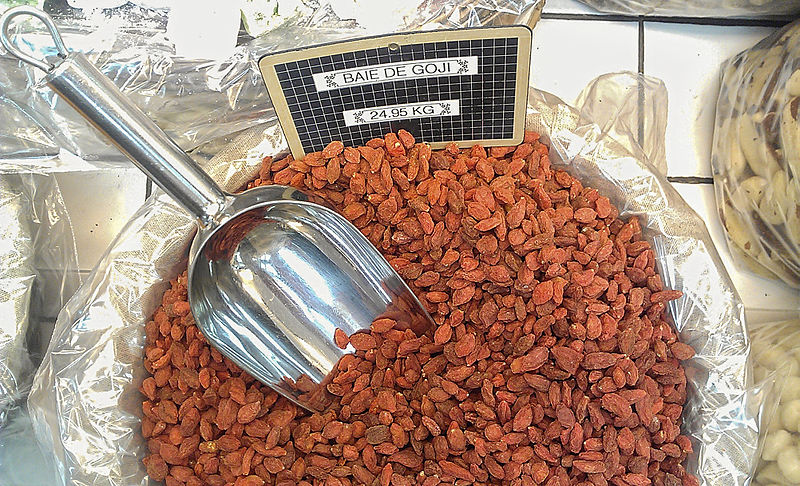
Exercise Alters Brain Chemistry To Protect Aging Synapses

Heart Disease Causes Early Brain Dysfunction And Can Treble Key Alzheimer’s Protein
Study Finds Anticoagulant Has Beneficial Side-Effects For COVID-19 Patients
Under A Moon Spell: Shark Attacks Related To Lunar Phases
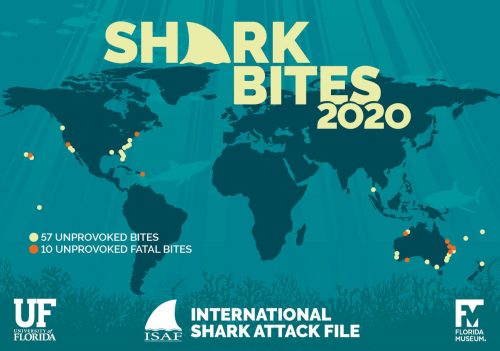 While the exact cause remains unclear, the researchers found that more shark attacks than average occur during periods of higher lunar illumination and fewer attacks than average occur during periods of lower illumination. Many different types of animals show behaviours that are linked to moon phases yet few studies to date have looked at the connections between lunar phases and shark attacks.
While the exact cause remains unclear, the researchers found that more shark attacks than average occur during periods of higher lunar illumination and fewer attacks than average occur during periods of lower illumination. Many different types of animals show behaviours that are linked to moon phases yet few studies to date have looked at the connections between lunar phases and shark attacks.Changes In Sleep And Biological Rhythms From Late Pregnancy To Postpartum Linked To Depression And Anxiety
How A Contagious Cancer Spread Among Clams
Scientists Uncover 'Resistance Gene' In Deadly E. Coli
One In Five Future Thyroid Cancers Linked To Excess Weight
Epstein-Barr Virus May Be Leading Cause Of Multiple Sclerosis
Who are the ‘Original Sovereigns’ who were camped out at Old Parliament House and what are their aims?
Toni Hassan, Charles Sturt UniversityThe politics swirling around Canberra’s Aboriginal Tent Embassy – set up on the lawns opposite Old Parliament House 50 years ago – have always been complex.
These politics got more layered this summer when protesters not formally connected to the embassy – people calling themselves the Original Sovereigns – defaced and allegedly set fire to the main entrance of Old Parliament House.
The Original Sovereigns come out of the so-called Original Sovereign Tribal Nation Federation (OSTNF) in Australia. The Federation blends with and borrows from the global Sovereign Citizens (SovCits) movement.
Indigenous custodians of the Canberra region have rejected any connection to the Original Sovereigns, embarrassed and upset by what they see as a lack of respect shown by the interstate visitors to the capital.
From mid-December the Original Sovereigns set up a camp they called Muckudda (interpreted as “storm coming”) near but separate from the Aboriginal Tent Embassy.
They took their protest to the gates of Government House on Tuesday, led by a spokesperson, Indigenous activist Bruce “Buddy” Shillingsworth Jnr. On Thursday they went to Parliament House on Capital Hill, where they clashed with police.
On Friday, police began to dismantle the Muckudda camp. Shillingsworth Jnr was arrested and appeared in court charged with abetting arson related to the December 30 fire. He pleaded not guilty.
Twists On Notions Of Sovereignty
Indigenous Australians have long asserted Aboriginal sovereignty was never ceded on the continent. However, ideas around sovereignty, statehood and self-government differ among First Nations peoples.
Sovereign citizens also assert the authority of the Australian state is illegitimate. Their reasons and interpretations of the law are often convoluted and conspiratorial.
According to US lawyer Caesar Kalinowski, the global movement has “no leader, no central repository for ideas, and no unifying collective mission, with most adherents gaining their information through nebulous webpages or YouTube videos”.
The movement, which originated among farmers in the US midwest, has ties to right-wing patriot or militia movements. SovCits members believe, among other things, that federal attempts to protect the environment and regulate gun ownership (and more recently mandate vaccines) interfere with their civil or constitutional liberties.
In Australia, the SovCits have tried to connect with Aboriginal and Torres Strait Islander people to gain the credibility that comes from assertions of Indigenous sovereignty.
Just how formally enmeshed members of the Original Sovereign Tribal Nation Federation are with the SovCits movement is unclear, likely made deliberately opaque by members, but they do adopt concepts and rhetoric from one another.
Both groups have deep suspicions of mainstream media and both employ similar tactics, such as targeting buildings that symbolise political power. Across the interconnected groups, there’s a fair amount of testosterone, anger and ego.
There are regular lived-streamed forums bringing together Indigenous and non-Indigenous people involved with the now dismantled Muckudda Camp. When followers have questioned the group’s aims, organisers point to the actions of the Yidindji Tribal Nation in Northern Queensland. This group has renounced legal ties with the Commonwealth and began a process from 2014 to secede from Australia. Yidinji has its own ministers, identity cards and law enforcement agency.
But the so-called Original Sovereigns have little or nothing to do with current Tent Embassy caretakers. The embassy, which has had periods of latency since 1972, has been more active since 2000 as a vigil promoting First Nations sovereignty. It has a self-appointed committee, with its own power struggles and fundraising drives.
The embassy, which is included on the Commonwealth Heritage List, is a potent place where activists and subcultures of all kinds are drawn – a visible soapbox. Others go there because they are homeless.
Social media exchanges involving members connected to the Muckudda Camp continue to talk up plans to #TakeOldParliment, inspired by the Capitol Hill insurrection in Washington.
Ties To Political Conservatives
The Original Sovereign Tribal Federation was formed in 2010 by Mark McMurtrie (who also goes by the name Dunham Badi Jakamarra). McMurtrie claims Indigenous heritage and that he’s been initiated into Warlpiri Law of the Northern Territory.
The Federation’s website says it has a treaty with a “large number of tribes”. It aims to unite the “original society nationally” and “expose the fraud being conducted against the tribes on behalf of the Crown Corporation by its UK and Australian parliaments”.
In 2020, the Federation signed a memorandum of understanding with the fledgling Great Australian Party led by former One Nation senator Rod Culleton.
The Federation and the Great Australian Party declared in a media release “the current state and federal governments of Australia are operating without license”.
Members of the Federation have also been pursued by Australia’s largest anti-vaccine lobby group, Reignite Democracy Australia; a crowd shown to back the United Australia Party’s Craig Kelly and Clive Palmer.
The Federation has set itself up in opposition to an older, more coherent and scholarly movement of First Nations activists called the Sovereign Union.
The Sovereign Union was organised by Ghillar Michael Anderson, an Euahlayi elder from Goodooga in northwest New South Wales. Anderson is the only surviving member of the group that put up the umbrella as the original Tent Embassy. He has a law degree and was once an adviser on First Nations treaties to Liberal Prime Minister Malcolm Fraser.
Anderson has spent many years trying to unite Indigenous nations, working with volunteers and advisers to essentially try and work out how to “put Aboriginal law on top of Australian law”. He puts forward shire councils as a model for what could be done, and promotes the idea of dual citizenship, not secession.
Anderson won’t openly criticise those people drawn to the “Muckudda” resistance camp at Old Parliament House. He told me he has more concern for what he calls “too many conservative blacks who think these [white] fellahs will give us what we want”.
Future Reckoning?
What has panned out in the Tent Embassy precinct in December and January is not black and white.
The destruction to Old Parliament House has added to the mistrust among the pro-sovereignty parties in the Canberra parliamentary zone.
There were plans to “take Old Parliament house” over the weekend, but after Friday’s eviction of the Muckudda Camp, the protest seemed to fizzle out.
Tensions could continue to worsen during commemorative events planned for the 50th anniversary of the Tent Embassy around January 26. In a sign of the new anxieties, the embassy’s caretakers have insisted people who are planning to camp must formally register.
Whatever happens in the midst of a pandemic, the program will rely on the police to keep the peace.![]()
Toni Hassan, Adjunct research fellow, Charles Sturt University
This article is republished from The Conversation under a Creative Commons license. Read the original article.
Sportswashing: how mining and energy companies sponsor your favourite sports to help clean up their image
Robin Canniford, The University of Melbourne and Tim Hill, University of BathFossil fuel and carbon-intensive industries have an image problem. As awareness of their environmental impact grows, energy and mining companies in particular are desperate to maintain control over spiralling levels of public esteem.
For decades, greenwashing has been a go-to tactic for companies seeking to mask their damaging effects on natural environments, and governments across the world have begun to legislate against it.
Nevertheless, another more subtle practice remains in the marketing toolkit: sportswashing. By sponsoring sporting teams or events, organisations harness the positive impacts of sport to wash off negative associations with problems such as environmental degradation and human rights abuses.
In Australia, mining and energy companies often partner with sporting organisations from the grassroots to the elite level. As our research has shown, sports sponsorship is a powerful way to channel the energy of sporting “atmospheres” into brands, diverting attention from firms’ roles in furthering climate change.
So as Australia clinches another Ashes series, let’s take a closer look at how official partners such as Alinta Energy can benefit from sponsoring sporting events.
How Does Sportswashing Work?
Sporting events have long been a site to exert “soft power”. Countries that host the Olympics or the FIFA World Cup, for example, are able to challenge negative global images. Take Qatar: in the lead up to this year’s FIFA World Cup, the nation has taken opportunities to reshape its reputation on a number of issues including human rights.
Sports sponsorship can serve similar purposes for businesses. Mining and energy giants such as Adani, Rio Tinto, Origin, and Woodside all sponsor sports teams and leagues from local to international levels of sport.
Our research shows when companies sponsor sport events, their brands become associated with atmospheres: intense experiences of shared emotion. Over time, sports fans come to associate sponsors’ logos and names with these experiences such that sponsors’ brands become stores of this emotional energy, rather like batteries.
This benefits companies because when people feel emotions in relation to a brand, they’re more likely to remember that brand and become loyal customers. Simultaneously, these positive emotional associations can distract from companies’ problematic connections to a range of issues including climate change and pollution.
Is The Tide Turning Against Sportswashing?
In 2021 a critical report found more than 250 advertising and sponsorship deals between corporate polluters, and leading sports teams and organisations around the world.
The report, by the New Weather Institute, implicated a range of Australian sports events and leagues including the Australian Football League, Australian Baseball League, and the 2021 Australian Tennis Open.
Some condemned the Australian Open for accepting gas giant Santos as an “official natural gas partner”. And last year Comms Declare, an advertising and marketing industry body, said the decision was at odds with Tennis Australia’s commitment to the United Nations Sports for Climate Action Framework.
Surf Life Saving Australia has also been criticised for accepting sponsorship from petrol supplier Ampol, not least because the fossil fuel industry threatens the very coastal environments that surf lifesaving calls home.
Sportspeople are joining these critical voices, too. Former Australian rugby captain and conservationist David Pocock last year criticised Rugby Australia’s decision to accept Santos as the Wallabies’ major sponsor, likening it to tobacco company sport sponsorship in the 1980s.
What Does This Mean For Sport Sponsorships?
As awareness of sportswashing grows, we think sponsorship deals are likely to generate increasing scrutiny from consumers, investors, and from other companies. This will have big implications for companies whose sponsoring partnerships are perceived as sportswashing.
In recent years, sports fans have protested against the owners of sports teams, as well as event organisers, for a range of issues. Research shows that activism can damage revenue and share prices for companies.
More generally, by creating negative media publicity and government attention, sports activism can undo the intended benefits of sponsorship, further damaging brand images.
In some cases, activists have been able to demand policy u-turns. For example, Liverpool FC supporters forced owners to scrap ticket price rises and issue an apology. Whether activists can bring about change in environmental sportswashing remains to be seen.
Nevertheless, it may be time for sports governing bodies, owners and event managers to reconsider contributions from environmentally unsustainable companies. Such sponsorship is at odds with the the cultural value of sporting events and the benefits sport brings to all levels of society.![]()
Robin Canniford, Department of Management & Marketing, The University of Melbourne and Tim Hill, Lecturer in Marketing, University of Bath
This article is republished from The Conversation under a Creative Commons license. Read the original article.
Disclaimer: These articles are not intended to provide medical advice, diagnosis or treatment. Views expressed here do not necessarily reflect those of Pittwater Online News or its staff.